ONE OF A TEAM
DHL Global Forwarding’s Sue Donoghue on Being a True Leader
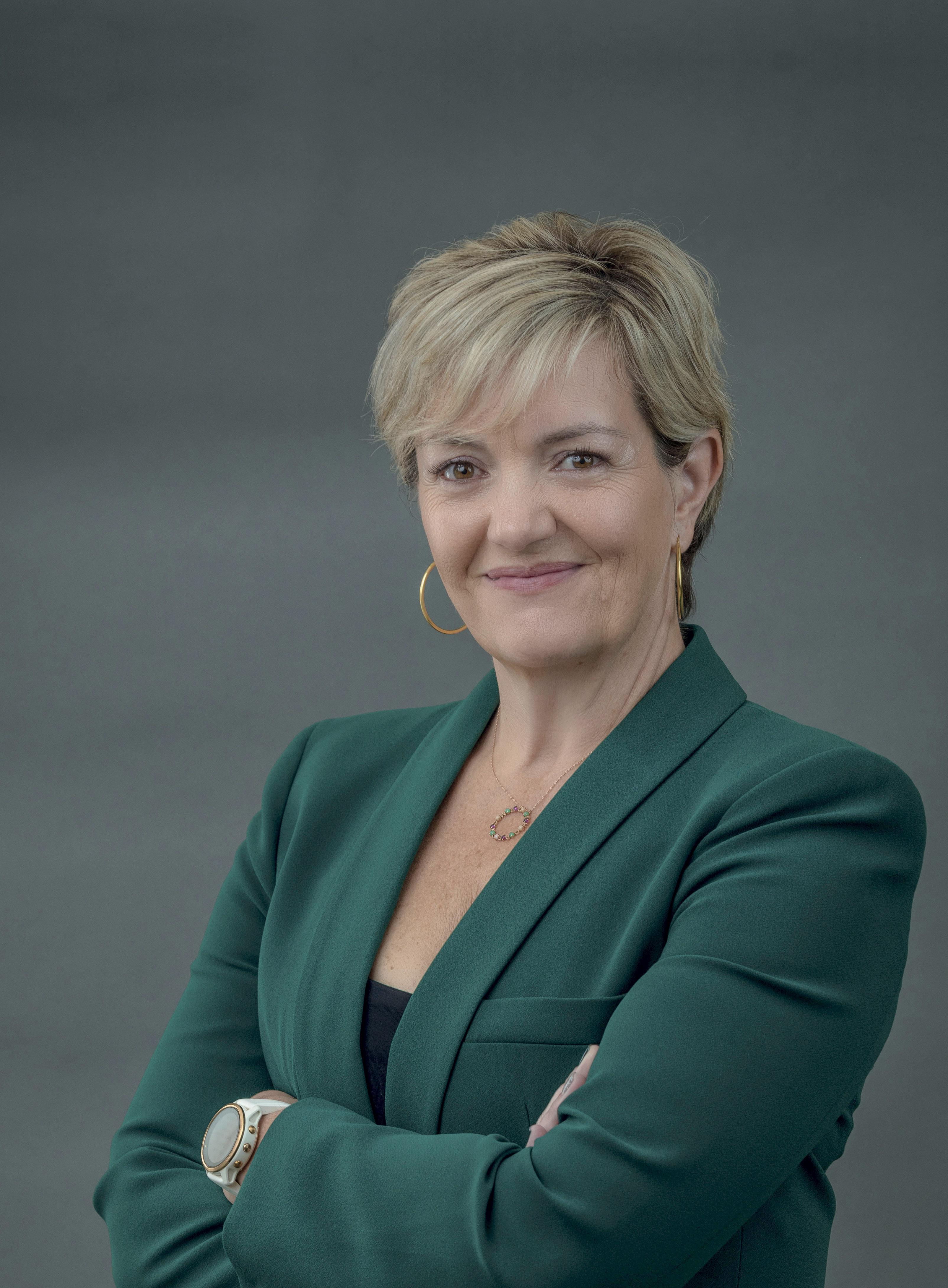
INSIDE THIS ISSUE
New Era for Nuclear
ITER: Engineering Faults, But Logistics Excellence
Hywind Testbed for Mega Offshore
Wind to Open Floodgates
PLUS: Everything from Breakbulk
Middle East’s Phenomenal Success
INDUSTRIAL
Issue 2 2023
PROJECT CARGO BREAKBULK&
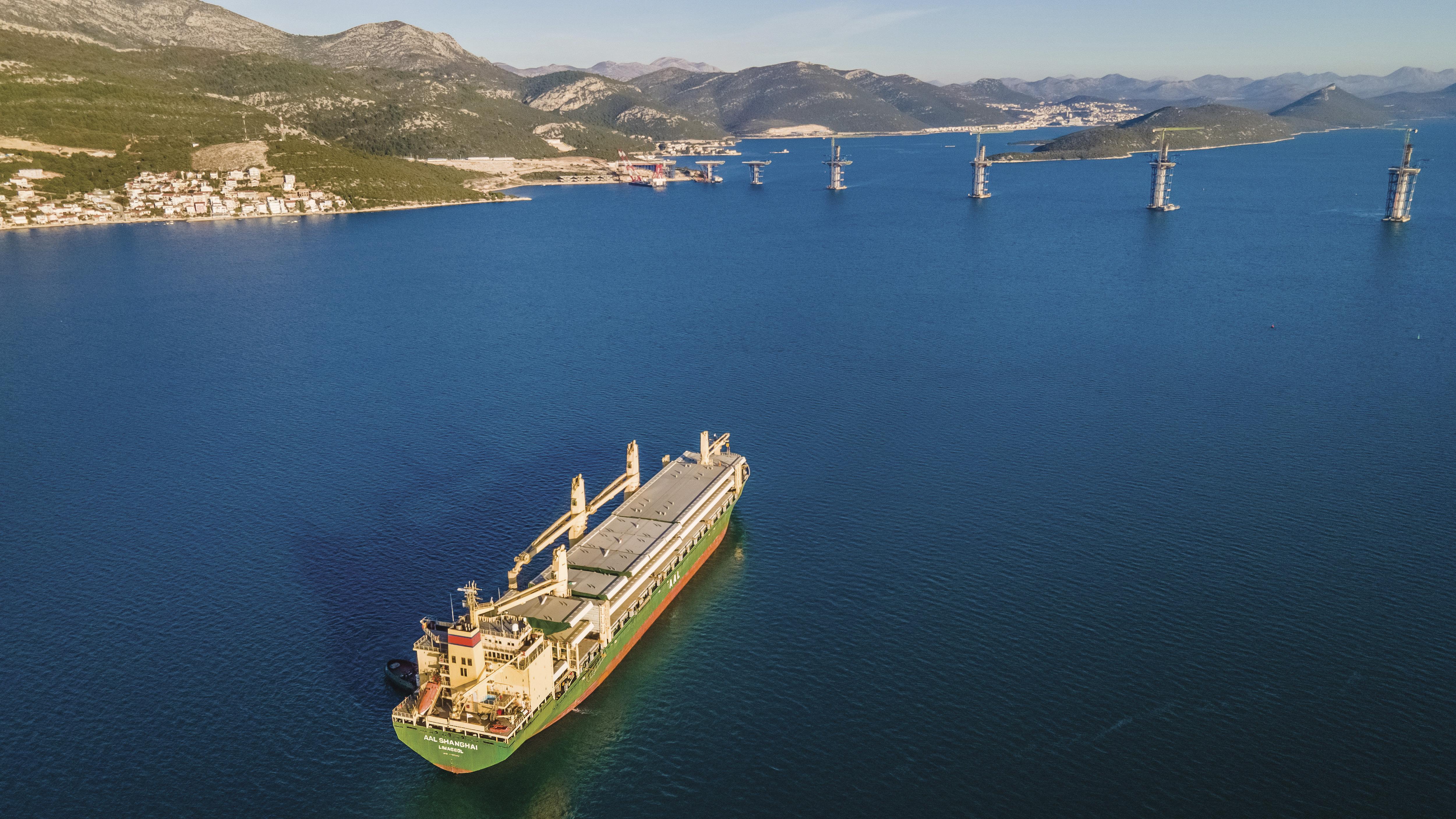
BE AMBITIOUS, BUT BE TRUE TO YOURSELF
DHL’s Sue Donoghue Talks Leadership, People

33 NUCLEAR NEW ERA FOR NUCLEAR Energy Transition, Security Driving New Project Announcements
Mark Your Calendars for Upcoming Breakbulk Events
Breakbulk Europe 6-8 June 2023
Rotterdam Ahoy, Netherlands
Breakbulk Americas 26-28 September 2023
George R. Brown Convention Center, USA
Breakbulk Middle East 12-13 February 2024
Dubai World Trade Centre, UAE
37 BREAKBULK PROJECTS STEPHEN SPOLJARIC, CORPORATE MANAGER OF GLOBAL LOGISTICS, BECHTEL NO EXCUSE FOR EMISSIONS CONFUSION Project Kick-started to Standardize Reporting Parameters
38 SPACE AIMING FOR THE PROJECT STARS Europe’s Space Ambitions Lean on Logistics
44 LOGISTICS ENGINEERING FAULTS, BUT LOGISTICS EXCELLENCE Seminal ITER Project Hit by Delays
48 THOUGHT LEADER TON KLIJN, DIRECTOR, ESTA DON’T LEAVE CRANE OPERATING STANDARDS TO CHANCE

Plea to Back ESTA’s European License
49 THOUGHT LEADER HILDE MOL-LUKKEZEN, MARKETING AND COMMUNICATIONS MANAGER, OMDS PATH TO A DIGITAL FUTURE Simplifying Breakbulk Data Sharing
50 THOUGHT LEADER LEIF ARNE STRØMMEN, PARTNER, PEAK GROUP AS PROJECTS READY FOR LIFT-OFF 2023’s Lull a Springboard for 2024’s Boom
52 OUTLOOK MORE OPPORTUNITIES THAN RISKS AHEAD
Industry Experts Share Breakbulk Sector Outlooks
INSIDE THIS ISSUE
Story 30
Cover
54
CREDIT: MAMMOET
www.breakbulk.com BREAKBULK MAGAZINE 3
54 RENEWABLES OFFSHORE WINDS BLOW FAVORABLY Testbed for Mega Offshore Wind to Open Floodgates
56 CASE STUDY: BERTLING LOGISTICS OVERCOMING AN AIR DRAFT CHALLENGE Project Calls for Careful Calculations to Ensure Bridge Clearance
60 VEHICLE CARRIERS RECHARGING US ELECTRIC VEHICLE EXPORTS Biting Point for Breakbulk Car Sales
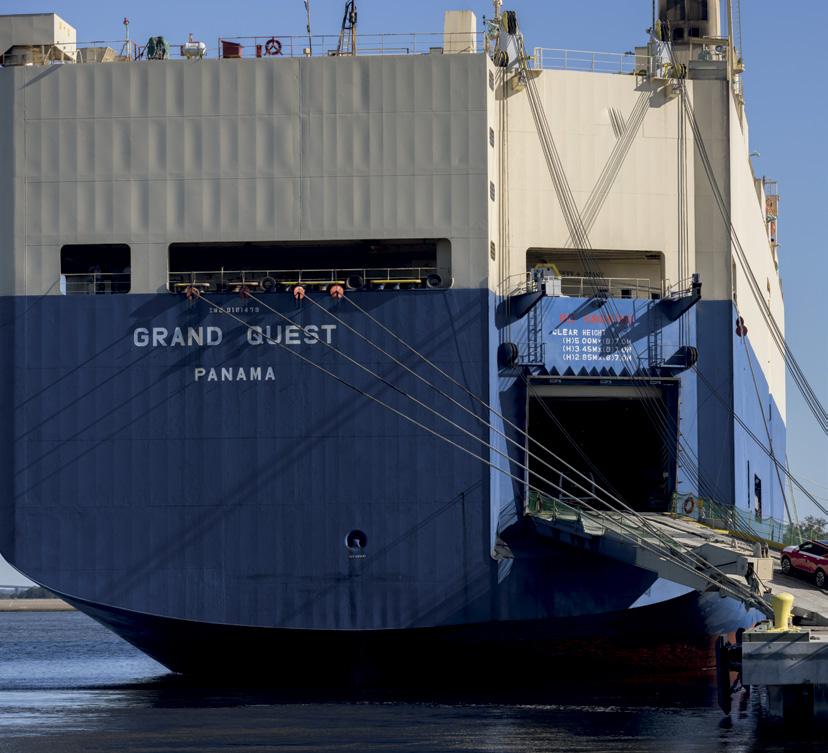
64 MINING SOUTH AMERICA’S WHITE GOLD RUSH Project Potential in Region’s Flourishing Lithium Sector
68 CONFERENCE BREAKBULK MIDDLE EAST REVIEW
A Selection of Stories from Breakbulk Middle East Sessions

72 SAUDI ARABIA SAUDI DIGS DEEP ON MINING AMBITIONS
Political Support Catalyzes Project Cargo Demand

74 CASE STUDY: AAL SHIPPING THREE ENGINEERS’ HEADS BETTER THAN ONE Early Logistics Engagement Pays Dividends for Reclaimer Move
80 BACK PAGE PROJECTS IN THIS ISSUE
INSIDE THIS ISSUE
Also in this issue 06 EDITORIAL 08 GLOBAL SHIPPER NETWORK MEMBERS, EVENT PARTNERS AND EXHIBITORS IN THIS ISSUE 09 UPFRONT 78 BREAKBULK ONE 74 CREDIT: AAL SHIPPING 60 72 CREDIT:
CREDIT:
4 BREAKBULK MAGAZINE www.breakbulk.com ISSUE 2 / 2023
STEVE MORTON, GPA
SWIRE SHIPPING
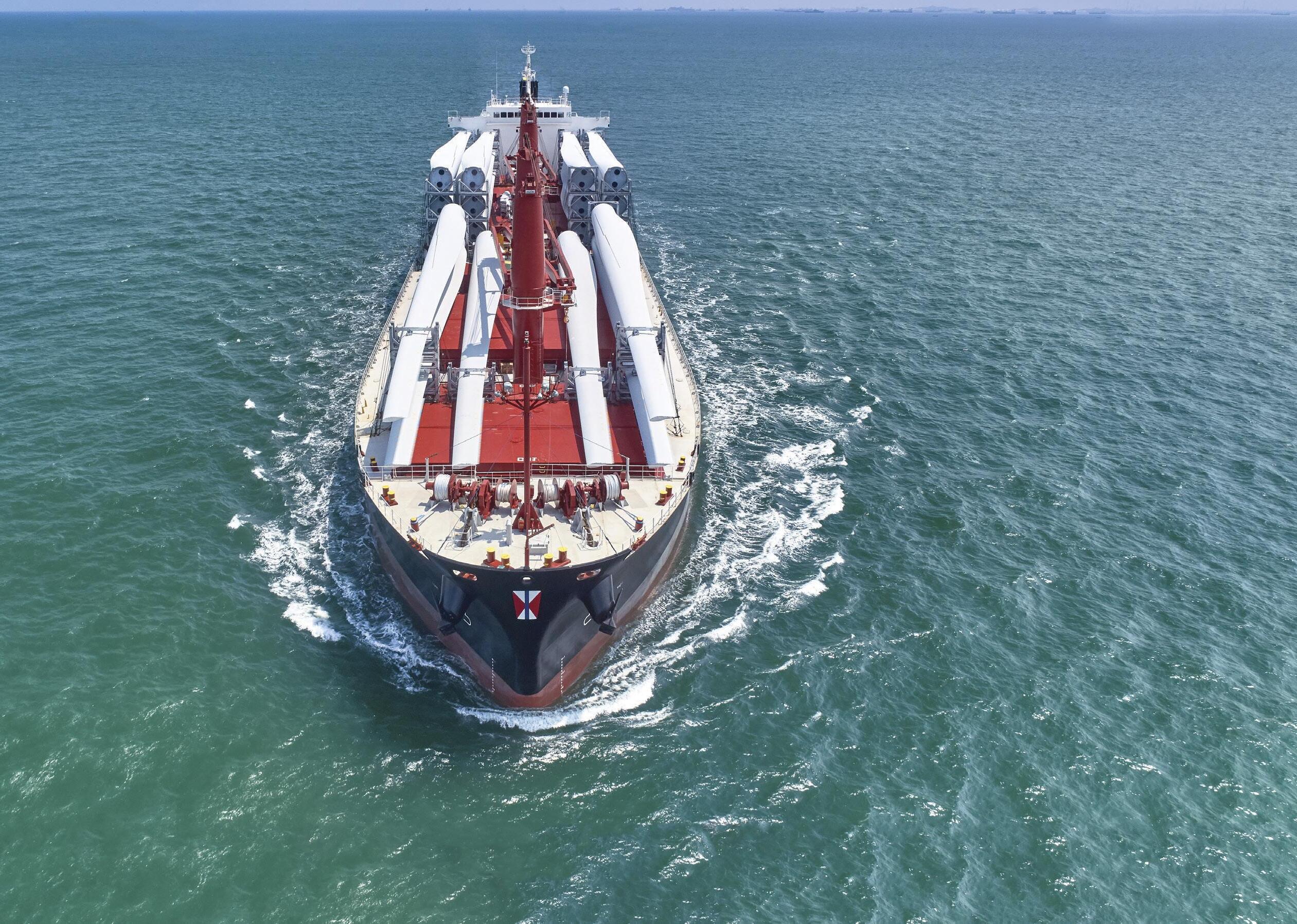
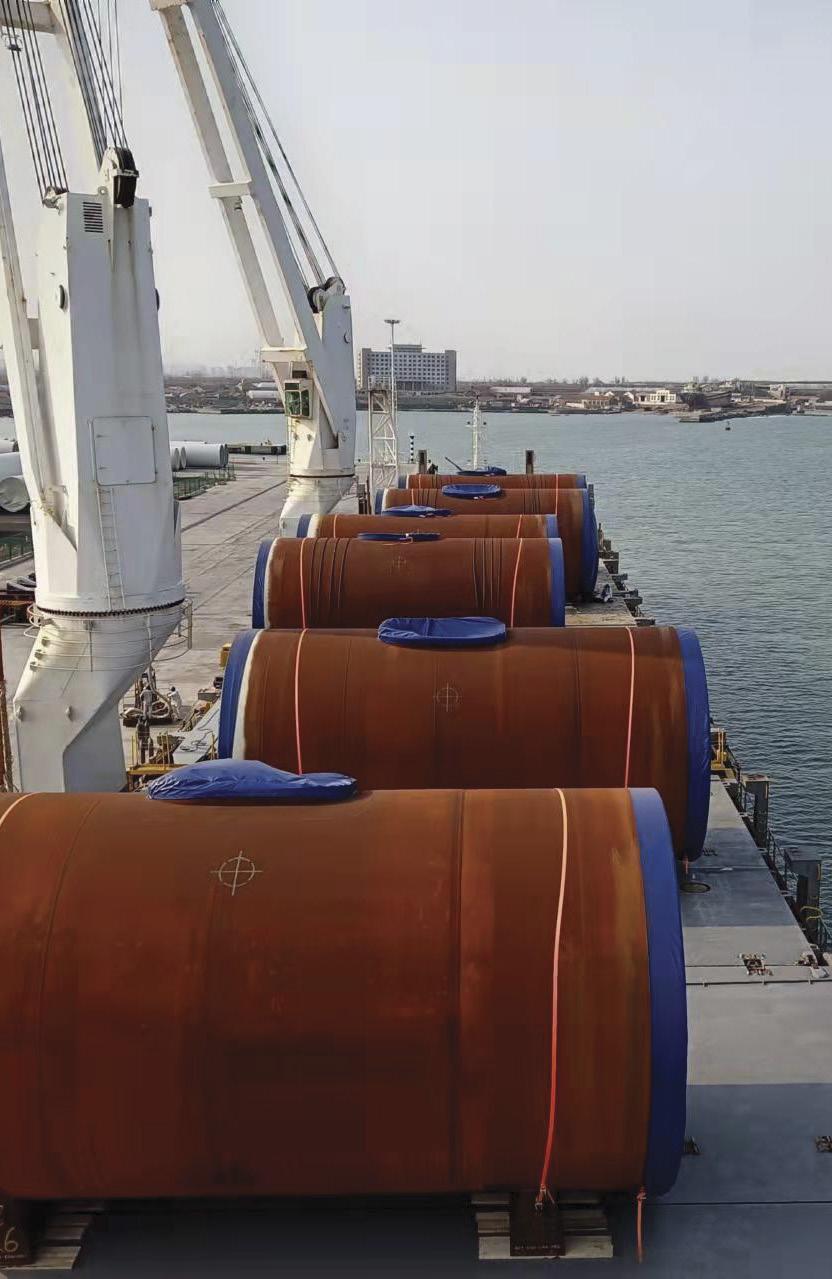
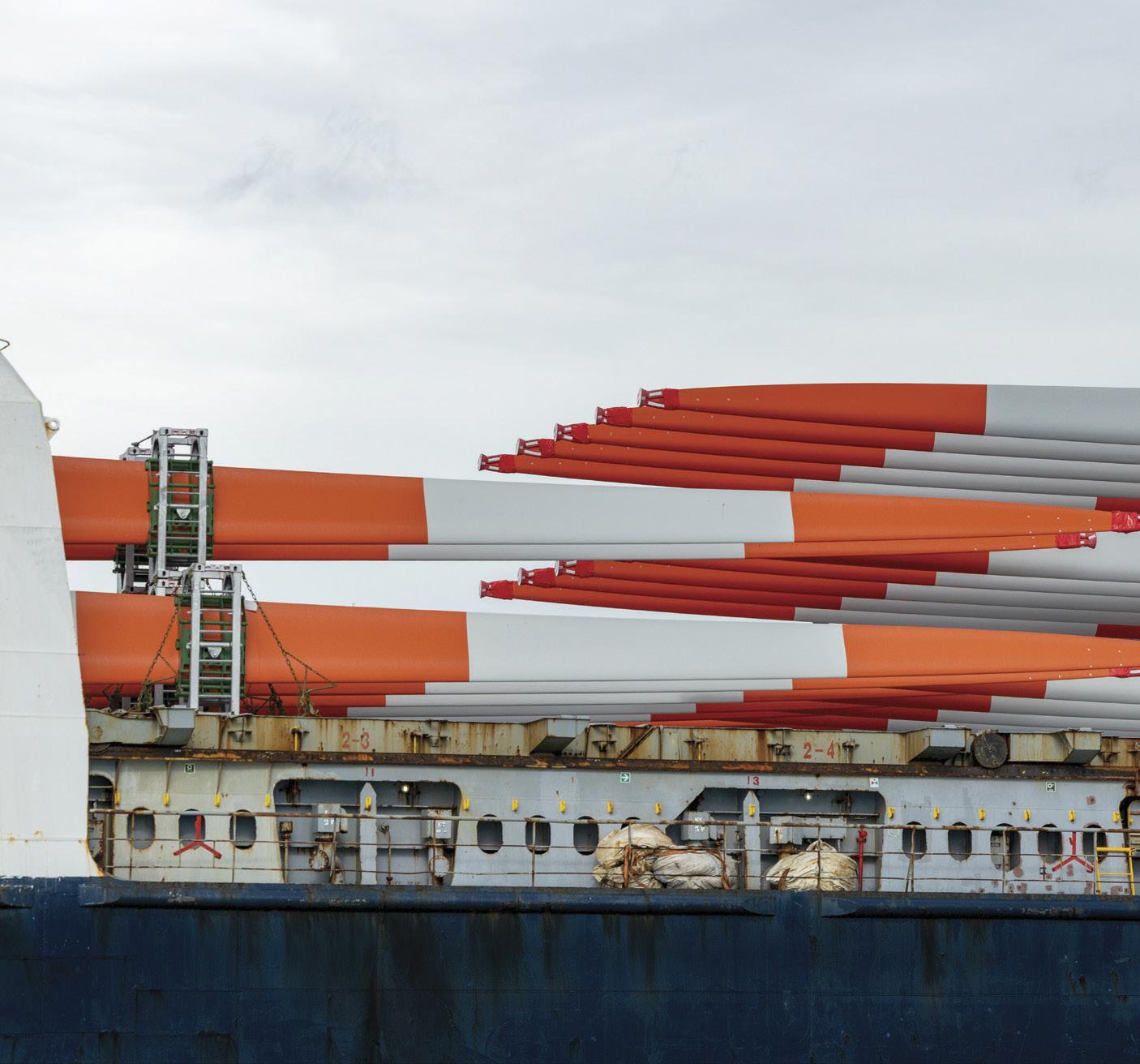
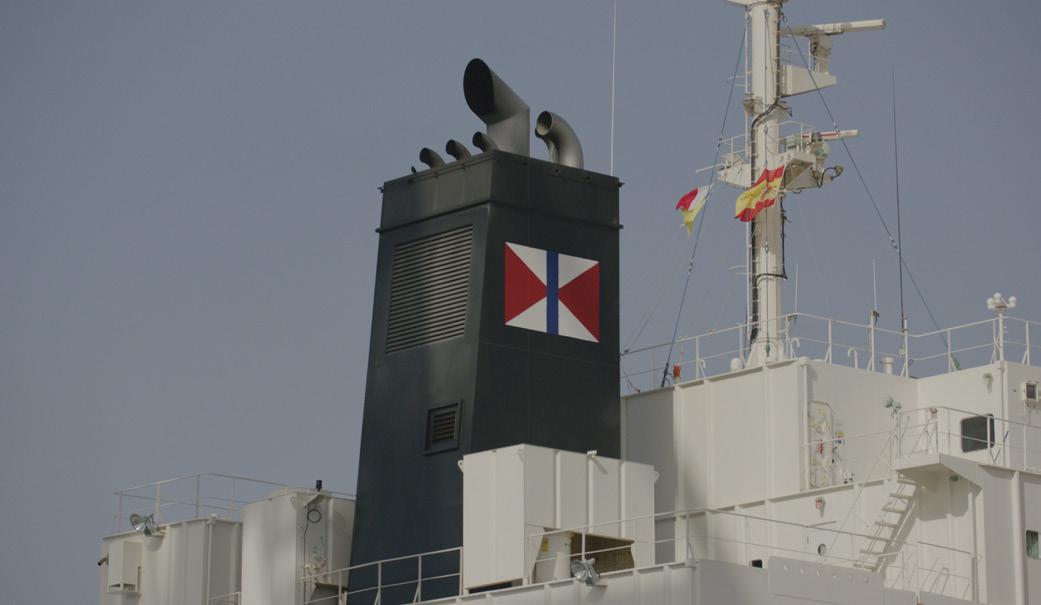

www.swireprojects.com chartering@swireprojects.com A division of Swire Shipping, a private and wholly owned company of John Swire & Sons. MOVING THE FUTURE Efficient, trusted and flexible shipping solutions for global industrial projects.
NAVIGATING TRANSITIONS TOGETHER
Welcome to the second issue of Breakbulk Magazine for 2023, where we celebrate the success of Breakbulk Middle East and look forward to our flagship event, Breakbulk Europe in June, followed by Breakbulk Americas in September. Moving from one event to the next, our team is in a constant state of transition, similar to what we see throughout the project cargo and breakbulk industry.
Breakbulk magazine looks at hot topics for the industry determined by people like you who work in the field – industry professionals who are members of our advisory boards around the world, who speak on panels, and those we meet at the events themselves, plus a host of experts at large. Most recently, our editorial team attended Breakbulk Middle East in Dubai, an event that saw twice as many attendees compared with previous years. (See the event’s success in numbers on page 10.)
Led by senior reporter Simon West, the team had numerous conversations with industry leaders who contributed their insights into some of the stories you’ll find inside this issue, such as “Saudi Digs Deep on Mining Ambitions” on page 72, and of course, the cover story featuring DHL’s Sue Donoghue on page 30. Sue said she never saw herself becoming a CEO of a Middle East cluster for a global logistics company, but her leadership skills revealed themselves early: as a Brownie (part of Girlguiding for ages 7-10) in the UK, and later as a Scout leader and swim coach. Now that’s a transition worth understanding for leaders, especially female ones, everywhere.
But these conversations not only provided material for region-related issues. With 98 countries represented
at the event, there were plenty of opportunities to speak face-toface with leaders from Europe, the Americas and the rest of the world.
Renewables as part of the energy transition is a hot topic everywhere and one that features prominently in this issue. For an overview of energy investment across the GCC, see Ryan McPherson’s take on page 68. Offshore wind projects often dominate the renewables discussion, and you can read about Hywind Tampen, a testbed for floating wind technology in the North Sea on page 54.
The article, “Offshore Winds Blow Favorably,” sets the stage for a crucial session at Breakbulk Europe called “Managing the Offshore Wind Boom.” The session will host panelists from the 2022 wind session to discuss the impending capacity shortfall for transporting wind components. In preparation for the panel, the panelists formed a workgroup to find solutions to these challenges. We filmed the workgroup in Rotterdam, and you can check out their progress here: https:// youtu.be/lN_lna2gvlA . In the next issue, we will feature the workgroup in detail, and you’ll have a chance to meet them in person at Breakbulk Europe.
Nuclear is having a moment as well, becoming an integral part of the energy transition as you’ll see on page 33. Further off is fusion technology and we look at the progress, delays and logistics triumphs of the ITER project in France on page 42.
There’s so much to absorb in this issue. If you take the time to read it from cover to cover, I promise you’ll come away with information you can apply now in whatever sector of the industry you’re working in. And I hope that this new knowledge will help smooth the transitions you’re facing today.
Best wishes,
Leslie Meredith Editorial Director
EDITORIAL DIRECTOR
Leslie Meredith / +1 (801) 201-5971 Leslie.Meredith@breakbulk.com
NEWS EDITOR
Carly Fields carly.fields@hyve.group
SENIOR REPORTER
Simon West simon.west@hyve.group
DESIGNER Mark Clubb
REPORTERS
Asma Ali Zain
John Bensalhia
Amy McLellan
Iain MacIntyre
Lori Musser
Malcolm Ramsay
Thomas Timlen
Liesl Venter
BREAKBULK EDITORIAL ADVISORY BOARD
John Amos, emeritus
Amos Logistics
Dennis Devlin Maersk
Dharmendra Gangrade
Larsen & Toubro Limited
Margaret Kidd
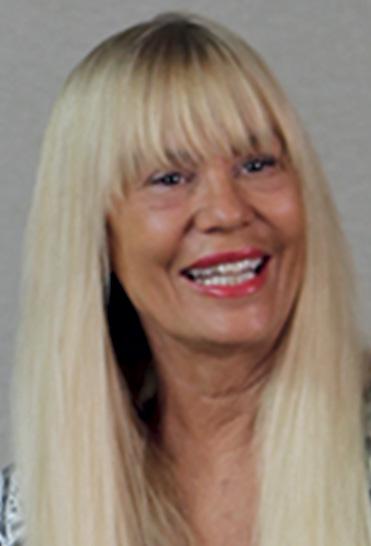
University of Houston
Anders Maul
Blue Water Shipping
Dennis Mottola, emeritus Global Logistics Consultant
Sarah Schlüter Hapag-Lloyd
Stephen “Spo” Spoljaric Bechtel Corp
Roger Strevens
Wallenius Wilhelmsen
Jake Swanson
DHL Industrial Projects
Ulrich Ulrichs BBC Chartering
Johan-Paul Verschuure
Rebel Group
Grant Wattman Combi Lift Americas
PORTFOLIO DIRECTOR
Jessica Dawnay
Jessica.Dawnay@breakbulk.com
MARKETING & MEDIA DIRECTOR
Leslie Meredith leslie.meredith@hyve.group
To advertise in Breakbulk Media products, visit: http://breakbulk.com/page/advertise
SUBSCRIPTIONS
To subscribe, go to https://breakbulk.com/ page/breakbulk-magazine
A publication of Hyve Group plc. The Studios, 2 Kingdom Street Paddington, London W2 6JG, UK
6 BREAKBULK MAGAZINE www.breakbulk.com ISSUE 2 / 2023
EDITORIAL
Leslie Meredith
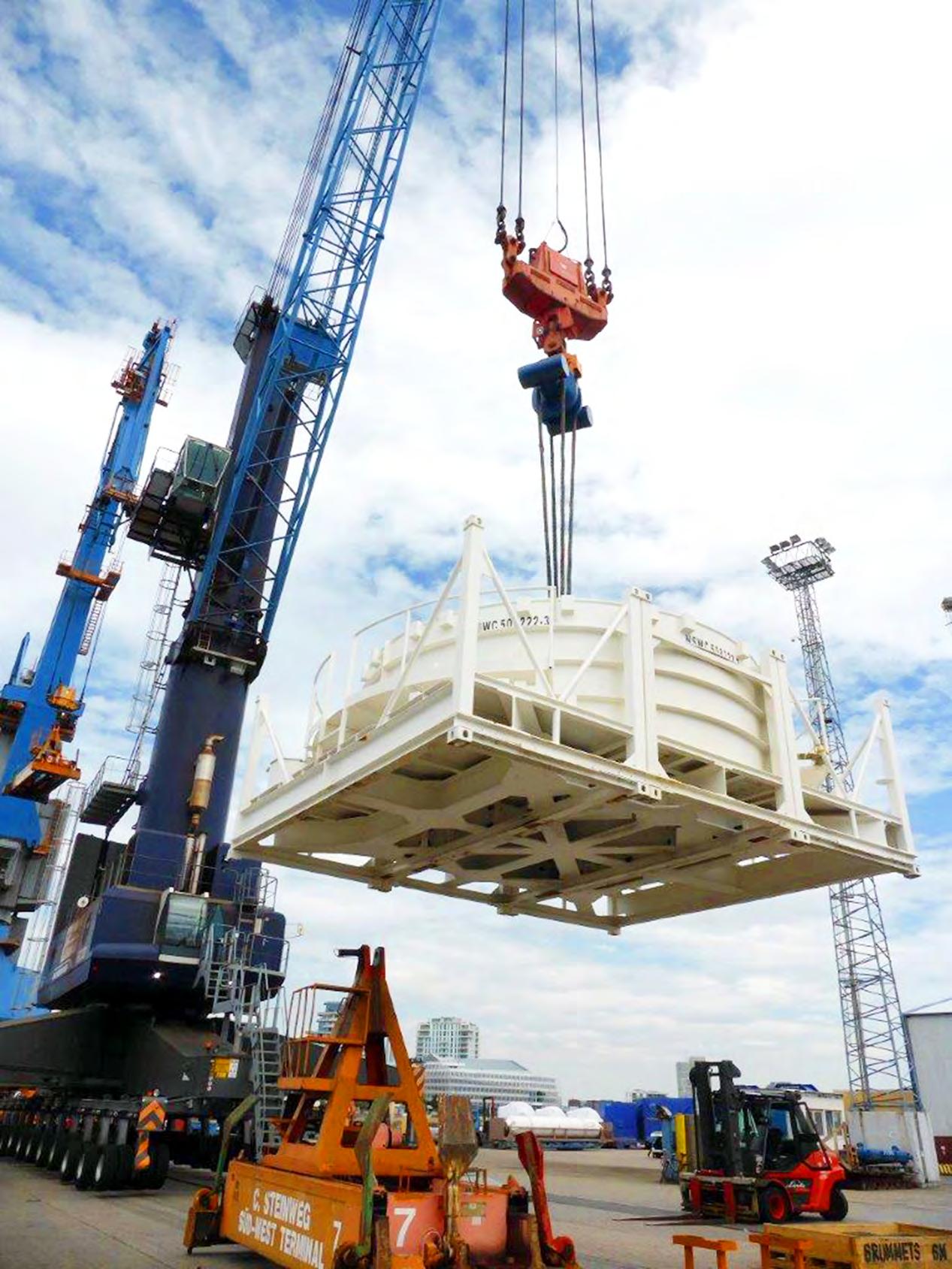

Est.2004 Membership Available in Selective Markets! Application: info@gpln.net / www.gpln.net Visit us at Breakbulk Europe Rotterdam, The Netherlands 6-8 June 2023 GPLN Booth No: 1A20 ProudGPLNMemberinGermany Since2019
Global Shipper Network Members
Bechtel: New Era for Nuclear, page 33; No Excuse for Emissions Confusion, page 37
Fluor: New Contracting Methods Needed Post-pandemic, page 69
GE: New Era for Nuclear, page 33
Petrofac: Adaptability Needed to Meet Market Challenges, page 70
Rio Tinto: South America’s White Gold Rush, page 64
Shell: Shell, Technic and Zachary to Engineer Texas CCP Project, page 79
Siemens Gamesa: Offshore Winds Blow Favorably, page 52
SLB: Movers and Shakers, page 20
Technip: Shell, Technic and Zachry to Engineer Texas CCP Project, page 79
thyssenkrupp Industrial Solutions: Three Engineers’ Heads Better Than One, page 74
Westinghouse: New Era for Nuclear, page 33
Zachry: Shell, Technic and Zachry to Engineer Texas CCP Project, page 79
Breakbulk Global Event Partners
(Exhibiting at all three Breakbulk events this year)
AAL Shipping: Movers and Shakers, page 20; Flexibility, Adaptability Needed to Meet Market Challenges, page 70; Job Hunting? ‘Don’t Pigeonhole Yourself’, page 71; Three Engineers’ Heads Better Than One, page 74
DHL Global Forwarding: Be Ambitious, But Be True to Yourself, page 30; Ship Capacity Challenges Coming to a Head, page 18; Adaptability Needed to Meet Market Challenges, page 70
Mammoet: Offshore Winds Blow Favorably, page 54; Don’t Leave Crane Operating Standards to Chance, page 48; Mammoet Installs First Villa at Luxury Resort, page 78
MSC Mediterranean Shipping Company: Adaptability Needed to Meet Market Challenges, page 70
Wilhelmsen group/Wallenius Wilhelmsen: Recharging US Electric Vehicle Exports, page 60; Wilhelmsen Targets DoubleDigit Growth in 2023, page 28
Breakbulk Europe Exhibitors
A.P. Moller-Maersk: Movers and Shakers, page 20
Bertling Logistics: Overcoming an Air Draft Challenge, page 56
Blue Water Shipping: Movers and Shakers, page 20
deugro: New Contracting Methods Needed Post-pandemic, page 69
dship Carriers: Movers and Shakers, page 20
Expeditors: Job Hunting? ‘Don’t Pigeonhole Yourself’, page 71
Harren Group/Jumbo-SAL-Alliance: ITER: Engineering Faults, But Logistics Excellence, page 44
The Heavy Lift Group: South America’s White Gold Rush, page 64
NYK Line: Movers and Shakers, page 20
Port of Rotterdam: Europe Outlook, page 52
Port of Venice: ITER: Engineering Faults, But Logistics
Excellence, page 44
Roll Group: Overcoming an Air Draft Challenge, page 56; Movers and Shakers, page 20
Sallaum Lines: Movers and Shakers, page 20
Swire Shipping: Saudi Digs Deep on Mining Ambitions, page 72; Swire Projects Launches New Australia Route, page 79
United Heavy Lift: New Contracting Methods Needed Postpandemic, page 69

Breakbulk Americas Exhibitors
Bertling Logistics: Overcoming an Air Draft Challenge, page 56
dship Carriers: Movers and Shakers, page 20
NYK Line: Movers and Shakers, page 20
Port of Portland: Recharging US Electric Vehicle Exports, page 60
Sallaum Lines: Movers and Shakers, page 20
Breakbulk Middle East Exhibitors
BBC Chartering: Adaptability Needed to Meet Market Challenges, page 70
Bertling Logistics: Overcoming an Air Draft Challenge, page 56
deugro: New Contracting Methods Needed Post-pandemic, page 69
DSV: Movers and Shakers, page 20
Expeditors: Job Hunting? ‘Don’t Pigeonhole Yourself’, pp 71
IMGS Group: IMGS Group Expands Dubai Operations, page 23
MLB Shipping: New Contracting Methods Needed Postpandemic, page 69
Multimax Shipping: Multimax Looks to Beef Up Fleet, page 22
RAK Ports: Movers and Shakers, page 20
Roll Group: Overcoming an Air Draft Challenge, page 56
SPARK: Saudi Digs Deep on Mining Ambitions, page 72
IN THIS ISSUE 8 BREAKBULK MAGAZINE www.breakbulk.com ISSUE 2 2023
CREDIT: SWIRE SHIPPING
The People and Businesses that Lead This Thriving Industry
UpFront
WHAT’S INSIDE:
From the Sidelines at Breakbulk Middle East Movers & Shakers
Conversations with DHL’s Andy Tite, AAL’s Christophe Grammare, Chapman Freeborn’s Sharon Vaz-Arab, and more New Faces at Breakbulk Europe
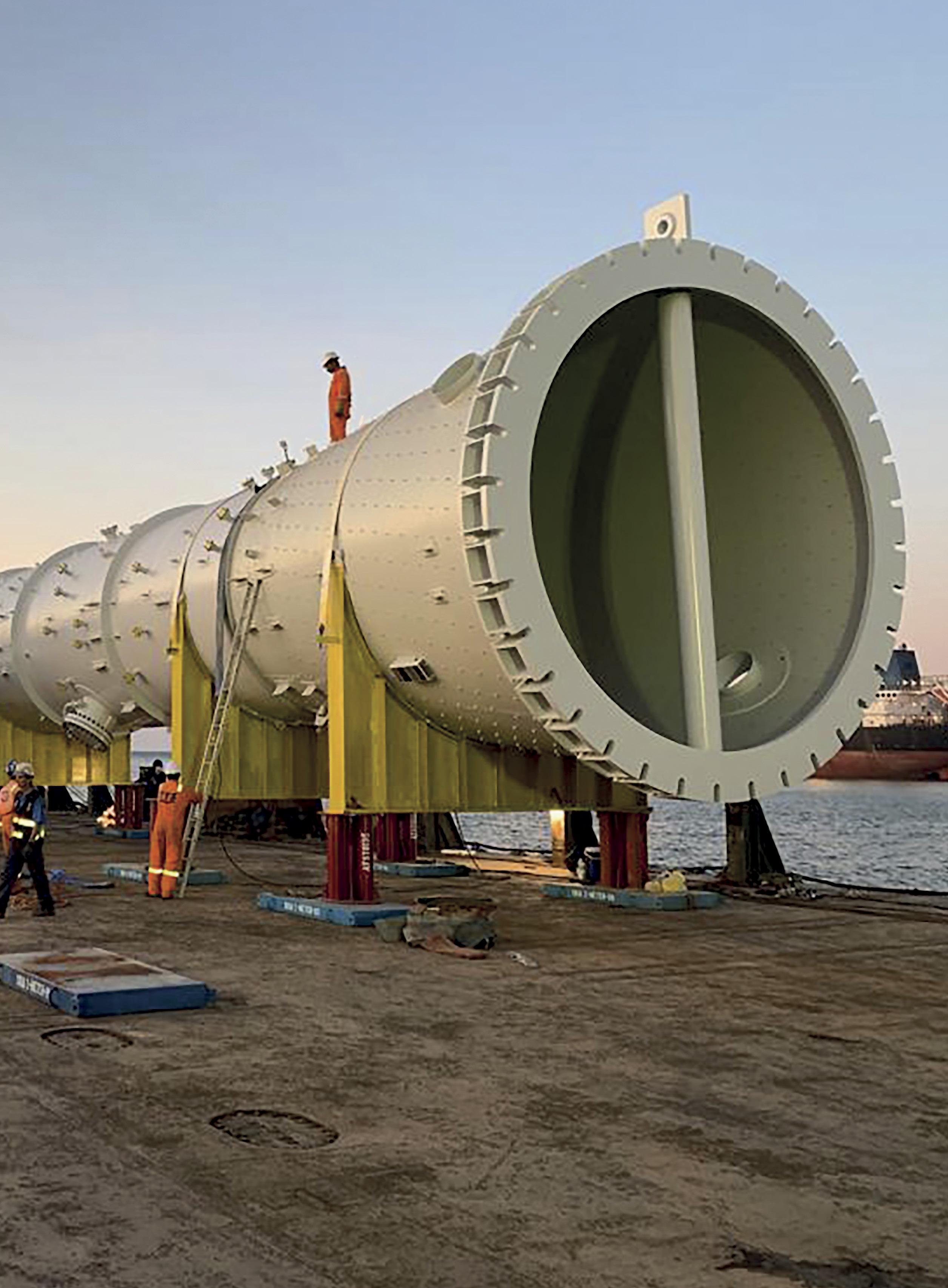 Project logistics specialist BDP International moves module for UAE energy project.
CREDIT: BDP
Project logistics specialist BDP International moves module for UAE energy project.
CREDIT: BDP
BREAKBULK MIDDLE EAST REVIEW
Breakbulk Middle East 2023 by the Numbers
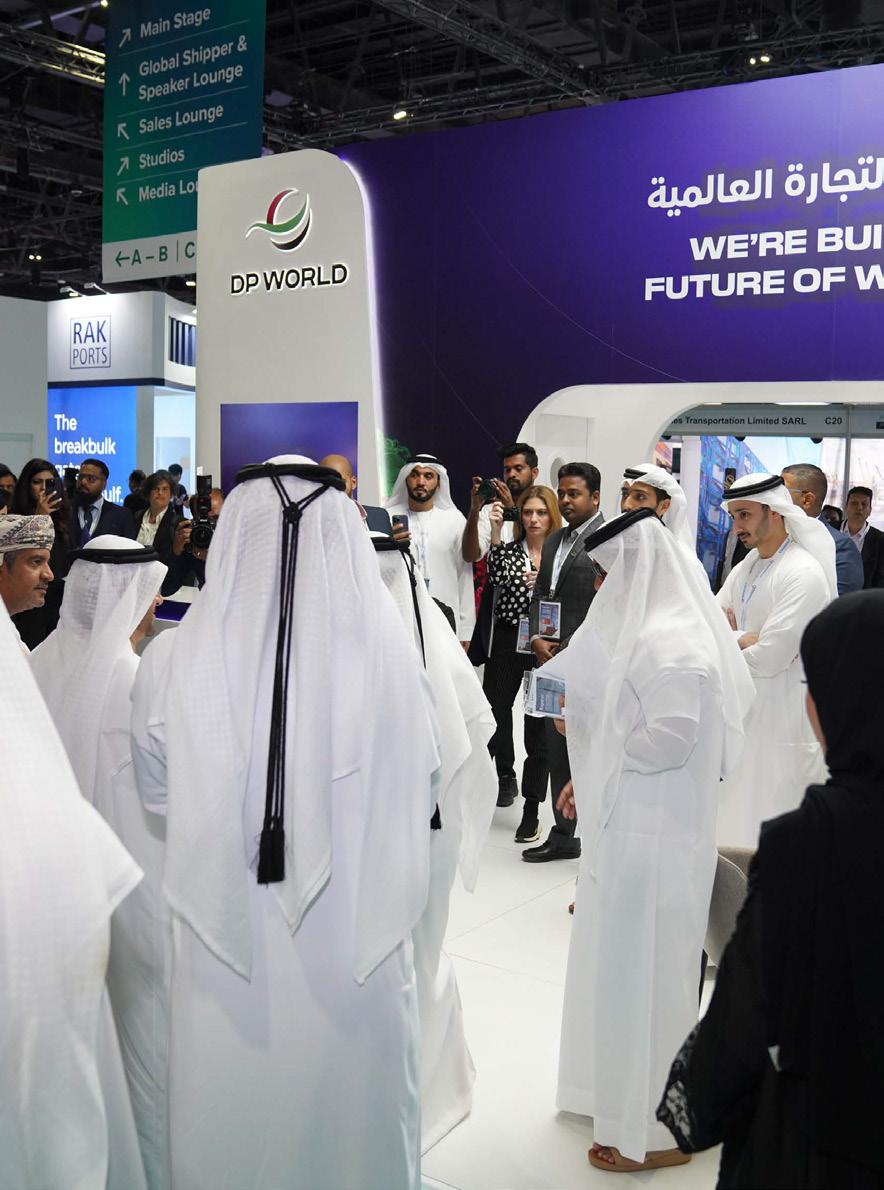
10 BREAKBULK MAGAZINE www.breakbulk.com ISSUE 2 2023 UpFront
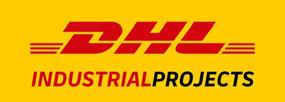
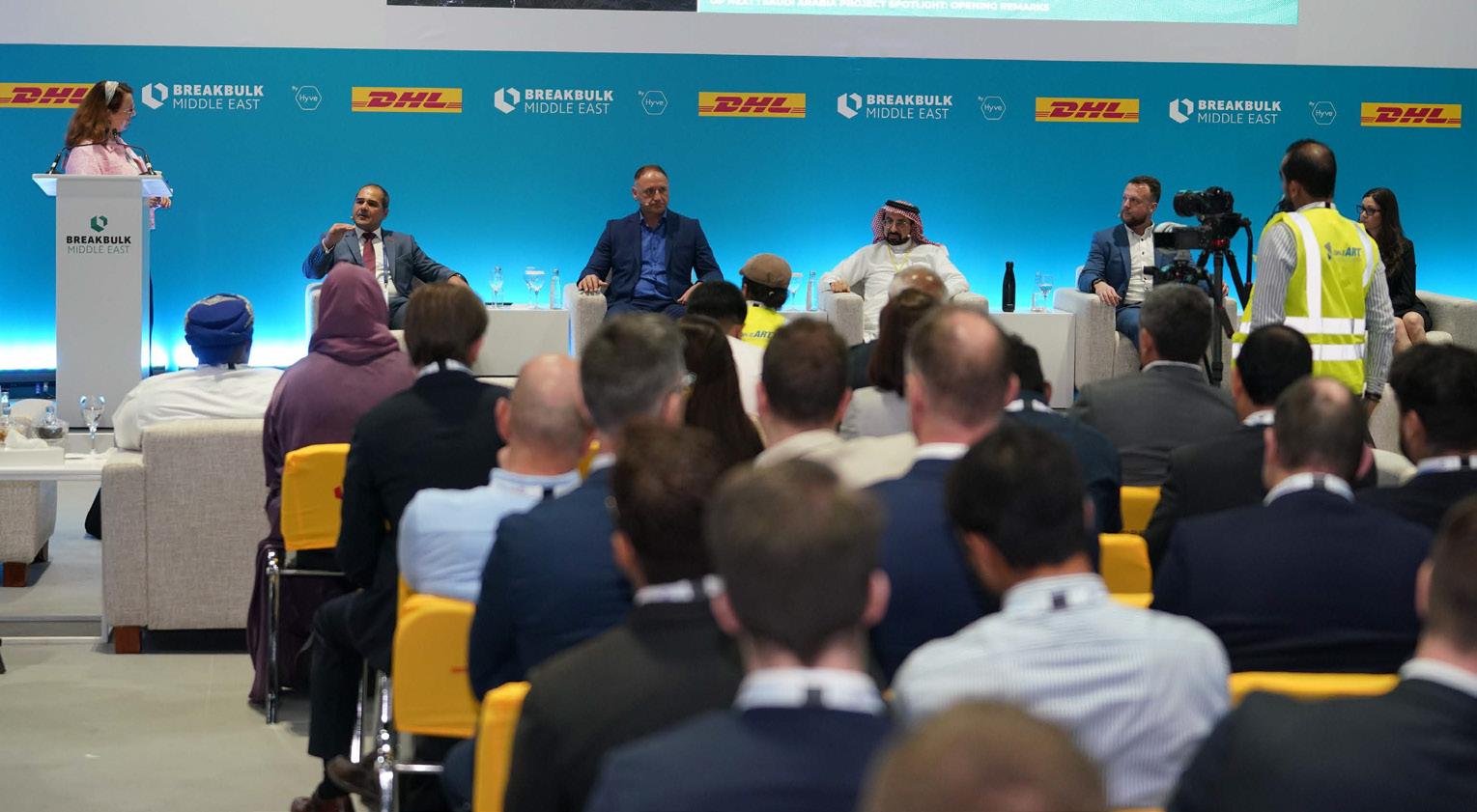
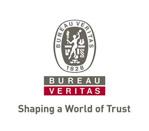










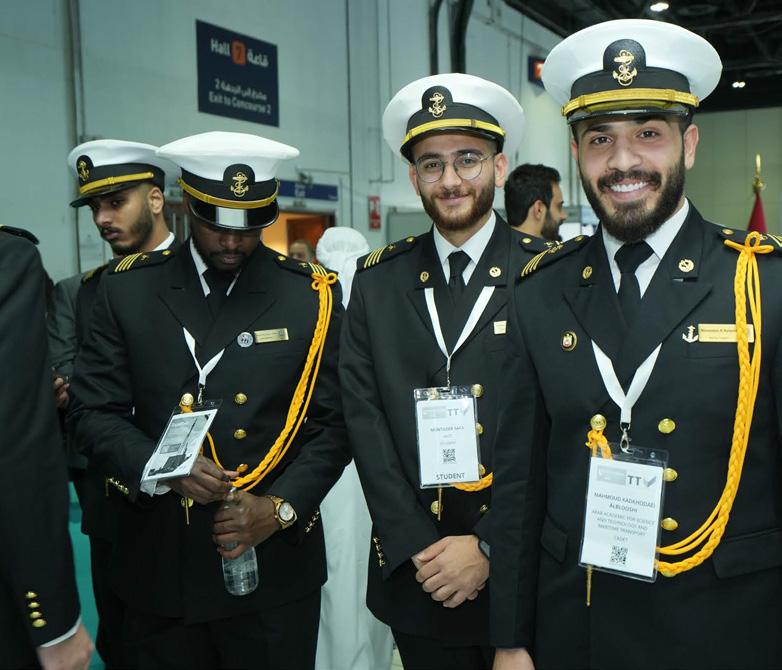

www.breakbulk.com BREAKBULK MAGAZINE 11
Heard at Breakbulk Middle East 2023 BREAKBULK MIDDLE EAST 2023
“Networking is the backbone of the shipping sector. As companies grow, we become more disparate and we move into different regions, so it’s important that we can engage as close as possible with our audiences. Breakbulk offers AAL the opportunity to do that.”
John Pittalis, Marketing and Communications Director, AAL Shipping and member of the Breakbulk Europe Advisory Board
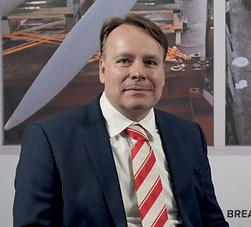
“This is our first time to be part of this exhibition. We have taken part because we are looking for agents in the region and instead of visiting a number of countries where we operate, we thought that since Dubai is the hub, it is an ideal place to make business connections.”
Baki Ozmen, Head of Logistics, Neoflex

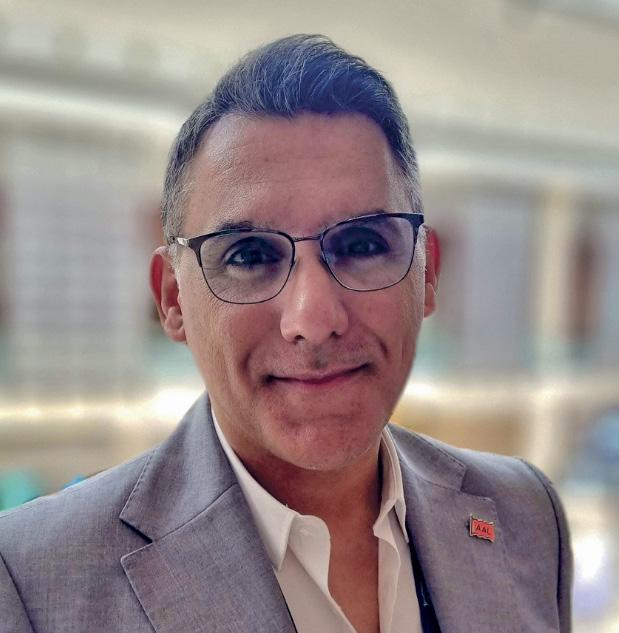
“Breakbulk Middle East has been far more vibrant than ever before, attracting a huge crowd. As exhibitors we have been pleased with the traction we are getting at our stand. The venue is warm and bright and the floorplan well-developed. The Women in Breakbulk event was a highlight – intimate and warm. We look forward to doing this again in Rotterdam.”
Meera Kumar, President and CEO, Diabos Global

“I was here last year and it is a lot busier than last year’s event! At our booth we have seen so many interesting people. Some potentially partners, some potential clients, and some potential suppliers.”
Peter Rondhuis, CEO, Roll Group
Link to video: Roll Group: Alliances Key to UAE Wind Success
12 BREAKBULK MAGAZINE www.breakbulk.com ISSUE 2 2023
UpFront
“It is absolutely fantastic to see such a huge crowd again. It seems like we have everyone in the industry participating, and we have a great international presence.”
Shujjat Alikhan, Vice President, IMGS Group
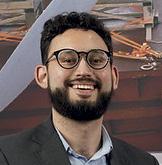

Link to Video: IMGS Returns to Breakbulk for More Business Success
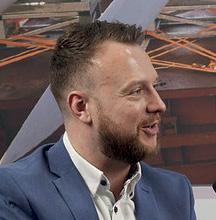
“Breakbulk Middle East has been one of the best events we have attended. It has allowed us to share our experiences and knowledge with the logistics sector. It is an event we will continue to support.”
Anfal Zahir Al Affani, Market Lead, Oman’s Ministry of Transportation, Communication and IT

“I must admit this is my first time at Breakbulk Middle East. I’ve been to Breakbulk Europe before and I am really happy with the turnout here. It’s very busy and active. You can feel there’s a lot of energy here.”
Nicholas Gallie
Co-Owner,
ConexBird
Link to video: ConexBird Reduces Risk at Ports
“I think it’s great! I remember the first Breakbulk Middle East in Abu Dhabi, if you see the size of the event and how it’s grown over the years, you can certainly see there’s a lot of Middle East interest at the moment.”
Steffen Behrens, President, Middle East, deugro Emirates
Link to video: Working Through Freight Formats with deugro’s Steffen Behrens

“Our ultimate goal is to network at this exhibition, which is the reason for our participation. From the event’s start, we made great connections, learned about other companies’ work and showcase what we have to offer.”
Kadeeja Afreen, Logistics Coordinator, Rajab Express
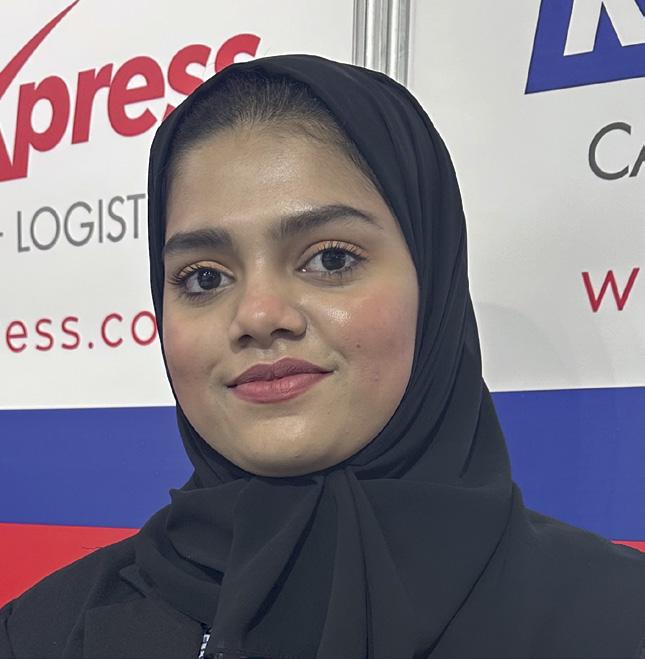
“It’s our first time exhibiting so we’re really pleased to be here. The amount of people here is impressive. The exhibition’s expanding, it’s getting more traction. There are already commitments for next year and that’s really exciting!”
Andy Tite, Vice President and Global Business Development and Commercial Director of Industrial Projects, DHL Industrial Projects
Link to video: Business Outlook with Andy Tite, DHL IP
www.breakbulk.com BREAKBULK MAGAZINE 13
Q&A with New Exhibitors
Companies Attending Set Out Their Stalls
Cargo Flet Blasant S.L.
Equipment
Spain
Sonia Pinteño, Coordinator/ Assistant of Direction


Visit Cargo Flet Blasant S.L. at stand 1K27

What is the most interesting thing about your business? The challenge is the realization of developing innovative solutions and equipment to meet the constant demand of the heavy lifting market.
What made your company want to exhibit at Breakbulk Europe?
Being able to be present and communicate with one of our company’s target business segments.
What is your company’s view on project opportunities in Europe at the moment?
We are experiencing a unique moment in technical development derived from the urgency demanded by new ways of producing and distributing clean energy.
Existing and future projects in the offshore wind energy sector, the installation of green hydrogen structures, and the construction of new nuclear power plants mean that we look with anticipation and confidence at the business of lifting equipment for heavy and oversized loads.
ÖZNAKLİYAT
Türkiye
Filiz Bozat, Deputy General Manager/CRO
Visit ÖZNAKLİYAT KARA TAŞIMACILIĞI A.Ş. at stand 1F01

What is the most interesting thing about your business? We provide project and heavy road transport within Türkiye, Europe, CIS countries, and Iraq.
What made your company want to exhibit at Breakbulk Europe?
Finding new partners and clients, meeting and selling to current customers, increasing awareness of our brand, product and services, launching a new product and service, entering new markets, maintaining our company image, and learning about our competitor’s products and services!
What is your company’s view on project opportunities in Europe at the moment?
Most of the projects in our area are led by Europe-based global forwarders and EPCs, so we need to make our brand name memorable.
Cordstrap
Equipment
Netherlands
Adrian Costas, Business Development Manager Heavy Duty Securing and Accredited Cargo Surveyor

Visit Cordstrap at stand 2B64-C65
What is the most interesting thing about your business? The passion to protect goods, people, and the environment. Cordstrap has a wealth of experience in creating cutting-edge solutions that have transformed conventional lashing procedures and raised security standards. The CTU Code, CSS Code, and AAR requirements are all respected in the development of each of our solutions.
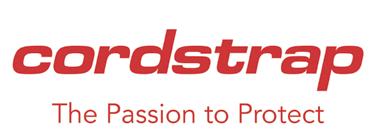
What made your company want to exhibit at Breakbulk Europe?
Many of our global clients visit this event. It is the ideal setting for showcasing both the benefits of our solutions and our wide range of heavy duty securing experience. We can service our customers globally thanks to our extensive network.
What is your company’s view on project opportunities in Europe at the moment?
More and more project cargo businesses are seeking for fresh approaches to improve their cargo security procedures. In addition to offering such solutions, Cordstrap also offers training on them.
NEW FACES AT BREAKBULK
EUROPE
Road Transport
14 BREAKBULK MAGAZINE www.breakbulk.com ISSUE 2 2023
UpFront
Harlyn Solutions
Industry-related Service

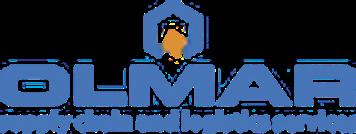
United Kingdom
Paige Taylor, Marketing
Visit Harlyn Solutions Ltd at stand 2J10-K11

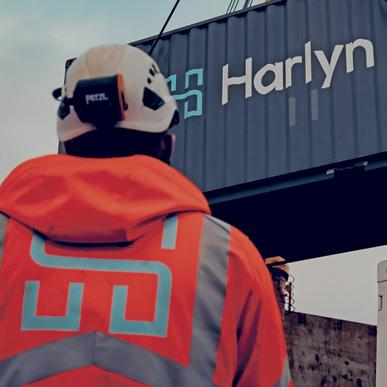
What is the most interesting thing about your business?
We are engineers innovating the world of shipping through engineering-led transport solutions. We specialize in moving complex and unique cargo from point A to B. From lifting plans to sourcing vessels, we talk the same language as our clients and understand the intricacies that are involved in these large-scale projects.
What made your company want to exhibit at Breakbulk Europe?
Having celebrated our third birthday at the start of the year, we have come a long way since 2020. We have almost tripled our team in the last twelve months and our projects have become bigger and more complex which is really engaging and rewarding. We want to exhibit our triumphs and capabilities to a wider audience as well as build connections with European companies.
What is your company’s view on project opportunities in Europe at the moment?
We deliver a wide range of projects throughout Europe, working within the civil, marine, and offshore industry and would like to continue building our reputation around the continent.
Olmar
Ports & Terminals
Netherlands
Martijn Snijder, Managing Partner

Visit Olmar at stand 2M35
What is the most interesting thing about your business? Collaborating with our users, we are safety and client focused. Owning circa 50 large warehouses, 14 cranes, deep draft, a great rail connection and a large fleet of forklift trucks, reachstackers, terminal tractors and wheel loaders we experience that only offering storage and handling capacity is not allowing our clients to excel. Thinking together about - for example - throughservices, capital investments, and offering CO2-neutral services really can lead to game changers. A classic win-win!
What made your company want to exhibit at Breakbulk Europe?
After our acquisition of Hacklin operations in Pori and the Port of Pori crane operations in the summer of 2022 we wanted to continue their great legacy of being present at Breakbulk Europe. We are keen to show and discuss our capabilities and ample expansion possibilities for investments and for project cargoes, wind mills, forest products, dry bulk, containers and scrap.
What is your company’s view on project opportunities in Europe at the moment?
The energy transition towards Fit for 55 and carbon-zero in 2050 has triggered an exciting period of growth with projects to support the transition of factories, transport equipment, wind farms, solar, and all the things that are yet to be thought of. We focus on supporting those cargo flows with a natural benefit of going through Pori, supported by our 15.3 meter draft, great rail connection, and largest land size in the area.
Sea Bridge Shipping Management
CO.
Maritime Transport
China
Cathy Li, Assistant General Manager

Visit Sea Bridge at stand 1L25
What is the most interesting thing about your business?
We are passionate about breakbulk shipping and stowage solutions, because there are many different types of breakbulk and each shipment has its own unique loading requirements; we are always taking on different “challenges” to find a solution that meets all the requirements of the shipment, and of course it is these challenges that make us progress.
What made your company want to exhibit at Breakbulk Europe?
Sea Bridge (SBS) has been operating mainly in the U.S. Gulf Coast region, but now we want to try to develop European breakbulk shipping as well. As a fresher, attending Breakbulk Europe is a great opportunity to meet and be mentored by senior members of the industry, and to introduce the European market to Sea Bridge.
What is your company’s view on project opportunities in Europe at the moment?
We are both excited and nervous about project opportunities in Europe as we will be facing new challenges. In terms of the current relationship between Asia and Europe, we believe that there is still a lot of potential for project development in Europe, and we are committed to doing our best in this regard. Certainly we will observe the premise of environmental and ecological sustainability and make our shipping solutions for European projects to our satisfaction.
www.breakbulk.com BREAKBULK MAGAZINE 15
UpFront NEW EXHIBITORS AT BREAKBULK EUROPE
Company name Stand number Sector Country ADVEEZ 1J50 IT France Ahmet Yigit Heavy Transport Ltd. Sti. 2M10 Freight Forwarder Türkiye Alexander Global Logis tic s 2E75 Freight Forwarder Germany Angor a Shipping CO 2M02 Maritime Transport Türkiye Bolloré Africa Logistics 2B51 Freight Forwarder France BOXXPORT Gmbh 2L24-M25 Industry-related Service Germany Car go Flet Blas ant S.L. 1K27 Equipment Spain Casper Group Ltd 2C70 Industry-related Service United Kingdom Cargo Power Network 1A50 Association United States CARRIER53’ 2C60 Maritime Transport Germany CBOX Cont ainer s 1K25 Equipment Netherlands C-Cont ainer Concept s 1E34 Equipment Germany CDN Nether lands B.V. 1H41 Industry-related Service Netherlands CETA Logistics & Projects 1M30 Freight Forwarder Türkiye Cords tr ap 2B64-C65 Equipment Netherlands dship Car r ier s GmbH & Co. KG 1C31-D30 Maritime Transport Germany DB Car go AG 1K31 Rail Transport Germany DCM Containers, India 1J46 Equipment India Denholm Por t Ser vices Limited 1N31 Ports & Terminals United Kingdom Egytrans 2L02 Freight Forwarder Egypt EOS 1A44 IT Singapore ERHARDT PROJECTS, S.L. 1G11-H10 Freight Forwarder Spain Evge Egypt for shipping agenc ies – mar itime af f air s 2H75 Maritime Transport Egypt Frontier Heav y Haul & Suppor t Inc . 2G74 Road Transport United States Gateway Logis tic s Group 2M06 Freight Forwarder United States Get ac Tec hnology Cor por ation 1N33 IT Taiwan (Province of China) Gebrueder Weiss Gmbh 1M36 Freight Forwarder Austria GIO Shipping Co.Ltd 1J35 Maritime Transport China Grimaldi Group 1L40 Maritime Transport Belgium Grindrod Logistics Africa 1M15 Freight Forwarder South Africa Hanson Car r ier s Pte Ltd 2F74 Maritime Transport China Har lyn Solutions Ltd 2J10-K11 Industry-related Service United Kingdom HAROPA PORT 2D31 Ports & Terminals France ICT Innov ative Cont ainer Tec hnologies GmbH 1M24 Equipment Austria IDEA Maroc Shipping & Global Forwarding 2G72 Freight Forwarder Morocco ISS Global For warding Tasimac ilik A.S 2B74 Freight Forwarder Türkiye NEW EXHIBITORS
16 BREAKBULK MAGAZINE www.breakbulk.com ISSUE 2 2023
AT BREAKBULK EUROPE 2023
ITO Fr ank f ur t Hans Ger z ymisc h 2A51 Freight Forwarder Germany Jassper International Pte Ltd., Singapore 1K43 Freight Forwarder Singapore KOMSTAL Mic hal Kowejs z a 1N30 Equipment Poland Logis tic s Plus 1E41 Freight Forwarder Türkiye Maxton Shipping 2M51 Freight Forwarder United States Mes sina Line 1C34-D35 Maritime Transport Spain MOBOTIX AG 1H45 IT Germany MS Spec ial Tr anspor t s & Projec t s SRL 2L01 Road Transport Romania Multimax Shipping DMCC 2K10 Maritime Transport United Arab Emirates MUR Shipping 1K35 Freight Forwarder Netherlands Navigator Tr anspor t 2G55 Road Transport Poland Navis 2J11 IT United States Neoflex 1M31 Equipment Türkiye Network Global Logistics A.ş. 1N20-M21 Freight Forwarder Türkiye Olmar 2M35 Ports & Terminals Netherlands ÖZNAKLİYAT KARA TAŞIMACILIĞI A.Ş. 1F01 Road Transport Türkiye Polish For warding Company 1L21-M20 Freight Forwarder Poland Por t of Lisbon / Por t of Setubal 1K34 Ports & Terminals Portugal Port Rhenan Colmar Neuf-Brisach 1N35 Ports & Terminals France Prolog India Pvt. Ltd. 1G45 Freight Forwarder India Qaranbeesh Group 1A31-B30 Ports & Terminals Saudi Arabia RAM Spreader s 1N23 Equipment Singapore Sai Wan Shipping 1J55 Maritime Transport Hong Kong Sea Br idge 1L25 Maritime Transport China SEDNA Communic ations 1N21 IT United Kingdom SESCO Tr ans for Developed Logis tic s 2J70-K71 Industry-related Service Egypt Shenship Singapore Pte Ltd 1K54 Industry-related Service Singapore Sinogrand Shipping 2M41 Freight Forwarder China SJ Logis tic s Group EMEA 2L11 Freight Forwarder Korea, Republic of SMP Global Pte Ltd 1F50 Industry-related Service Singapore Spec ial Tr anspor t euroExpres s, s.r.o 1A48 Road Transport Slovakia TITAN 1H51 Road Transport Türkiye TPL Projec t Stoc k Company 1D40 Freight Forwarder China Tr ans atlantic Logis tic s Pv t Ltd 2A65 Freight Forwarder India TUNISHIP 1K52 Freight Forwarder Tunisia Williams Shipping 1F02 Maritime Transport United Kingdom Company name Stand number Sector Country www.breakbulk.com BREAKBULK MAGAZINE 17
IN CONVERSATION
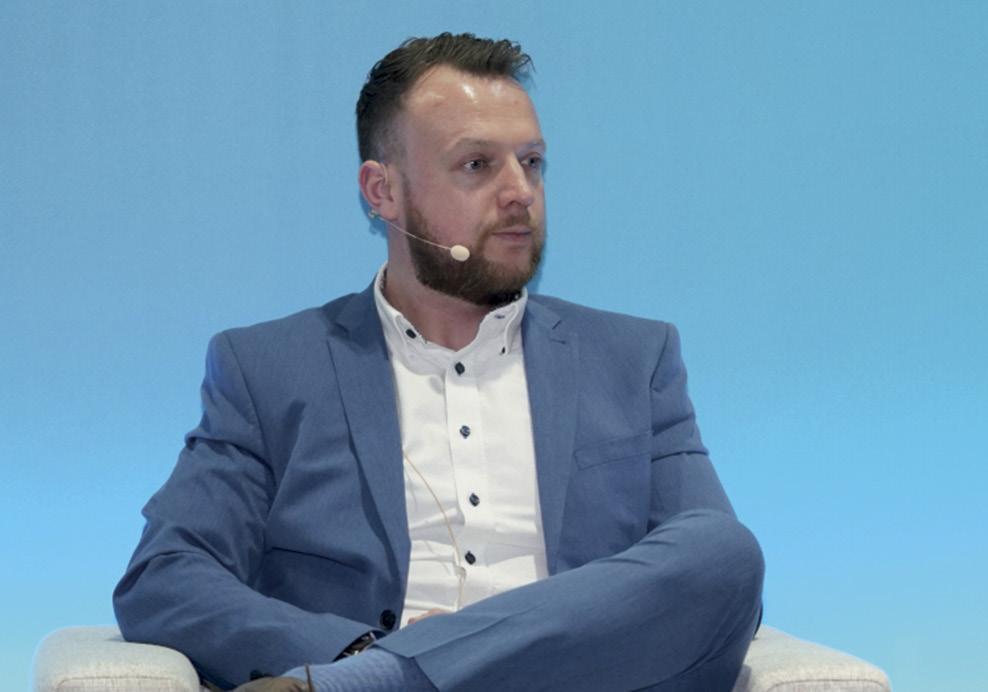
Perfect Storm in Reverse to Buoy Outlook
By Carly Fields
The global logistics industry has seen a significant shift in cargo movement, according to Andy Tite, vice president of global business development and commercial director at DHL Industrial Projects. Speaking with Breakbulk, Tite noted that the delays, congestion, and lack of space experienced earlier have given way to a situation where companies are now holding inventory, which has released capacity in the container fleet. This situation has coincided with the release of congestion in China, creating what Tite described as “almost a perfect storm in the opposite direction. With rates crashing as fast as they shot up if not faster.”
From a project perspective, “it’s almost the polar opposite,” he said. Tite noted that there were delays due to construction restrictions, travel restrictions, and investment being put on hold during the pandemic. However, he anticipated that as restrictions are lifted, there will be a surge in project-related activities, with investments in oil and gas leading to double offsets in renewables investment. “Bring all of that together, and I think not just next year and beyond, but the next six months is going to be busy and hopefully a great time for the project for the industry,” he said.
stakeholders in the industry will start planning more proactively, moving towards a more collaborative and considered approach to how, when, and where to move cargo.
At DHL, Tite and his team have a mindset of genuine interest, providing clients with service, information, and expertise. This approach helps clients to ask the right questions when putting together requests for proposals (RFPs) and anticipating potential pain points or areas of concern. Tite emphasized the importance of being realistic and collaborating with subject matter experts who can bring their value to the table.
Regarding capacity, Tite noted that land-based asset owners have been consolidating equipment, making it difficult to look at smaller projects or spot shipments. However, DHL’s chartering team has strong carrier relationships, ensuring that it can provide accurate service provisions and call on support, if necessary, in the ocean freight market.
Tite noted that there will be some reliability in pipeline and expects a bit of a logjam until the industry figures itself out. However, he hoped that shippers and other
One challenge that Tite noted is the disconnect between freight rates and budgets. As project financing needs to be set well in advance of operational activity, managing this challenge can be difficult. However, Tite anticipated that rates will fall eventually, providing shippers with benefits after the hard work of financing has been done. Despite carriers enjoying the last few years, Tite added that no-one sets the market, and it is governed by basic economics based on supply versus demand.
DHL Expert Predicts a Project Boom
18 BREAKBULK MAGAZINE www.breakbulk.com ISSUE 2 2023 UpFront
Andy Tite
“...I think not just next year and beyond, but the next six months is going to be busy and hopefully a great time for the project for the industry.”
– Andy Tite, DHL
IN CONVERSATION
Paving the Way for Future Generations
By Liesl Venter
Women are increasingly taking up leadership roles in the breakbulk and project cargo logistics industry, as the value of their contribution and particular skill sets are being recognized.
Economic empowerment and the reduction of gender inequities in the workplace, however, must remain the priority of every woman in the industry as they pave the way for future generations, said Thelma Williams, Dubai-based auditor and marine surveyor for Bureau Veritas.
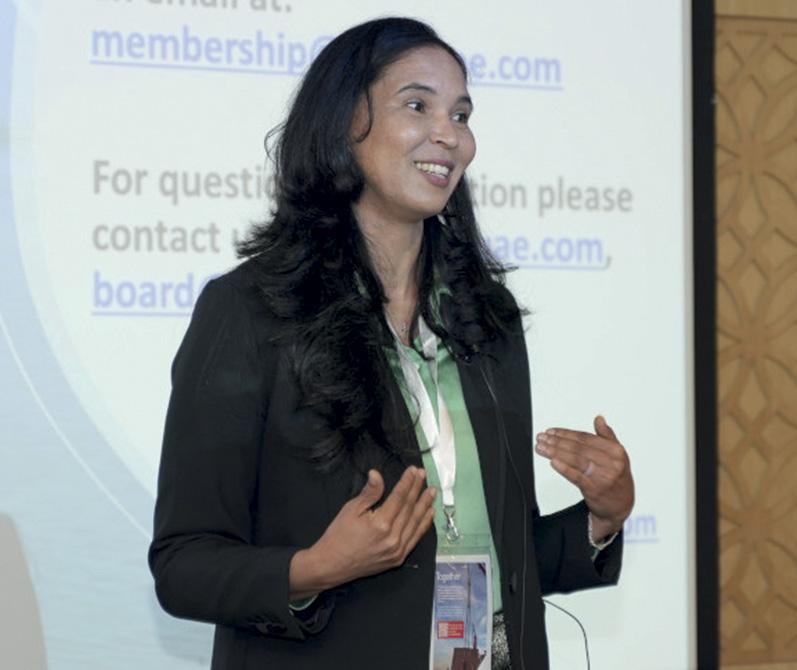
Williams, the only woman to occupy such a position in the UAE, said women continue to demonstrate how their involvement in business leads to higher levels of productivity, safety and improved financial returns.
“Women represent an enormous untapped resource in the overall breakbulk talent pool,” Williams said. “Not everyone is made for everything. We all have strengths and weaknesses, but if you are passionate about working in the breakbulk sector then there is no reason to shy away from it just because you are a woman. The sector has proven that there is room for women to show what they are capable of.”
Women, she said, bring particular skills to the table, including patience and pragmatism. While there is no denying that breakbulk and project cargo remains an industry still dominated by men, for Williams, change is happening as more women enter the profession adding value with the skills and characteristics they bring to the job.
“For me, it is not about doing a man’s job like a man, but what I can do as a woman. That goes one step further –doing my job as me. I am my biggest cheerleader.”
A Former Seafarer
Born in Johannesburg and raised in Cape Town, South Africa, Williams is not new to the concept of inequality. As the first South African woman of color to get her captain’s ticket, she spent years at sea often in challenging situations.
“As a seafarer, I realized that women do not need to shy away from roles perceived to be those of men. As women in maritime, and women in breakbulk, we need to remember that we have a place and that before we expect other people to validate us, we need to validate ourselves. I joined the maritime industry about 20 years ago completely clueless about what the future held, but I knew this: I could do whatever was asked of me.”
It is a personal oath that Williams has held dear her entire career.
“I cannot control what men do in this industry. For that matter, it is not about me being comfortable with men or even trying to emulate what they do or fit into their world. I am, first and foremost, a woman working in the maritime sector and doing a job well. As women, we need to be true to our gender. I have never had to change who I am to do my work.”
Williams says women are increasingly being recognized in the breakbulk sector for their contributions. “There are still not enough women in the breakbulk and project cargo logistics sector. As women in the industry, we hold positions of privilege. We need to stand tall as we are paving the way for generations of women still to come.”
According to Williams, women also need to share their stories and experiences no matter how small or insignificant they think they might be.
“It is only through the collective voice that we will be able to affect long-term change. The shipping industry has been around for years, as has women’s involvement in it. We are now starting to step up and move forward as we are capable mariners who add value to the workplace. We must add our voice to the multitude of women’s voices advocating for more women in maritime.”
For Williams, the outlook for women in the breakbulk sector is extremely positive. “Women’s voices are getting louder and the industry can no longer ignore it. Yes, we are still far from reaching a balance, but we are heading in the right direction.”
www.breakbulk.com BREAKBULK MAGAZINE 19
Bureau Veritas was the sponsor of the Women in Breakbulk Breakfast at this year’s Breakbulk Middle East in Dubai.
Thelma Williams, Keynote Speaker at Breakbulk Middle East’s Women in Breakbulk Breakfast, Talked to Breakbulk on International Women’s Day
Thelma Williams
Highlighting Recent Industry Hires, Promotions and Departures MOVERS
A.P. Moller-Maersk
Breakbulk Europe Advisory Board member Tim Killen has joined AP Moller-Maersk as the Danish shipping group’s global head of growth for project logistics. Killen boasts more than 25 years of experience working on capital projects in various senior management capacities. Prior to Maersk, the executive served as deugro’s chief sales officer and executive vice president.
In January, Maersk officially launched Maersk Project Logistics, a new product that would focus on solution design, special cargo transportation and project management services. Killen told Breakbulk : “I am honored to join the global Maersk organization and to be able to play a part in Maersk’s Integrator strategy and the implementation of the new Maersk Project Logistics service offering.”
AAL Shipping
AAL Shipping has promoted Karim Smaili to general manager in the Middle East. AAL is operating at least one scheduled multipurpose heavy-lift cargo sailing through the region each month, with additional tramp sailings to support its clients.


“The region is not only importing project cargo to meet local needs but also exporting steel and locally fabricated project heavy-lift components. With our well-established trade routes connecting all these regions, we can provide the global ocean transport solutions needed,” said Smaili, who has worked in AAL’s Dubai office since its launch in early 2015.
AND SHAKERS
Roll Group
Netherlandsbased Roll Group announced that industry experts Patrick van der Meide and Harmen Tiddens will set up and lead Roll Africa, a new unit focused on heavy transport solutions throughout the continent. Both Van der Meide and Tiddens had previously held various management roles with lifting specialist Mammoet.
“As we strive every day to execute safe operations at the highest industry level, we need experience and solid understanding of this expanding market, and are glad to have Patrick and Harmen on board.” said Peter Rondhuis, CEO of Roll Group.
dship Carriers
Dea Chincuanco has started her new role as vice president of strategy and commercial management at dship Carriers.

Chincuanco, previously served as the company’s assistant vice president – commercial and chartering North America.


Chincuanco is a member of Breakbulk’s Women in Breakbulk networking platform and gave an inspiring speech to more than 120 female professionals at the Women in Breakbulk Breakfast at Breakbulk Americas 2022 in Houston.
SLB
Vinit Pednekar has been promoted to materials manager at oilfield services provider SLB’s distribution center in Houston. Pednekar will take responsibility for the overall running of the complex, which supports SLB’s global operations. The executive has held various roles at SLB since joining the firm in 2007, including global logistics planning manager, product line supply manager and, most recently, supplier manager for well construction.

“Over the last 15-plus years with SLB, I have explored all avenues of supply chain management. The company has given me an opportunity to live and work in different countries, and every experience has been valuable in my career development,” Pednekar told Breakbulk. SLB – formerly Schlumberger – is a member of the Breakbulk Global Shipper Network.
Journal of Commerce
Susan Oatway has taken up a new role as research analyst for multipurpose and project shipping at the Journal of Commerce, part of S&P Global. Susan, a member of the Breakbulk Europe Advisory Board, said she would be working with the editors within S&P’s global intelligence and analytics division.
Prior to the JOC, the analyst spent 25 years as a director – then associate – of London-based Drewry Shipping Consultants. Susan has also been a Fellow of the Institute of Chartered Shipbrokers since 1996, serving as the organization’s first female international chairperson from 2019 to 2021.
 Tim Killen
Tim Killen
UpFront
Karim Smaili
20 BREAKBULK MAGAZINE www.breakbulk.com ISSUE 2 2023
Patrick van der Meide
Harmen Tiddens
Dea Chincuanco
Vinit Pednekar
Susan Oatway
Kerry Project Logistics
Having spent the bulk of his career in the Middle East, Alberto Pittaluga recently jumped continents, joining Kerry Project Logistics as the company’s Houston-based regional director for the Americas. Pittaluga’s two decades in the Middle East included eight years at ALE and, most recently, twoand-a-half years as head of Al Faris’s operations in Iraq.
Milan-headquartered KPL, the industrial projects division of Kerry Logistics, is present in 53 countries worldwide, delivering some 310,000 tonnes of airfreight every year. “Being based in Houston makes project management in North, Central and South America much easier,” Pittaluga said to Breakbulk
RAK Ports
RAK Ports in Ras
Al Khaimah, the northernmost emirate of the UAE, has named Roy Cummins as its new CEO. The senior ports executive with more than 30 years’ experience in maritime logistics previously headed the Port of Brisbane in eastern Australia. “Roy is a recognized leader, and a strong team player with a leadership approach that promotes collaboration, fosters innovation and empowers teams,” the company said.
RAK Ports operates at four hubs across Ras Al Khaimah, including Saqr Port, the biggest bulk handling port in the region, and RAK Maritime City, the only free zone in the region to have direct quayside access.
Sallaum Lines
Switzerland-based roll-on, roll-off and breakbulk shipping specialist Sallaum Lines has named Kay Lemcke as its new chief operating officer. The executive, previously managing director of Sallaum Lines Germany, has relocated to the firm’s headquarters in Kägiswil to oversee the company’s continuous operations and processes.
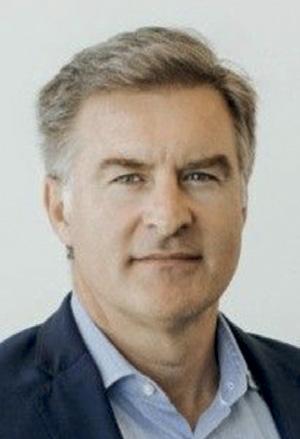
“I am immensely proud having been part of our group over the last 10 years and I am looking forward to developing and executing our global operations in my new role as COO, with the aim to continue delivering excellent service with a strong team, while further progressing our environmental responsibilities,” Lemcke said.
Blue Water Shipping
Blue Water Shipping has named Jørgen Wisborg as its new chairman, taking over from Kurt Skov, who steps down after more than 50 years’ service at the transport and logistics group that he founded in 1972. Wisborg joins Blue Water after almost three decades at Danish energy company OK, where he had served as CEO since 2005.

“Jørgen Wisborg is a very skilled and experienced leader,” Skov said. “As chairman, he will contribute to sustaining and strengthening Blue Water’s strategic development in collaboration with the rest of the board and our executive management. On top of strong business skills, it has been important for us to find a chairman who will safeguard our culture and values. And we have found that with Jørgen.”
DSV
Transport and logistics specialist
DSV has appointed Yasser Alyassin as the company’s new regional director for industrial projects in the MENA region. Alyassin, who will be based in Dubai, was previously director of logistics at UK-based oilfield services provider Petrofac. Prior to that, the executive held various roles in the Middle East for heavy-lift specialist ALE.
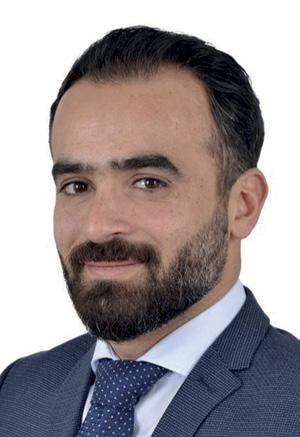

Alyassin has appeared as a specialist speaker at Breakbulk events. Last year, the executive was invited to join a thought-provoking main stage panel session at Breakbulk Europe in Rotterdam covering the technology needs of the EPC industry.
NYK Group Europe
Japanese shipping company
Nippon Yusen
Kabushiki Kaisha, or NYK Line, has named Carl-Johan Hagman as new president and CEO of NYK Group Europe. Hagman will replace Svein Steimler, who will step down at the end of March to continue as special advisor to NYK.
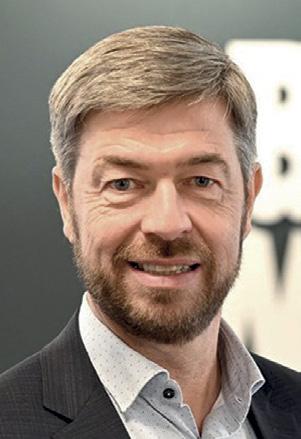
Until mid-2022, Hagman had been CEO of Swedish shipping group Stena Line. “NYK is maybe the world’s most well reputed shipping company, and I am very happy to be welcomed as part of the team,” Hagman said. “I promise to do my best to contribute to the company’s continued success in its vital mission of helping cargo owners transition to sustainable, resilient and even more efficient supply chains.”

www.breakbulk.com BREAKBULK MAGAZINE 21
Alberto Pittaluga Kay Lemcke Yasser Alyassin
Carl-Johan Hagman
Jørgen Wisborg
Roy Cummins
By Asma Ali Zain

Multimax Looks to Beef Up Fleet
Singapore-Based Carrier Eyes Expansion to Europe, East Africa
Multimax Shipping is looking to beef up its fleet of multipurpose and bulk carriers, with an executive for the Singapore-based company telling Breakbulk it wanted to acquire “at least five more” vessels.
Multimax currently operates 18 owned and chartered vessels, focused primarily on the transport of bulk cargo such as coal, granites, aggregates, salt, steel, general cargo, specialized and project cargo.


“We are in discussions with various ship owners to get at least five more ships in our fleet,” said Shailendra Singh Chauhan, Multimax’s chartering manager for breakbulk, dry bulk, projects and heavy-lift.
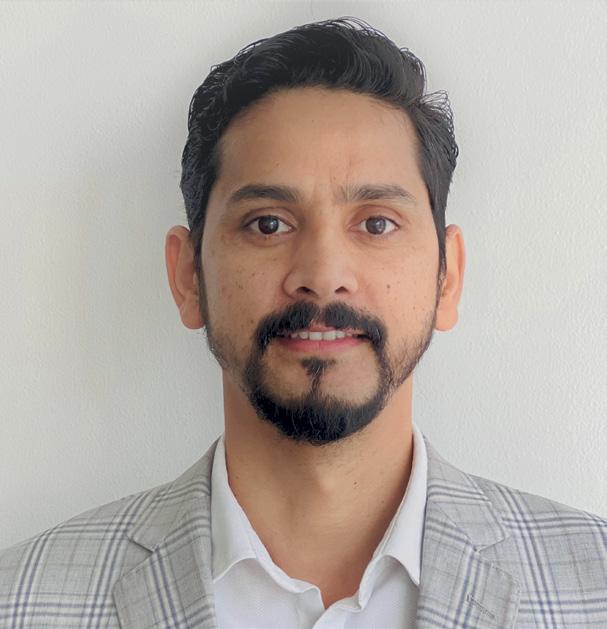
Multimax set up an office in Dubai in 2018. Since then, the company has become a “well-recognized carrier in the region,” Singh said. It has delivered cargoes for major projects in the region’s oil and gas, power and construction sectors.


The Simple Solution to Complex Cargo





According to the executive, the company is planning to use its Dubai office as a launchpad into other markets in the region, such as Saudi Arabia.
“There are several projects coming up in Saudi Arabia, and we are targeting these projects,” Singh said. “One reason why we are increasing our fleet size is that for the past three years, we have seen a lot of demand from Saudi and we want to give them a regular service.”
The company also wants to expand its services and trade routes into Europe and Africa by the end of this year. It currently offers services to the Far East, Australia and Africa.

“As a company that is looking to increase its freight size in the project segment, we are further expanding to the markets in Europe and Africa by the last quarter of 2023,” Singh said. “So far, the service has been only up to East of Suez Canal.”







IN
UpFront
CONVERSATION
When you need that something special, the Port of San Diego knows how to handle specialty cargo. Move your cargo from ship to ground to market much faster. • OPEN SPACE • FLEXIBILITY • EXPERTISE Coming this year ! All-electric cranes with increased maximum lift capacity up to 400 metric tons! Learn more at portofsandiego.org/cargo
Shailendra Singh Chauhan. CREDIT: MULTIMAX
THE SPECIAL A DVAN TAG E
By Simon West
IMGS Group Expands Dubai Operations IN CONVERSATION
Canada-Headquartered Forwarder Eyes Growing Potential in Region
Just months after launching a new multipurpose cargo terminal at Jebel Ali Port in Dubai, IMGS Group has unveiled plans to further expand the facility.
Speaking to Breakbulk on the sidelines of Breakbulk Middle East, IMGS’s vice president, Shujjat Alikhan, said the terminal was operating at full capacity and struggling to keep up with demand that was showing no signs of abating.

“We inaugurated the 40,000-tonne bulk cargo facility in July 2022 and it was immediately off to a flying start,” Alikhan said. “As we speak, we have zero capacity due to the high demand we are seeing. The board has already approved our expansion plans and we have started this process that will see us double our capacity by 2024.”
It was a strategy, Alikhan said, driven by numbers. “Our company has its DNA in Africa, but we are being pushed more and more to look at the Middle East. The volumes, the numbers and the connectivity are driving us to grow our footprint here as it is no longer just our commercial and administrative hub, but is fast becoming our operations champion.”
Where previously the company had been handling 10-15 vessels out of Port Elizabeth in South Africa, the executive said now at least seven of those vessels were permanently catered for in Dubai.
“More and more, the benefit of Jebel Ali Port as a logistics hub is being realized. Rather than sending cargoes to Africa directly where connectivity to the hinterland is oftentimes challenging, the move is to now trans-ship to the Middle East and distribute from here. It is not only far more effective but also very cost efficient, and with the added value of expertise from companies such as ours it is a win-win for the industry.”
According to Alikhan, the safe environment offered by Jebel Ali along with its strong connections to Africa will see the port and region continue to grow as a logistics hub for years to come.
IMGS Group, which this year celebrates its 60th anniversary, will continue to invest in its Middle Eastern operations, he said.
“We have continued to see growth in the past few years. The pandemic did not slow us down as we saw an increase in volumes leading to expansion and massive investment we have already made at Jebel Ali, which is exceptionally well connected, be it via air, sea, road or rail.”
Shujjat Alikhan. CREDIT: IMGS GROUP
Finance Harder to Come By
Asked about challenges, Alikhan said proper access to finance for buyers remains problematic, while new start-ups have affected rates. “We saw a lot of start-ups during Covid that managed to get some big contracts, undercutting on prices without understanding the financial impact. This had a big impact on many of the large logistics companies,” he said.
“The subsequent result was that many of these companies were not able to perform and deliver to the contracts. We are starting to see the business go full circle with companies again opting to use vetted breakbulk service providers rather than new and unknown start-up service providers.”
Alikhan believes there are numerous benefits to using a neutral service provider such as the IMGS Group. “Not only is it the safety and quality of our service but the integrity and confidentiality that we offer makes all the difference.”
The executive also pointed to a joint venture with the Archer-Daniels-Midland Company, or ADM, to handle all their cargo distribution in Pakistan as part of a corporate social responsibility program to deliver food to the country.
The JV, unveiled late last year, will handle grains, oilseeds, feedstuffs, pulses and will sell goods domestically in the territory of Pakistan.
IMGS was a sponsor at Breakbulk Middle East 2023.
www.breakbulk.com BREAKBULK MAGAZINE 23
By Carly Fields
IN
CONVERSATION
Difficulty of Managing Client Expectations
Disrupted Supply Chain Requires Pricing Reset
Managing client expectations is now one of the biggest challenges for global project forwarders as they navigate a complex global supply chain affected by a range of factors including congestion, fluctuating fuel prices and capacity shortages, according to a senior forwarding executive.

Speaking to Breakbulk, Simon Duke, CEO Middle East & Asia Pacific for Trans Global Projects, said: “If you have a contract, trying to maintain lump sum rates is part of our challenge. We can all maintain rates, but it’s also trying to find the equipment or space at those rates. And then obviously, there are the delays - when you’ve got a project with cargo required on site on set dates, you need to maintain those dates.
“It can be a tricky situation when clients expect the performance but at the previous rates which were locked in,” he added.
Duke also highlighted the issue of congestion and equipment shortages in the U.S. and Europe. He said that while things were normalizing, there were still challenges ahead. One of the solutions to these problems, he added, was for clients to book well in advance.
“We have some pipe moving out of India and that was locked in nine months ago at the bunker level at that time. That was a bit of a risk and reward. The solution is locking in early and putting everything in place under milestones to ensure that nothing slips.”
Duke added that while there were different strategies for managing costs, the safest approach for both parties is probably a cost-plus scenario. “We are stakeholders, we are partners, so I see a cost-plus scenario is probably the best way forward in today’s market.”
Outlook is Bright
Meanwhile, the outlook for the global project market is bright, according to Duke. He shared his optimism about the buoyant global project market with Breakbulk, noting that “2022 was a very, very good year for the chartering desk.”
Duke identified the power and renewables sector, particularly projects involving turbines and generators, as the future of Trans Global’s business. He also noted that mining has been on the rise in Australia, and that EPC construction can include upgrades and expansions.
But the most exciting projects are the “NEOMs of the world,” he said. However, he added that it can be challenging to put a pipeline against the projects due to their complexity. Duke said that Saudi Arabia, with Aramco’s $50 billion investment over the next five years, is going to be the next big market for the company. He noted that the company has successfully delivered 7,000 metric tons of pipe into Damman this year, with fabricated equipment expected to move into Saudi Arabia from Jebel Ali in the near future.
Duke also revealed that resource management is one of the biggest challenges for Trans Global Projects, with finding qualified engineers and support staff proving particularly difficult. He highlighted the issue of high expectations among potential employees due to the demand for their skills, resulting in a need to manage costs.
Despite these challenges, Duke expressed his confidence in the future of the global project market and Trans Global Projects’ role in it.
Simon Duke.
24 BREAKBULK MAGAZINE www.breakbulk.com ISSUE 2 2023
CREDIT: TRANS GLOBAL PROJECTS
UpFront
By Carly Fields
Changing Landscape of Project Air Freight IN CONVERSATION
Insights from Chapman Freeborn’s Sharon Vaz-Arab
The Covid-19 pandemic has undoubtedly impacted the air freight industry, with traditional carriers facing airport closures and capacity issues while air charter specialists like Chapman Freeborn experienced a surge in demand. However, as passenger travel slowly resumes and freight demand increases, the industry is witnessing a shift in the types of cargo being transported, leading to a slowdown in charter conversions.
According to Sharon Vaz-Arab, president of Chapman Freeborn IMEA: “There is a certain amount of benchmarking of rates – traditional carriers versus charter operators – but there’s also a shortage of capacity so there’s less availability of what can fly.”

The shortage of capacity is partly due to the ramping up of freight demand, with many shippers now looking to procure their own capacity rather than relying on traditional carriers. “Forwarders have been 80 percent of our business. But because of the pandemic and the lack of capacity, we’re seeing shippers looking to have their own procured capacity. For example, with Maersk and several others,” Vaz-Arab said.
Chapman Freeborn, an asset-light aircraft charter specialist, was acquired by Avia Solutions Group two years ago, which owns 140 aircraft and plans to double that number. “Although we do have capacity within the group, a large amount of CF’s business is procured from the great relationships we maintain in the industry and an access to a wider network of operators,” Vaz-Arab explained. The company is also focusing on expansion and strengthening its footprint in its India, Dubai and Johannesburg offices as well as exploring opportunities in and around the wider region.
However, the pandemic has also highlighted the humanitarian aspect of the air freight industry, with a surge in demand for humanitarian and government aid flying into Syria and Türkiye. Vaz-Arab added: “That’s the need of the hour.
“In addition to that, we’re seeing industrial projects growth development in Saudi Arabia. Africa growth continues with various projects and rebuilding of infrastructure, fast development of LNG projects, energy, oil and gas, and rail expansion. India is another market rebuilding with a strong domestic market that we will focus on.”
Chapman Freeborn prides itself on maintaining transparency with its clients and adhering to regulatory compliant shipping and air freight standards. “We give them various options, the low cost versus the high costs and the pros and cons with both, so that they can pick the options that fit them best,” Vaz-Arab said. The company’s global presence, with 100 offices and service centers worldwide, and a workforce of 10,000 highly skilled employees, is a testament to its commitment to the industry for the long haul.
www.breakbulk.com BREAKBULK MAGAZINE 25
“We’re seeing industrial projects growth development in Saudi Arabia. Africa growth continues with various projects and rebuilding of infrastructure, fast development of LNG projects, energy, oil and gas, and rail expansion. India is another market rebuilding with a strong domestic market that we will focus on.”
– Sharon Vaz-Arab, Chapman Freeborn
Sharon Vaz-Arab. CREDIT: CHAPMAN FREEMAN
By Carly Fields
IN CONVERSATION
MPVs Cut the Bulk, Box Purse Strings
Heavy-lift Ships Forge Their Own Freight Path
The multipurpose vessel market is undergoing significant changes, with the container and bulk markets no longer driving its fortunes, according to Christophe Grammare, managing director of AAL Shipping (AAL).

The bulk market suffered a trough due to the slowdown of China’s production, while the container market has declined sharply. However, the MPV market is doing well on the back of contracts signed in 2022.
Speaking with Breakbulk, Grammare said the MPV market had always been driven by the other two sectors, but for the first time in his career, he saw “a path where at least MPVs are making their own way.”
He said the MPV market had cooled down, with rates coming down as a result of a “standoff” between shippers, expecting a further decline of freight levels in line with the container sector, and project carriers, still having strong forward bookings. Grammare said he saw the heavy-lift market staying steady, at reasonably sustained freight rates, with supply and demand of ships about matched.
He highlighted the importance of a more harmonious relationship between forwarders, shippers and carriers, which he believed the last two years have brought about. This has levelled up the playing field – which was needed – and given AAL the opportunity to plan longer term together with clients.
“I feel like the last two years have brought more of a balanced relationship,” he said. “There is an open dialogue. Typically, in a shipper’s market, shippers can pick a ship easily, so there’s no need for planning too far ahead for cargo movements. Now we have closer communication with shippers on their upcoming needs and greater transparency in our negotiations.
“This has been a wake-up call and now our clients and AAL are working together on a more level basis. We certainly don’t want to overcharge customers on the freight, rather we aim to quote levels which are sustainable. At the same time, we need them to understand the cost of running ships and what it takes to deliver the regularity of sailings and quality of global service they demand.”
AAL has designed a new generation of ships – methanolready and featuring three 350-tonne cranes with a
max 700-tonne lift and 80,000 CBM cargo intake – and is investing in emissions reporting and improvements in sustainability. “It’s perfect timing because at an average age of 10 years our core fleet is not old. It’s a reasonably young fleet,” Grammare said. “The newbuildings were designed by our own engineering team, with our project cargo customers in mind, and have both technical and design innovation, with greater cargo intake, accommodation forward – which helps with sailing visibility – and an extendable deck on the starboard side. This will give us a chance to operate and test these vessels before we further renew the existing fleet.
“The challenge is more for the longer term: what will the next generation of ship looks like? We’ve got a design now coming out, the ships are methanol ready, they are fitted and ready to go and will be delivered in a year. But I don’t think the market will be ready to supply methanol, so we are really in that ‘in between’ window where there’s only so many things that can be done. And yet we are aiming to be carbon neutral as an industry. That is going to be a quite a process.”
Addressing the issue of measuring emissions in the MPV sector, Grammare said that MPVs get the short end of the stick compared with container ships and bulk vessels. Heavy-lift vessels are designed to safely transport cargoes of extreme size and weight, typically requiring reinforced tank tops, twin decks and hatch covers as well as a reinforced structure to withstand the additional forces, point load, torsions and bending moments generated when loading heavy cargo or transporting inhomogeneous loads. With such designs, heavy-lift MPV vessels are typically “sturdier” but also “heavier” than equivalent size container or bulk carrier vessels and therefore comparatively less fuel efficient – but they have been included in the same standards.
“So, we are already penalized,” he said. “But it’s early days and what we have found is that usually logic prevails. The heavy-lift fleet is fulfilling an important role in the project transportation market, and we are sure that eventually it will be assessed under its own merits and characteristics rather than widely declared uncompliant.
“Nevertheless, we are encouraging our customers to be more selective about their carrier choices – based upon sustainability and ESG parameters – and understand that the long-term viability of the sector demands that every stakeholder in the supply chain does their bit.
26 BREAKBULK MAGAZINE www.breakbulk.com ISSUE 2 2023
Christophe Grammare. CREDIT: AAL SHIPPING
UpFront
Breakbulk Europe 2023 Agenda Unveiled
Nuclear Power, Offshore Wind and Women in Breakbulk Among This Year’s Sessions
Breakbulk Events is delighted to announce the main stage agenda for Breakbulk Europe 2023, happening on June 6-8 at the Rotterdam Ahoy Convention Centre in the Netherlands.
The world’s premier event for breakbulk and project logistics will play host to a series of engaging sessions featuring expert speakers drawn from companies and organizations from across the entire supply chain.

Kicking off this year’s programme on the Wednesday morning will be the first session, “Examining the MPV Fleet,” an overview of how today’s fleet capacity will likely stand up to project cargo demand over the next 12 months.
The session will be followed by a “Business and Market Outlook”, with a professional panel drilling down into the challenges facing the multipurpose shipping sector amid a still-uncertain economic climate, as well as key opportunities for project logistics.
Next up, “Nuclear Power Projects in Europe,” is a deep dive into how energy transition and disruption to natural gas supplies are driving investment in nuclear energy throughout the region. Our panel will focus on Poland’s Lubiatowo-Kopalino project, one of several large-scale plants set to provide breakbulk with a major source of cargo-carrying contracts in the coming years.
After lunch, a “Planning for the Future of Project Logistics” session will help unpack some of the challenges for the sector in this so-called “age of chaos.” Join the conversation as speakers discuss key trends such as future-oriented work and sustainability, the adoption of AI chatbots and the shift towards more modular construction.
This will be followed by “Measuring and Pricing CO2 Emissions,” an update on an ongoing industry initiative to standardize the way we record and report carbon emissions. The success of a similar standard developed for the container sector has prompted a cross section of the industry – in collaboration with non-profit group Smart Freight Centre – to work together to devise a set of guidelines that will help breakbulk achieve its sustainability goals.
After a short break, industry representatives will provide an overview of some of the key developments affecting female professionals in a “Women in Breakbulk” report. Our Women in Breakbulk networking platform brings together women from across the supply chain to share their experiences and talk about the challenges they have faced while building a successful career in the breakbulk, project cargo and maritime industries.
Closing the day’s programme will be “Air Cargo Solutions for Project Logistics,” an eagerly awaited follow-up to last
year’s session at the Breakbulk Americas event in Houston. The panel will outline some of the challenges that shippers, forwarders and carriers face when accessing cargo aircraft for heavy-lift transport.
Thursday’s programme will kick off with a “Global Project Review.” This not-to-be-missed session will examine current and future sources of cargo-carrying contracts in the energy sector and assess the readiness of the supply chain to meet rising demand for cleantech projects.
This will be followed by “ESG Across the Supply Chain,” a timely session bringing together industry experts and regulatory bodies to scrutinize the latest developments in one of the most critical areas of an organization’s business model.
The buildout of offshore wind energy is set to be another hot topic at this year’s event. In “Managing the Offshore Wind Boom,” speakers will assess the readiness of the breakbulk supply chain to respond to the surge in worldwide offshore wind projects.
The Breakbulk Europe 2023 programme will conclude with “The Role of European Ports in Supply Chain Efficiency: Challenges, Opportunities & Demand.” Amid labour shortages, industrial action and rising costs, our expert panel – including representatives from leading European ports – will debate potential solutions going forward.
The full list of speakers for each session will be released shortly. Check out our website https://europe.breakbulk. com for regular updates.
BREAKBULK EUROPE
www.breakbulk.com BREAKBULK MAGAZINE 27
CREDIT: HYVE GROUP
FROM THE SIDELINES
Wilhelmsen Targets Double-Digit Growth in 2023
Frederic Fontarosa Speaks to Breakbulk on the Sidelines of Breakbulk Middle East
By Liesl Venter
As the project sector continues to recover from the Covid pandemic, the breakbulk shipping and port services arm of Wilhelmsen Group in the Middle East is optimistic of double-digit growth in 2023.
“Covid is now behind us,” said Frederic Fontarosa, the group’s Dubai-based vice president for the Middle East, Africa and the Indian subcontinent. “Project activity levels have returned to normality and the industry is picking up once again more or less where it left off before the pandemic.”
Speaking to Breakbulk on the sidelines of Breakbulk Middle East 2023 in Dubai, Fontarosa said he was optimistic about the year ahead and the robust state of the market.
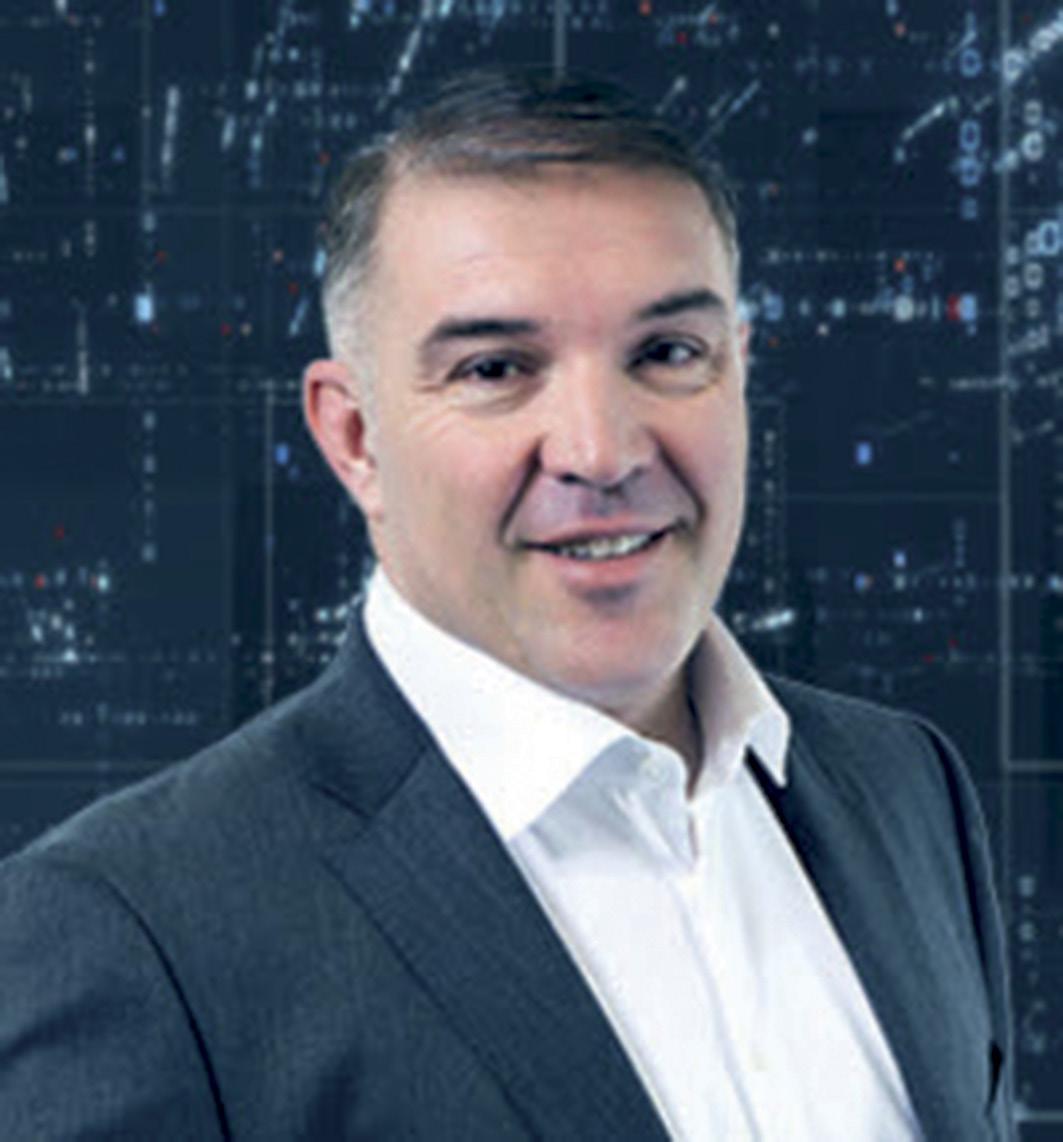
“We are now noticing an uptick in the project sector, especially in the Middle East, and we are back to preCovid levels of involvement in the region. I would go so far as to say there has even been a slight increase in activity, especially with our team’s focus and involvement with certain UAE national energy renewable projects such as the first UAE windfarm project supporting Roll Group. It is, of course, difficult to judge the entire sector, but from our level of involvement, we are seeing very positive developments.”
Many projects that had been placed on hold during the pandemic were finally back on track, along with renewed interest to invest, particularly in the Middle East, he said.
“We booked over 150,000 tonnes…amid a very challenging 2022 for a roll-on, roll-off freight market challenged with space capacity,” Fontarosa said.
“With our continued involvement in several initiatives ahead of the COP28 (United Nations Climate Change Conference) to be hosted by the UAE, we are targeting double-digit revenue growth this year,” he said. “With our focus on roll-on, roll-off, heavy-lift, general cargo and renewable energy projects, presently we are very confident that we will achieve this.”
Fontarosa said the sector was posing far less risk than had been the case during the pandemic, and indications were that the project sector would see sustained growth over the next few years, particularly in the energy and renewables sector which is seeing high demand for projects in the Middle East.
“In Africa, we are seeing more challenges than we do in the Middle East, particularly around the lack of infrastructure that does have an impact on ports and the movement of cargo. In the Middle East, there continues
Frederic Fontarosa
to be a high level of investment in infrastructure. Most of the countries here see their income generated by the price of oil that last year reached very high levels, and so there is a sustainable investment.”
According to Fontarosa, Wilhelmsen has identified Dubai and Abu Dhabi as logistical hubs for cargo into East Africa. “Together with our parent company and valued principals’ tonnage, we transport from here into East Africa using smaller vessels that the ports in these regions can accommodate. It does require a lot of logistics coordination, but it addresses the infrastructure challenges faced on the continent. On the positive side, investment into African ports is increasing with countries such as Mozambique, Kenya and Tanzania having identified port development as priorities.”
From a shipping line perspective, investment into innovation was ongoing, he said. “There is a major focus on driving down our environmental footprint, and we are investing heavily in digitalization.
“What does this mean for the project logistics sector? Improved track and trace of cargo delivery, easier enduser access to information and improved efficiency of operations. We continue to focus on the value-add that we can bring to clients with a sharp eye on the carbon footprint.”
28 BREAKBULK MAGAZINE www.breakbulk.com ISSUE 2 2023
UpFront
GREEN HYBRID SYSTEM SAVES > 50 % ENERGY

PORT MATERIAL HANDLER THE WORLD’S LARGEST
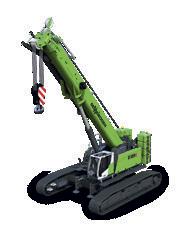
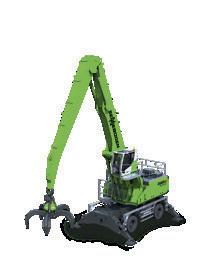

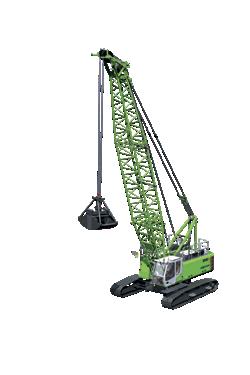
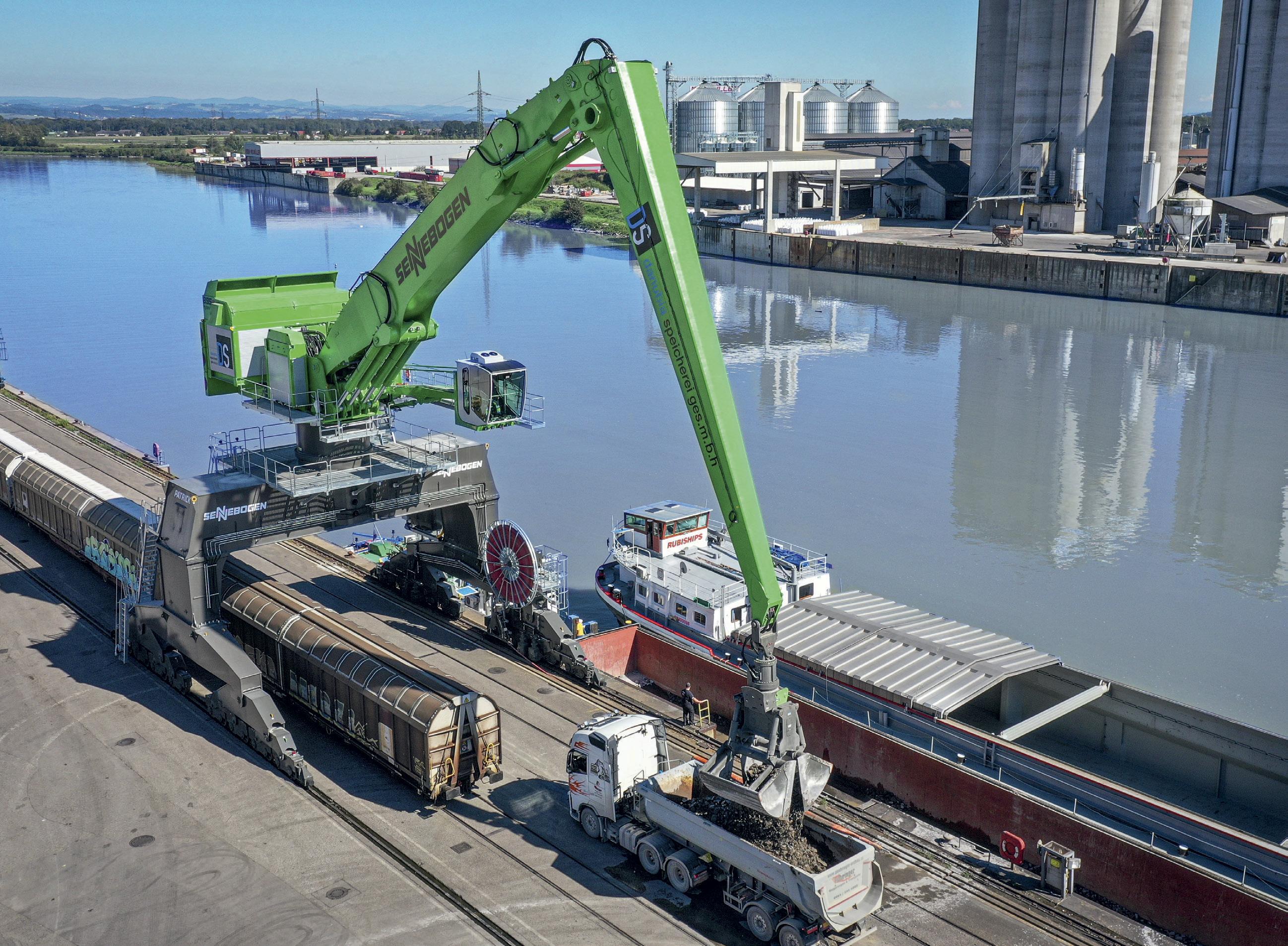
Bulk handling up to 40 m
Container handling up to 28 m
Customer specific: Rail gantry, crawler or mobile undercarriage



Best overview from 22 m eye-level
 Balancer
Balancer
SENNEBOGEN Maschinenfabrik GmbH 94315 Straubing, Germany michael.plecity@sennebogen.de
Duty Cycle Crane Telehandler Material Handling Crawler Crane Mobile Harbour Crane Telescopic Crane Michael Plecity

PROFILE BE AMBITIOUS, BUT BE TRUE TO YOURSELF DHL’s Sue Donoghue Talks Leadership, People 30 BREAKBULK MAGAZINE www.breakbulk.com ISSUE 2 2023
BY LIESL VENTER
Most people joining a corporate company aspire to climb the ladder. Maybe not all are aiming for the executive suite, but up seems to be the general direction they want to go. Most companies, on the other hand, make a big deal about the fact that only the brightest and highest potential will get it right. It’s a cutthroat culture often associated with ruthless ambition.
Fast-forward to my meeting with Sue Donoghue, Arab Cluster CEO for DHL Global Forwarding, to talk about corporates, leadership and how to get to the top. Within minutes of meeting, it is clear that she does not subscribe to ‘ruthless ambition’. She may be a senior executive in an international forwarding company, but she remains kind, compassionate, and caring.
Very soon into our discussion, I realize that while companies have impressive histories, excellent sustainability records, and the most sought-after products or services, all of this is essentially nothing without people. And no matter what the corporate culture or even the attributes of its employees, great leadership stands out.
“If I think about being a leader and what it takes to be one, then I have to go back to when I was a child. I was brought up with the notion that I should always try my best no matter what I am doing. I was taught to always be true to myself and who I am as a person first.”
As a young girl growing up in the UK Donoghue developed her moral compass – one that has guided her throughout her career. At school, she stood out as someone to turn to for guidance. As a Brownie and later a Scout leader and a swimming coach, she was able to hone her leadership skills, understanding what she considered to be right and acceptable for her as a person, and what was not.
“For me, it has always been important to be respectful, to be kind. I
have always wanted to make sure that everyone is okay and part of the group. To a certain degree, I think I have a natural affinity for leadership. Did I ever see myself as CEO of a Middle East Cluster for a logistics company, working in Saudi Arabia? Not at all! I did, however, know that I needed to do my best and give my best in whatever career I was going to choose. And there was always a certain desire to make it to the top.”
LOGISTICS BY CHANCE
Donoghue came to logistics by chance when a friend working for a freight forwarding company asked her if she would be willing to help out as a receptionist for two weeks. Displaying the same attitude and qualities that she does now as a cluster CEO, she took on the job and within weeks had managed to get herself appointed as a trainee forwarder.
“I had drive, I was curious, and I worked hard,” she said. “I was determined to be the best version of myself that I could ever be. The only person you can ever compare yourself to is you of yesterday. You measure your success on yourself, not on what someone else is doing or achieving. You can’t live anyone else’s life but your own.”
Donoghue also realized early on in her career that business is about people first and foremost. “I am the boss, but at the same time I am also a member of the team. I have my job because everyone that works around me, next to me, or even below me, all do so to the best of their ability to make DHL successful. But at the same time, I’m ambitious and encourage my team always to reach new heights. Of course, this also makes it necessary to make tough decisions and sometimes have the last word, but you should never lose sight of the human touch. You need to have a balance of respect and results, and you have to be authentic. And I’m glad that I work for a company where this is clearly reflected in the leadership attributes – where we should lead with head, heart and guts.”
For her, it has always been about creating an environment where people can thrive. “Leadership is a privilege that one earns. It is not a right and I am grateful for the opportunities I have had every day.”
MAKING A DIFFERENCE
Not one to underestimate the importance of hard work, Donoghue is a firm believer that nothing of value comes without effort. “I understand how I got to be where I am today, and I am not going to ask anything from anyone on my team that I am not prepared to do myself. I have done every job that you can think of in forwarding, one way or another. I understand an all-nighter, I understand difficult customers, I understand month-end and piles of invoices.”
Getting to the top, she said, is about good communication. “The ability to listen is very much a part of that. When you can listen and talk to people it becomes easier to get them to work together, building their strengths, improving their weaknesses, and not leaving anyone behind. It might sound idealistic, but for me, it is an approach that has paid off.”
Speak to anyone within the organization and they will tell you that Donoghue is somewhat different to the norm. “I have heard people say that I create a different sense in the teams I work with. I don’t necessarily see myself doing anything out of the ordinary or different. I follow my moral compass, trying to be kind and creating an environment that fosters respect. All I do is listen and guide my team as much as I can,” she said. “In every leadership role I have had, I have not always known at the get-go how I was going to achieve the goals required. I have, however, always known that I can only do it by being me and staying true to that. If I am different, I hope I have shown that different is not always bad.”
Donoghue has always emphasized the importance of a kind approach and of listening to one another. “We spend so much time at work and with our teams that in some way it does
PROFILE
www.breakbulk.com BREAKBULK MAGAZINE 31
become like a family. It is not always moonshine and roses. There are sometimes hard discussions that need to be had and incidents that are hurtful, but it means that one does not walk away when the going gets tough; you keep trying and you keep going because it matters.”
FOCUSED ON OUTCOMES
With people at the heart of the business, giving chances becomes just as important. “I am a firm believer in this,” Donoghue said, pointing to herself as someone who has achieved in her career thanks to someone being willing to give her an opportunity.

“There is no rulebook on how to climb the corporate ladder but when given the chance – take it. Push yourself forward and be noticed. It is of course important to also believe in yourself. Too many of us doubt that we can do it or we take things that happen at work far too personally, feeling that we are not enough.”
Her advice is clear. “Stop. Take a breath. Look at what you have accomplished and take the time to celebrate that. Early on in my career, there was an opportunity that I was passed on
because I was not a man. Yes, it stung but I refused to let it define me. It’s important that we measure ourselves by what we have achieved and not by what we haven’t accomplished.”
Has she achieved all she set out for? Not even close. “I still want to go further. I can’t tell you what that looks like, but I know there is more that I still want to do. I love the job that I am doing right now, but I like to think there is still another level in me and that I have more to give.”
She is passionate about making a difference, being a role model and inspiring those that work with her. “I am probably my own harshest critic and push myself harder than anyone else but my measure for success is not in what title I have been given or how quickly I was promoted to a higher position, but rather about whether I am making a difference to people’s work environments, creating spaces where they can reach higher and achieve more. We empower ourselves when we empower those around us, and we can do that without being ruthless or arrogant. Kindness is far too underrated in the corporate world.”
Building a career, said Donoghue, did not happen overnight. It required endurance. “It takes time and effort and an ongoing commitment. As you journey forward you need to keep your eye on that rearview mirror all the time remembering where you started and came from as you continuously move the goalposts forward.”
Making sure you are noticed and participating not only at the company level but within the industry is just as important. “Networking is key. Events such as those organized by Breakbulk offer incredible platforms to showcase oneself and the company you work for. Logistics and freight are just as much about people as they are about cargo. How do you climb the corporate ladder you ask? You have to be confident, passionate, driven, work hard, be visible, and create connections. But most of all you need to remember you are one of a team. A team that only makes a difference together.” BB
PROFILE ISSUE 2 2023 32 BREAKBULK MAGAZINE www.breakbulk.com
Liesl Venter is a transportation journalist based in South Africa.
“We empower ourselves when we empower those around us, and we can do that without being ruthless or arrogant. Kindness is far too underrated in the corporate world.”
NEW ERA FOR NUCLEAR
Despite their white sandy beaches, rolling dunes and lush pine forests, the unspoiled seaside towns of Leba and Debki in northern Poland have managed to remain a wellguarded secret among locals and the few Polish tourists that visit during the region’s balmy summer months.
Leba and Debki’s seclusion, though, may be short-lived: nestled between the two towns lies Lubiatowo-Kopalino, the site selected in late-2021 by Polskie Elektrownie Jadrowe, or PEJ, Poland’s state-controlled nuclear power company, as the preferred location for the country’s first large-scale nuclear power plant, or NPP.
If built, this cloistered corner on
Regions: Europe, North America
Problem: Ensuring energy security in multiple countries has become a number one priority
Solution: Nuclear energy is enjoying a renaissance to fill the Russia-sized gap in energy provisions
Poland’s Baltic Sea coast some 150 kilometers northwest of the breakbulk-handling Port of Gdansk will be front and center of the Polish government’s six to nine gigawatt electrical, or GWe, nuclear energy program.
Energy Transition, Security Driving New Project Announcements
BY SIMON WEST
Poland’s atomic ambitions stretch back decades – construction of an earlier NPP, known as Zarnowiec, was abandoned in 1990 in the wake of the Chernobyl disaster. But climate change targets and government plans to phase out coal-fired power stations by 2049 are giving this latest project extra drive.
A major milestone was reached in late February after PEJ signed a contract with U.S.-headquartered Westinghouse for front-end engineering, early procurement work and program development. Westinghouse had already been chosen to supply the technology and build the plant, which would feature “multiple” AP1000 reactors, the U.S. company said.

www.breakbulk.com BREAKBULK MAGAZINE 33 NUCLEAR
Top: The Sarens SGC-250 and SarSpin lift the 382-tonne liner ring for Nuclear Unit 2 at the UK’s Hinkley Point C nuclear power station site. CREDIT: SARENS
So far, Westinghouse has inked memorandums of understanding with 35 companies in Poland and 75 elsewhere in the region to cooperate on the installation of the proposed Baltic plant and other potential AP1000 projects in Eastern Europe. U.S. firms Bechtel and GE Steam Power have also been brought on board to develop the project.
Building work at Lubiatowo-Kopalino is slated to begin in 2026, with start-up by 2033.
“There is going to be a lot of work,” said Łukasz Chwalczuk, president of the Polish Heavy Transport Association. “Most of the equipment will be shipped to Gdansk, and then the 150 kilometers (to Lubiatowo-Kopalino) will have to travel via road as there is no rail to the plant. There are no mountains, and no lakes or big rivers for example, so the terrain is quite easy. Our members will hope to get a lot of new projects delivered.”
POLAND POWERS AHEAD
Poland’s nuclear plans are not limited to Lubiatowo-Kopalino.
Authorities announced in October that Polish power producers ZE PAK and PGE had paired up with Korea Hydro & Nuclear Power to assess the feasibility of installing an NPP in Patnow, central Poland, using South Korean APR-1400 technology.
KHNP said it was in the process of drawing up proposals covering the construction, costs and financing of the project.
Poland is just one of several European nations planning to build new nuclear power facilities or expand existing ones. David Durham, president of energy systems at Westinghouse, told Breakbulk that Europe was “definitely a key region,” with several countries interested in its AP1000 reactors.
Logistics specialists are noting a rise in NPP announcements.
Pointing to nuclear developments worldwide, Ben Cunnington, senior key account manager at Switzerlandbased deugro, said the company had “never been busier with project and technical proposals… than we are today.”
According to the Energy Industries Council, or EIC, 21 conventional projects and nine small modular reactor, or SMR, projects are in progress throughout the continent, although more than half are still in their feasibility and conceptual design stage.
Globally, some 56 NPPs are currently being built, according to the International Atomic Energy Agency, or IAEA. China and India lead the pack with 16 and eight projects, respectively, under construction.
For some analysts, the resurgence of nuclear power is being driven by the conflict in Ukraine, which continues to wreak havoc on energy markets.
“Russia’s invasion has reinforced how fragile fossil fuel supply chains are, and the economic impact of disruption to those supplies,” said Dr. Jonathan Cobb, senior communication manager at the World Nuclear Association. “More countries are developing plans for new nuclear build to provide greater energy security and reliability. Even countries such as Belgium and Germany with nuclear phase-out policies have delayed those phase-outs to reduce their short-term reliance on imported gas.”
PUBLIC SUPPORT SHIFT
Public aversion towards nuclear power – fomented by the disasters in Chernobyl and Fukushima – also appears to be softening.
A poll conducted last year in Poland by research group CBOS showed support for nuclear energy had reached a record-high of 75 percent, up from 39 percent in 2021. Just 13 percent of respondents were opposed, down from 45 percent.
“The war in Ukraine, with its negative effect on the availability and price of fuel, has contributed to a greater acceptance of plans for nuclear power stations in Poland,” CBOS concluded.
Some governments in the region have indicated that large-scale projects would only proceed after a public vote in favor, as is the case in the central European country of Slovenia.
There, authorities are mulling the construction of a second reactor at
its 696-megawatt-electric, or MWe, capacity Krško nuclear power station – known as NEK – a project that would help offset the country’s phaseout of coal by 2033. The existing plant, located in the municipality of Krško, eastern Slovenia, is operated by Nuklearna elektrarna Krško, a joint venture between Slovenia’s state-run energy company GEN Energija and Croatian power producer Hrvatska elektroprivreda.
NEK began commercial operations 40 years ago when Slovenia and Croatia were part of the former Yugoslavia. The plant is powered by a Westinghouse two-loop pressurized water reactor, or PWR, a type of reactor that uses water as a neutron moderator and coolant.
Earlier this year, the Slovenian government issued an environmental approval to extend the operating life of NEK until 2043. The plant covers a fifth of Slovenia’s electrical consumption and about 15 percent of Croatia’s.
According to GEN Energija, the proposed second unit would be a PWR with a generating capacity of about 1,100 MWe. The country’s infrastructure ministry in 2021 issued an energy permit for the project – dubbed JEK2 – paving the way for licensing procedures to begin.
A final green light to build the reactor is expected by 2027.
MAPPING SLOVENIA’S TERRAIN
Slovenia-based breakbulk specialist Comark has been moving cargo in and out of NEK since 1999. In a recent move for Siemens Energy, Comark shipped industrial components including a turbine rotor and casing weighing about 300 tonnes from the U.S. and Germany.
“The rotor was transported multimodal due to its weight and restrictions on European roads,” said Klemen Butala, commercial director and head of road freight at Comark. “We transported it from a German port to a Slovakian port via the Danube, and from there by road to its final destination in Krško, where the last mile was carried out with an SPMT.”
34 BREAKBULK MAGAZINE www.breakbulk.com ISSUE 2 2023
NUCLEAR
Transporting heavy units to NEK has been no easy task: new roads have been built from Slovenia’s Port of Koper on the Adriatic Sea to Krško, bridges have been reinforced and asphalt viaducts refurbished.
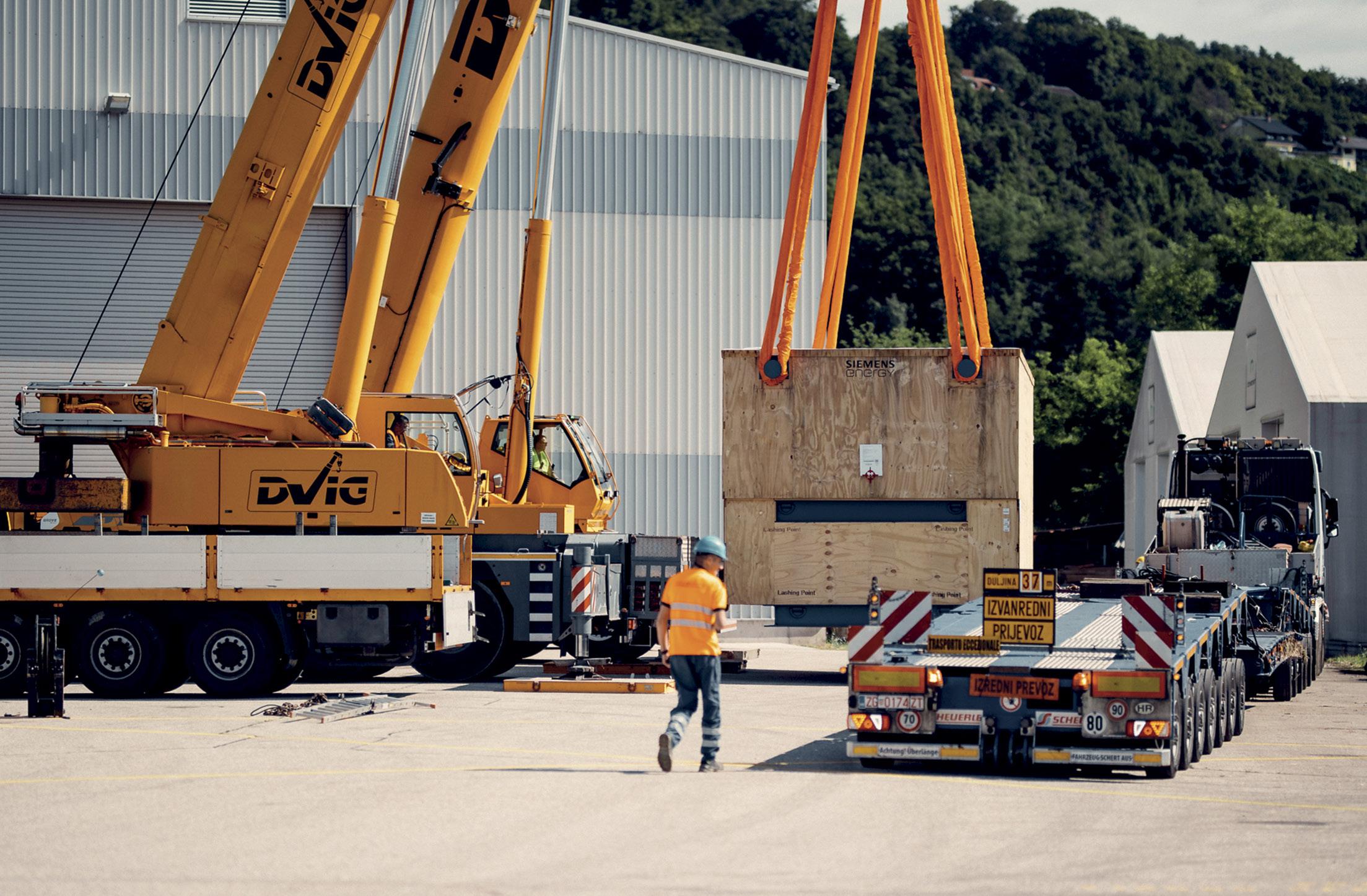
Comark’s project manager Benjamin Herman said the company had carried out route surveys “in almost every corner” of Slovenia. “We know all the limits, critical points and bottlenecks of Slovenian infrastructure. That gives us the confidence that we will find the most optimal solution to deliver all cargo related to JEK2.”
In the Czech Republic, the government is looking to add new capacity at the Dukovany and Temelín NPPs, part of plans to replace older reactors in operation that are expected to be shut down from 2035.
Czech state-controlled utility ČEZ revealed late last year that three companies – France’s EDF, Westinghouse and KHNP – had placed initial bids to build a new reactor unit at Dukovany. Final bids would be submitted in September, ČEZ said in a statement, with the winner announced in 2024. The new reactor should be up and running by 2036, the utility added.
EUROPE MAKES MOVES
Western European nations too are making some major announcements.
The Netherlands is planning to install two new reactors by 2035 at the Borssele NPP, while France’s Emmanuel Macron last year said EDF would build six new reactors by 2050, with the option for a further eight.
According to the EIC, eight NPPs in Europe have begun onsite engineering or construction, including the £33 billion Hinkley Point C power station in Somerset, southwest England. The plant, slated to begin operations in mid2028, will boast two PWRs providing 3,200 MWe of generating capacity. It is being developed by EDF Energy, the UK division of EDF.
The project reached a major milestone in February after taking delivery of one of its PWRs – the first civil nuclear reactor to arrive in the UK for more than 30 years.
Osprey was tasked with moving the French-made unit by barge from Avonmouth Docks in Bristol along the River Parrett to Combwich Wharf, a purpose-built dock designed to support the construction of Hinkley Point C. The UK-based operator then used SPMTs to deliver the PWR to Hinkley Point.
EDF is also developing the 3,200 MWe Sizewell C plant in Suffolk on the UK’s southern coast. The project, being built next to Sizewell B, is slated to start in 2024, with construction taking up to 12 years.
TECHNOLOGY SUPPORTS NUCLEAR GROWTH
Meanwhile, the emergence of SMRs – advanced reactors that have a generating capacity of up to 300 MWe – could translate into even more work for breakbulk.
According to the IAEA, these prefabricated units can be built and then shipped and installed on site, making them more affordable than larger plants that are often custom designed for a specific location. Their small and modular size could be used to repower coal-fired facilities, or provide baseload power for wind and solar, for example.
The technology was given a boost in January after the U.S. Nuclear Regulatory Commission certified the design of Portland-based NuScale Power’s 50 MWe advanced light-water SMR – the federal regulator’s first-ever endorsement of such a module.
Standing 76 feet tall and 15 feet wide, NuScale’s reactor could eventually generate 77 MWe of electricity – about 10 percent of the power of a conventional reactor. The company’s “VOYGR” plant could house up to 12 SMRs to produce 924 MWe of carbonfree energy.
Scott Bailey, vice president of supply chain at NuScale, told Breakbulk the NRC’s certification was a “historic step” towards a clean energy future,
www.breakbulk.com BREAKBULK MAGAZINE 35 NUCLEAR
CREDIT: COMARK
Comark handled 120 tonnes of cargo for Siemens Energy Slovenia from the U.S. and Germany for the NEK project.
and made its VOYGR concept a “nearterm deployable solution.”
The Portland-headquartered developer, which is majority-owned by Texas-based engineering, procurement and construction firm Fluor, has already inked 19 agreements to deploy its SMRs in 12 countries, including the Czech Republic, Poland and Romania. Its first SMR is slated to be up and running by 2029, reaching full operations the following year.
For World Nuclear Association’s Cobb, the future of nuclear power projects is no zero-sum game, with the construction of both large and small reactors needed for energy transition, he said.
“Fossil fuel energy security concerns have only strengthened the existing global goal to decarbonize energy supplies to achieve net zero greenhouse gas emissions. We are seeing greater realization worldwide that effective action on climate change is going to need a substantial contribution from nuclear energy.”
Colombia-based Simon West is senior reporter for Breakbulk.
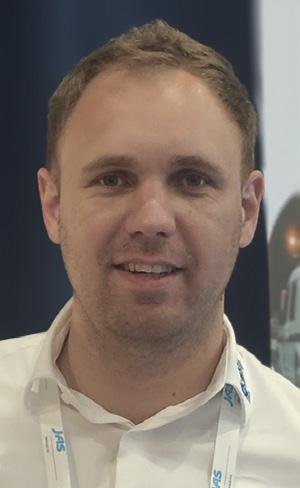
COMPLEX TASK OF TRANSPORTING NUCLEAR CARGOES

Transporting heavy and oversized cargo for a nuclear power plant is a “complex and challenging task,” said Valdi Pincin, head of Comark’s project department.
“The unique safety and regulatory requirements of nuclear power plants set them apart from other industrial projects, such as oil and gas or power, and require a higher level of attention and expertise from logistics and transportation teams,” Pincin said.
“The units are very heavy, and most of the time cannot be dismantled into smaller pieces, bringing total dimensions on the very high side. Transporting nuclear fuel assemblies and other sensitive components also demand strict security protocols, which can involve extensive
background checks, vehicle inspections and sometimes even the use of armed guards.”
Pincin outlined some of the main components required for an NPP:
• Reactor components – includes the reactor vessel, steam generators, pressurizers and control rod drive mechanisms – crucial for the functioning of the plant.
• Turbine components – includes the turbine rotor, generator rotor, condenser and other auxiliary units used for power generation.
• Cooling system components –includes large heat exchangers, cooling towers and pumps for cooling the reactor and the steam condensers.
• Fuel assemblies – NPPs need a steady supply of nuclear fuel in the form of fuel assemblies, which need to be transported to site.
• Heavy machinery – NPPs require a range of heavy machinery to build the facility, such as cranes, excavators and bulldozers.
• Building materials – installing an NPP requires a range of building materials, such as steel, concrete and rebar. BB
NUCLEAR
The first reactor in UK for 30 years arrives at Hinkley Point C. CREDIT: EDF
ISSUE 2 2023 36 BREAKBULK MAGAZINE www.breakbulk.com
Valdi Pincin Comark
NO EXCUSE FOR EMISSIONS CONFUSION
Project Kick-started to Standardize Reporting Parameters
In Rotterdam on May 17, 2022, various industry leaders kicked off an effort to develop a standard, industry-recognized guideline for measuring and reporting Scope 3 emissions in the breakbulk sector. Attendees included a range of ocean carriers, project freight forwarders and shippers.
During this initial meeting, there was recognition that having a neutral third party to assist with leading, moderating and eventually drafting the guideline would be important for its adoption and use in the future. Getting engagement from the industry is paramount to ensure different perspectives are considered.
During the subsequent Breakbulk conference in Houston on Sept. 27, 2022, the number of participants expanded to include ports and a wider sampling of carriers and shippers. This session included a thought-provoking session led by Smart Freight Centre, or SFC, from the Netherlands. SFC is an
BY STEPHEN SPOLJARIC
international non-profit organization focused on reducing greenhouse gas emissions from freight transportation.
One of the key areas of concern was to ensure that, as the industry enters this venture, we recognize the differences in types of vessels and how they trade, as opposed to some of the established standards used for measuring emissions in the unitized container liner service sector.
There are now over fifty companies committed to providing financial resources and their time to feedback sessions, collaborating with SFC to initiate the framework for what will eventually be produced. There is a scheduled virtual session for the middle of March with a target to have a full workshop in May at Breakbulk Europe.
Planned as part of the Breakbulk Europe Executive Summit, the workshop will be an invite-only session to capture and report on the progress and to identify the key steps to progress
the effort. Collectively, there will be targets established to have an initial guideline draft for review by the end of 2023.
This is an important subject for many in the industry and having a standard guideline to reference for reporting will achieve alignment between shippers, carriers and freight forwarders, facilitating the movement of goods, establishing a baseline for measuring, and ultimately focusing more on reducing our global carbon footprint.
If your company is interested in participating, please reach out to Elizabeth Rankin, head of content – Breakbulk & CWIEME at Hyve Group, on elizabeth.rankin@hyve. group. For more information on SFC visit www.smartfreightcentre.org/en/ what-is-sfc/

www.breakbulk.com BREAKBULK MAGAZINE 37
Stephen Spoljaric is corporate manager of global logistics at Bechtel.
BREAKBULK PROJECTS
AIMING FOR THE PROJECT STARS
Europe’s Space Ambitions Lean on Logistics
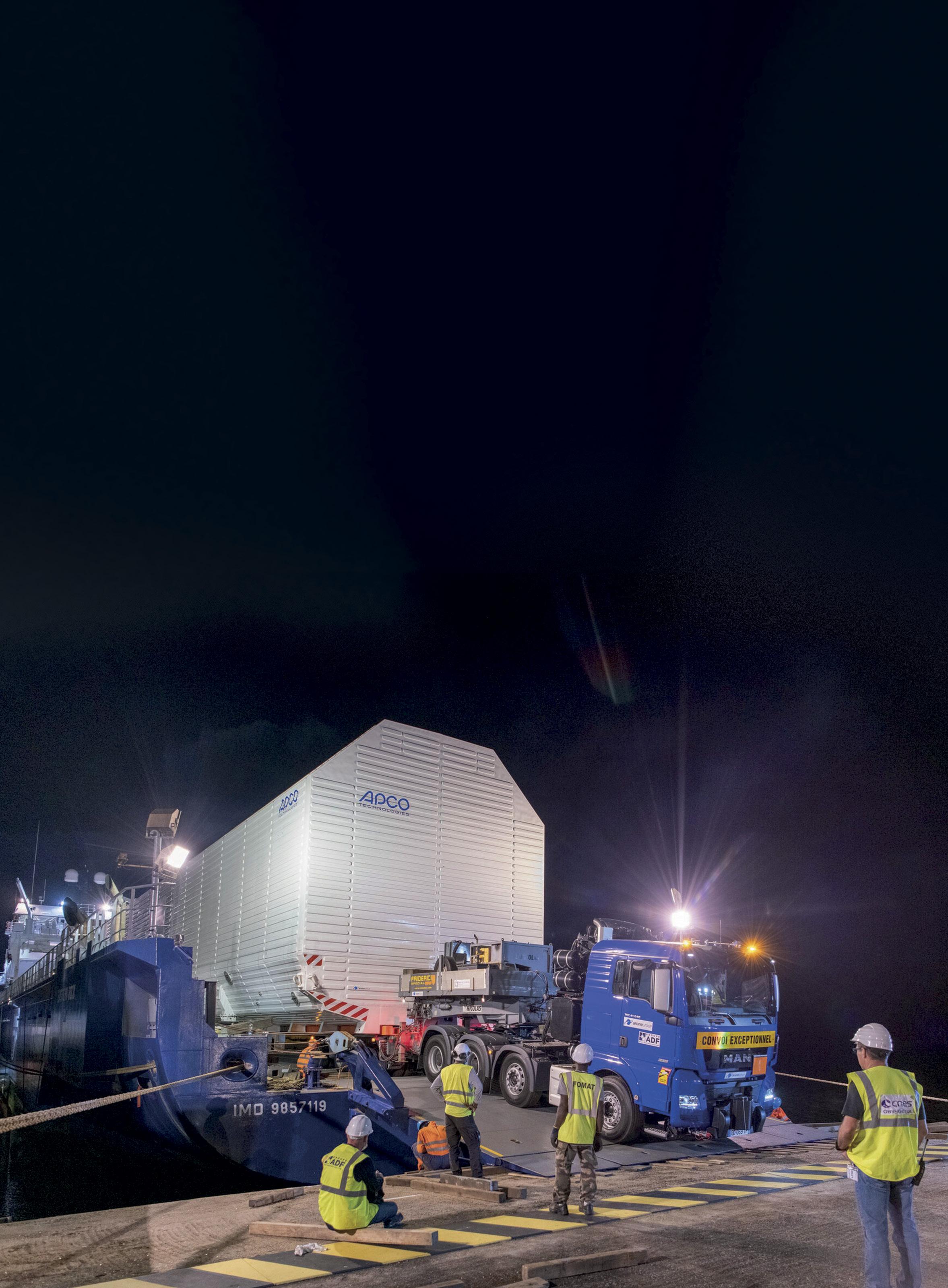 BY JOHN BENSALHIA
BY JOHN BENSALHIA
SPACE
Ariane 6 central core reaches Europe’s Spaceport.
38 BREAKBULK MAGAZINE www.breakbulk.com ISSUE 2 2023
CREDIT: ESA, CNES, ARIANESPACE
More than 60 years ago, German-American aerospace engineer Wernher von Braun acknowledged the critical need for logistics to support the space race when he famously said that it is “safe to state that many of us have not realized the enormous scope of the tasks performed in the (space) logistics area.” In a decade that would see space travel soar to new heights, von Braun presciently identified this logistics problem, warning that space projects would ultimately succeed or fail on the effectiveness of their logistics support.
Travel forward to 2023. Heeding von Braun’s warnings, there is today much greater awareness of the importance of smooth, efficient space logistics.
This year saw the unveiling of the newest launch vehicle in the Ariane family: Ariane 6, which will succeed the successful Ariane 5 launch vehicle, due to fly its last mission in summer 2023. Valeria Andreoni, newsroom and media relations in the communication department of the European Space Agency, said that Ariane 6 has been designed to provide a “competitive and versatile solution for the evolving needs of space transportation services.”
“Compared to the current Ariane 5, it is expected to be cheaper and easier to manufacture and operate. It will offer two launch configurations as well as various mission extension modules to flexibly respond to user needs beyond 2023 and enable the implementation of a wide range of mission concepts, such as support for the deployment of satellite constellations, ride shares for payloads of various sizes and payloads requiring complex orbital transfers,” she said.
In addition, various developments are under way to further increase the performance of future Ariane 6 variations, including a more powerful solid booster, light upper stages and in the longer-term through new engines and reusability of launcher components.
SPECIALLY DESIGNED TRANSPORT
Transportation of previous Arianespace launchers was handled by Compagnie Maritime Nantaise, or MN, which has overseen all Arianespace ship-
Region: Europe
Problem: Ever-larger and more complex cargoes to support Europe’s development of its space program need handling solutions
Solution: Project cargo movers have designed special ships to ensure that space aspirations can be realized
ments since the beginning of the 1980s.
Under a long-term contract which came to an end at the beginning of 2023, two dedicated roll-on, roll-off vessels – MN Colibri and MN Toucan – were specially designed for the Ariane 4 and 5 launchers logistics between Europe and French Guiana.
Mathias Audrain, commercial and business development manager at MN, explained the design: “Accessing through a straight stern ramp, the main deck is similar to a huge garage with a height of eight meters equipped with a water spray area. Furthermore, the weather deck is fully served by the vessel’s crane for general cargoes and containers stowage.” To ensure the guaranteed arrival of cargoes, these vessels have two shaft lines/main engines and two bow thrusters.
“In order to meet the constraints of the strongly nautical restrictions at Pariacabo space port (French Guiana), both of our vessels can guarantee a 3.8-meter draft,” Audrain said. “Furthermore, they are both able to manage a navigation into muddy waters.”
Between 2009 and 2021, Compagnie Maritime Nantaise also managed the Soyuz launchers transportation from Russia to the Europe Spaceport in French Guiana.
Today, MN is in charge of all the Avio maritime shipments for the Italian launchers from Italy to French Guiana and has developed an alternative way of satellite transportation by air using its MN Colibri and MN Toucan. “With Thales Alenia Space France, the routing of the KVHTS, MTG and E10B satellites to French Guiana and to United States (Port Canaveral – Florida) was
part of our last year’s activity,” Audrain said. “Furthermore, in 2021/2022, we managed with the MN Colibri vessel, the James Webb telescope transportation from California to French Guiana which required 10 years of preparatory work.”
MAJOR STEPS FORWARD
The packing and transport operation of the ground and board modules of Ariane 6 is being overseen by Legendre Group. Those modules will supply the rocket and launcher with fuel. The 121meter roll-on, roll-off vessel Canopée has been designed to ship these from European ports to French Guiana.
“Canopée reached Kourou for the first time in January 2023,” said Marc Yoann, commercial and communication director at Legendre Group. “This is the first sailing ship dedicated to space logistics. It is not active yet, but it will be a major step forward in the industry.”
Canopée is an example of custombuilding a vessel that meets the complex demands of transporting Ariane 6. The project, which began in 2020 at the Polish port of Sczezcin was led by the maritime company Alizés, a joint venture between offshore services specialist, Jifmar Offshore Services and Zéphyr & Borée, a start-up that specializes in low carbon shipping.
The voyage will involve several challenges including bearing heavy but fragile loads and traversing the Kourou river in French Guiana up to the Pariacabo harbor.
Karl-Heinz Servos, ArianeGroup’s head of industry, said that Canopée meets the objectives of the program, which were to reduce costs, shorten production cycles and reduce environmental footprint. “The success of the sea trials means that qualification tests can now begin in the harbors where Canopée will dock. Canopée will transport the inaugural flight Ariane 6 launcher from this summer, then the following launchers which are already being integrated at ArianeGroup’s sites in France and Germany.”
The development of Canopée was arranged in a number of stages. The initial stage was assembling the structural elements and installing the engines and
www.breakbulk.com BREAKBULK MAGAZINE 39 SPACE
PUTTING THE SUSTAINABLE INTO SPACE
The space sector is not immune to the requirement to cut carbon emissions and ensure sustainable operations. Life cycle assessments were conducted during the design, manufacturing and operation of Ariane 6 and efforts have been put in place to reduce the life cycle impact on the environment, including during the transport of launcher parts from Europe to the spaceport in French Guiana, and through the use of reusable energy sources for fuel production.
Project HYGUANE (HYdrogène
GUyanais A Neutralité Environnementale) is a collaboration between the European Space Agency, the French space agency CNES, and a group of industrial and academic partners. Its mission is to reduce CO 2 emissions, replacing regular ‘grey’ hydrogen with a green alternative that is produced by water electrolysis from
renewable energy. A crucial part of the project in the installation of a hydrogen eco-system to French Guiana, that enables hydrogen-fueled heavy transport of people and goods, as well as hydrogen fuel cells for energy storage.
Teddy Peponnet, ESA’s European spaceport infrastructure and renewable energy project manager, explained that green hydrogen production will cut costs, reduce exposure to rising fossil fuel prices and take a load off French Guiana’s electricity grid. “HYGUANE will put us well ahead of COP21 and European Green Deal emissions objectives.”
ESA’s director of space transportation Daniel Neuenschwander added: “A green hydrogen system will support environmental sustainability, stabilize costs and protect Spaceport operations from energy supply disruption.”
control systems. The next step was to complete the fit out of elements such as navigation instruments, system start-up and cabling. This took place in Rotterdam.
An important aspect of this process was the trial of the vessel to ensure that everything ran like clockwork, from safety systems to electrics and propulsion. By December 2022, Canopée attained its official seaworthiness certificate, thus making the crossing to French Guiana. Future additions include the fitting of four articulated wingsails by the summer of 2023.

MEETING CHALLENGES
However, as Legendre’s Yoann noted, space-related cargo is one of the most challenging types of project cargo. “This is because you have to consider the value of the goods transported, and the delay to reconstruct a cargo if any issue occurred. So, safety and insurance are two main topics to be checked in priority.”
ISSUE 2 2023 40 BREAKBULK MAGAZINE www.breakbulk.com
SPACE
Canopée, the new Ariane 6 transport ship, reached Pariacabo harbor in French Guiana on January 13, 2023, after leaving Rotterdam on December 27, 2022.
CREDIT: ARIANE GROUP
The emphasis is on detailed planning and preparation. Yoann explained that for the French part of the Ariane 6 project, in French Guiana, it is “specific territory, on which you have no backup solutions if the infrastructure is unavailable. So, preparation is very important to make sure you could use the bridges, road, cranes or port infrastructures.”
The transport of these sensitive and sometimes dangerous equipment components requires specific analyses and is akin to – as MN’s Audrain commented – “haute couture instead of ready-towear fashion.”
“The main challenge is to ensure the integrity of the components during the sea transportation and to provide our support to the client’s conveyors during sea passage.”

Audrain added that MN’s crews are trained and highly qualified to handle these high value-added cargoes and masters adapt the vessel’s route to avoid any meteorological hazards.
During the preparatory phases, all stowage and lashing plans are designed
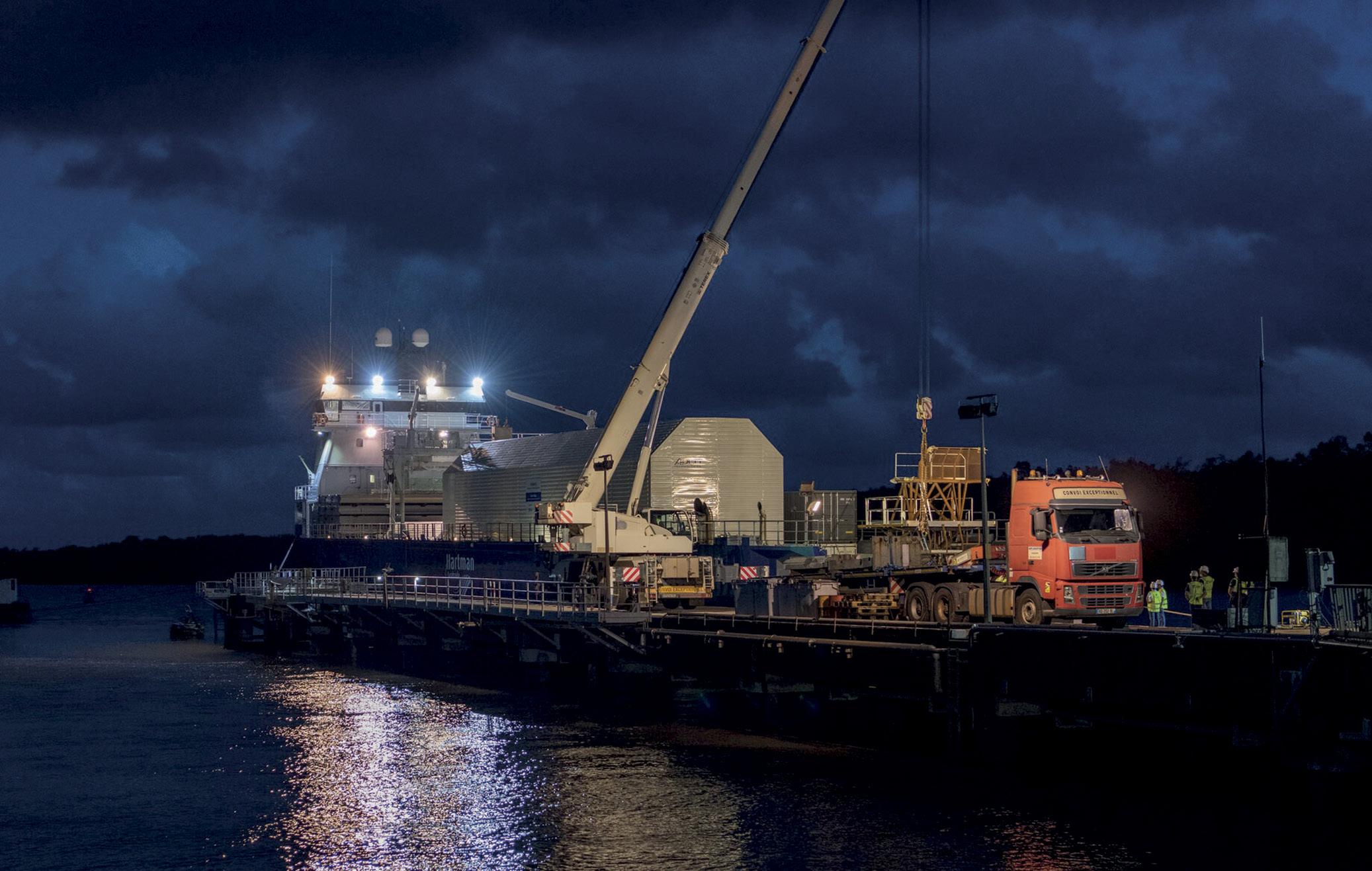
www.breakbulk.com BREAKBULK MAGAZINE 41 SPACE
Compagnie Maritime Nantaise has overseen all Arianespace shipments since the beginning of the 1980s.
CREDIT: ESA, CNES, ARIANESPACE
Legendre Group oversees the packing and transport operation of the ground and board modules of Ariane 6.
CREDIT: LEGENDRE GROUP
by MN’s engineering department and then validated by its clients.
Each satellite transport requires a tailor-made solution and proposal. “Each maritime transport constitutes a project by itself, and we are pleased to serve and provide our customers with our know-how.”
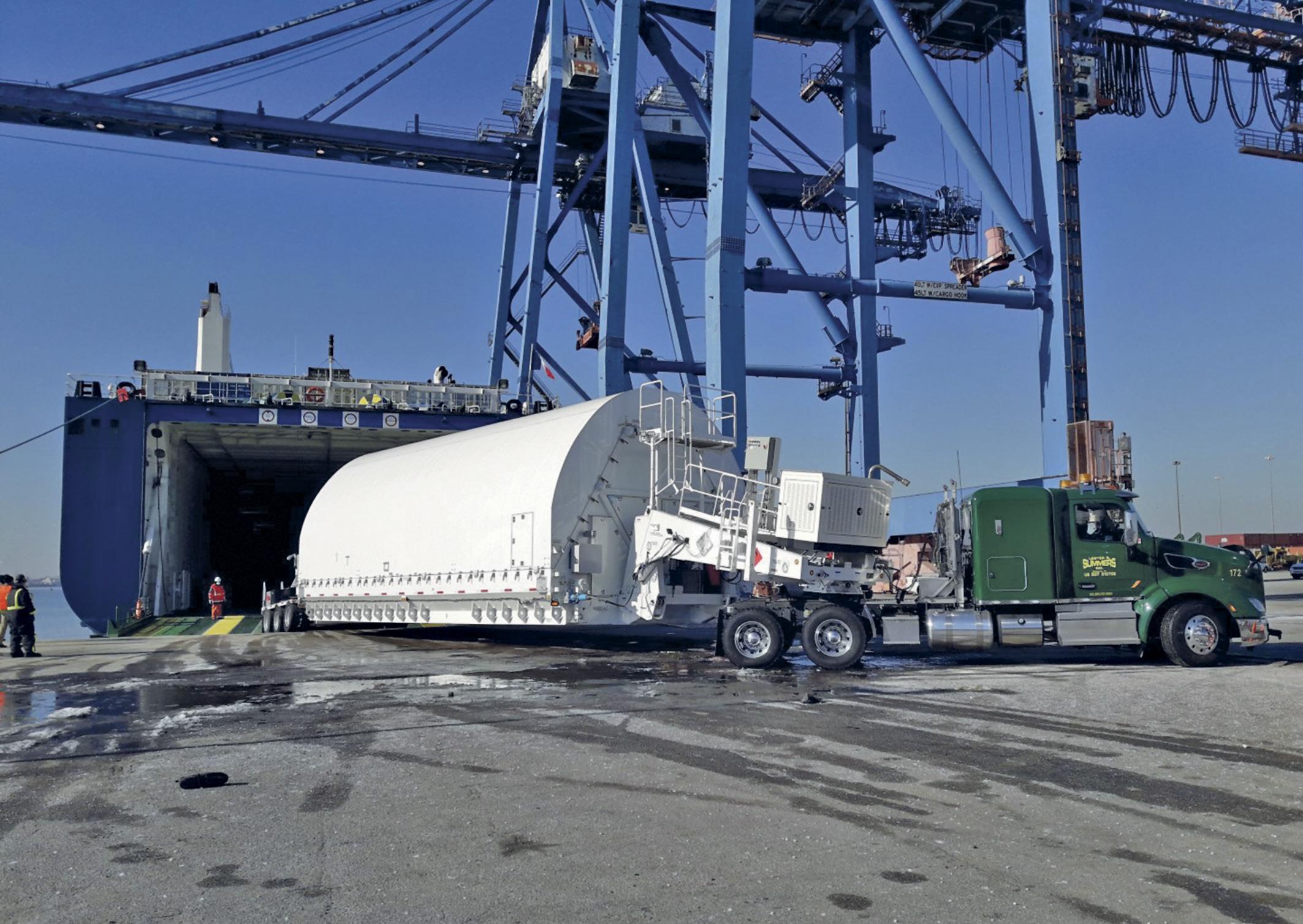
Most of the Ariane 6 components were manufactured and pre-assembled in Europe and then shipped to Europe’s Spaceport in French Guiana for final assembly. “For Ariane 6 , the main stage and upper stage are assembled horizontally, versus vertically as done with previous Ariane launcher generations,” ESA’s Andreoni said. “This is expected to accelerate and simplify the preparation of the launch vehicle for launch.”
MAKING SPACE CONNECTIONS
Aerospace engineer Von Braun couldn’t have foreseen the giant progress in the space logistics field.
A report from Allied Market Research predicted that the space logistics market will generate US$19.8 billion by 2040. And the cargo and material segment is the one expected to bring the highest compound annual growth rate of 18.1 percent from 2030 to 2040, due to an increase in the number of space stations and space exploration missions.
The European Space Agency’s Andreoni agreed that demand for the delivery of space logistics cargo is expected to further increase in the coming years, including cargo delivery to commercial low Earth orbit stations, to the Lunar Gateway and eventually to the Lunar surface. Demand is also expected to increase for in-orbit servicing, assembly and manufacturing and for de-/re-orbit missions. “Various mission extension modules have been developed or are under development to enhance the versatility of Ariane 6 and to meet current and future user needs,” she said.
Added to this, ongoing technology developments, such as new rocket engines, lighter structural elements and reusability demonstrations of main and upper stages, could be integrated into future Ariane 6 evolutions or form the basis for a new launch vehicle generation.
If the projected future demand for space logistics services is realized, project cargo movers will be in demand. “The need for transporting payloads and launcher components between manufacturing and to launch sites, for example, by land, sea or air transport, also requires cargo move services,” Andreoni said, urging project cargo specialists to explore opportunities in support of space logistics. BB
John Bensalhia is a freelance writer and author with 25 years’ experience of writing for a wide range of publications and websites.
ISSUE 2 2023 42 BREAKBULK MAGAZINE www.breakbulk.com
SPACE
CREDIT: COMPAGNIE MARITIME NANTAISE


Delivering what your customers need. Port Houston City Docks www.porthouston.com
ENGINEERING FAULTS, BUT LOGISTICS EXCELLENCE
Seminal ITER Project Hit by Delays
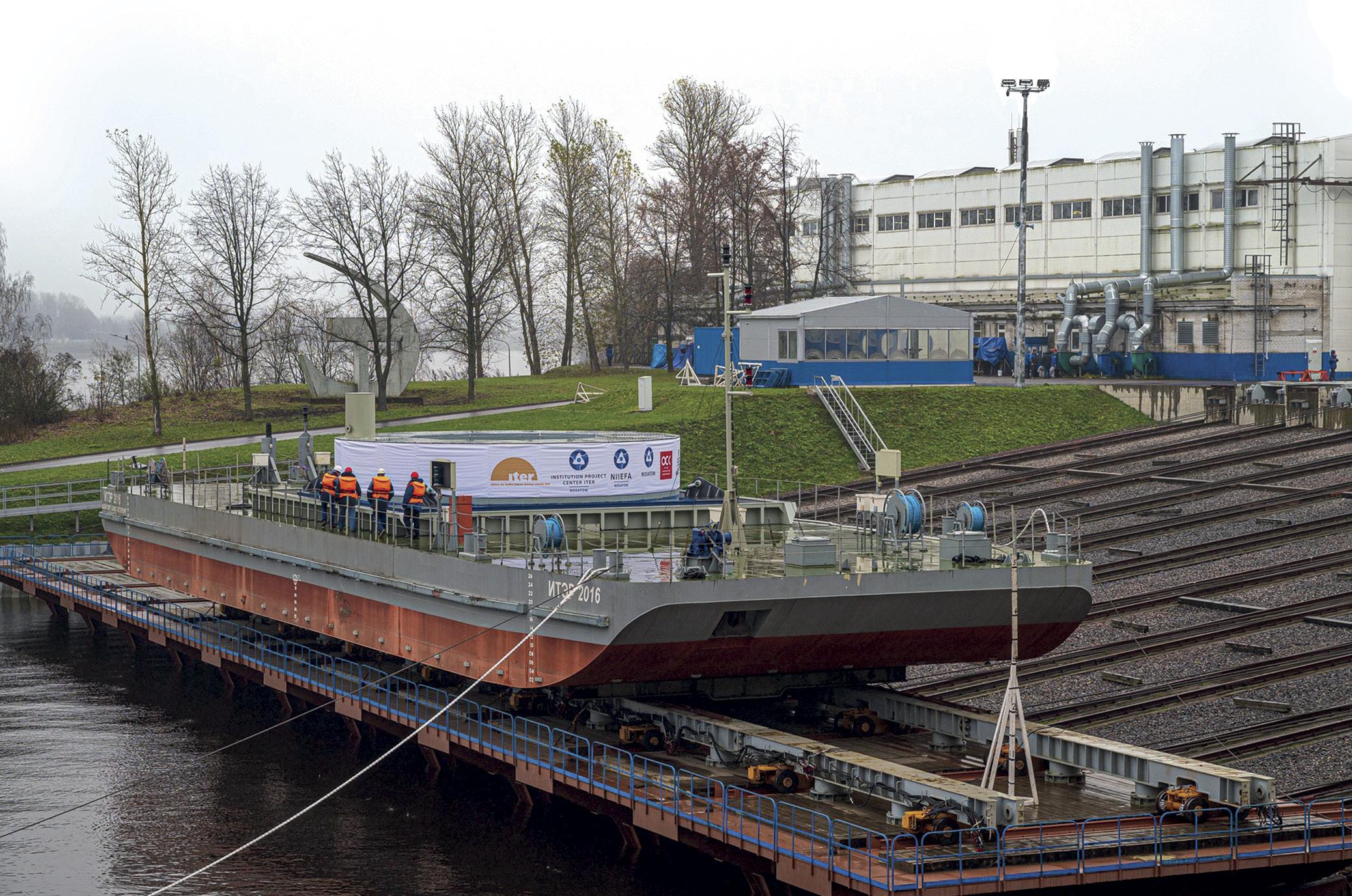
You don’t attempt to build a sun on earth and not expect some technical problems along the way. That has certainly been the case with ITER, the long-running international project to harness the power of fusion – the nuclear reaction that powers the Sun and the stars – to provide clean, carbon-free sustainable
BY AMY MCLELLAN
energy here on earth. ITER, originally the International Thermonuclear Experimental Reactor, has been designed as the key experimental step between today’s fusion research machines and tomorrow’s commercial fusion power plants. It has been making steady progress at its 180-hectare site in Saint Paul-lez-Durance in southern France,
Region: Europe
Problem: Spiraling costs and technical setbacks put the ambitious ITER project on an uneasy footing
Solution: Standout logistics specialists prove themselves ready to service assemblyrelated issues
but events of recent years have hit budgets and timelines.
ITER is a truly international project, bringing together China, the European Union, India, Japan, South Korea, Russia and the U.S., with the manufacturing of components spread across specialist factories spanning three continents, designing and building the 1 million components and 10 million parts. Project assembly of the massive components in the tokamak pit began in 2020, with French President Emmanuel Macron hailing the international energy program as a “promise of peace” and then ITER Director-General Bernard Bigot
LOGISTICS
ITER 44 BREAKBULK MAGAZINE www.breakbulk.com ISSUE 2 2023
Loading up poloidal field coil #1 in Russia. CREDIT:
saying the team “felt the weight of history.”
At the time, the ITER team was targeting first plasma in December 2025 and deuterium-tritium operations (the fusion reaction) in 2035. Those targets now seem hopelessly out of reach. Covid-19 and its related travel restrictions inevitably created logistical headaches for those charged with delivering the components across international borders, while the outbreak of war in Ukraine has helped ratchet inflationary pressures across the world, adding to supply chain issues not to mention inflating the project’s costs.

Then there are the technical and regulatory delays. A research trip by members of the U.S. congress to ITER in October 2022 shed some light on the extent of these, noting that an existing 35-month delay to first plasma could prove to be a cumulative five-year delay following the discovery of flaws in some major components. This will have inevitable implications for the budget, which remains opaque due to the different ways the participating countries account for their share of funding. The U.S. Department of Energy, however, has speculated the costs could well have swollen to US$65 billion, though this is disputed by ITER.
TECHNICAL PROBLEMS
Indeed, the complications have come thick and fast for ITER over the past 12 months. Early in 2022, the French nuclear safety regulator ASN
put the tokamak welding on hold due to vacuum vessel “nonconformities.” On a project where the permitted deviations on a 300-tonne part are measured in mere millimeters, there is no scope for error. ASN also said the two-meterthick concrete radiological shielding to be installed around the reactor is inadequate to protect personnel once experimental operations get underway in 2025, and raised concerns that any increase to the shielding could cause the total weight of the reactor to exceed the 140,000-tonne capacity of its earthquake-resistant foundation.
Then, in November 2022, two-anda-half years into the project’s machine assembly phase, it was announced that defects had been identified in two key tokamak components: the thermal shields and the vacuum vessel sectors. The new director-general, Pietro Barabaschi, who was appointed following the death of Bigot in 2022, said “there was no scandal here,” and such issues were to be expected in any industrial venture involving first-of-a-kind components.
“If there is one ‘good thing’ about this situation” Barabaschi added, “it is that it is happening at a moment [when] we can fix it. The knowhow we are acquiring in dealing with ITER’s firstof-a-kind components will serve others when they launch their own fusion ventures.”
Perhaps, understandably, given the high level of international collaboration, the project team is reluctant to
point fingers for the technical problems. “The technical issues we discovered are not a problem of a specific workshop,” said Laban Coblentz, head of ITER communication. “The reasons lie more in the complexity of these first-of-akind components which underwent a 5-year manufacturing process including repeated heating and cooling cycles. So yes, it could be that other vacuum vessel sectors are facing similar problems, but now we are aware of the risk and can react and recover accordingly.”
The problem was identified on three, yet-uninstalled vacuum vessel thermal shield panels – there are 27 such panels in all. The thermal shield panels have been impacted by “stress corrosion cracking” that has affected the cooling pipes welded to the component surface. During the manufacturing process, chlorine residues were trapped in tiny pockets near the welds, causing cracks up to 2.2 millimeters deep. The decision was taken to remove and replace all cooling pipes (23 kilometers in total) from the panels.
“After the washing of the cooling pipes some chloride inadvertently remained inside and reacted with the austenitic steel the pipes are made of,” Coblentz explained. “That made the steel vulnerable to chloride stress corrosion.”
A different steel formulation will be used in pipe fabrication that will be more resistant to corrosion and different welding processes will be used. There is also the possibility that “a few” panels may be re-manufactured, which could prove cheaper than repairing them.
www.breakbulk.com BREAKBULK MAGAZINE 45 LOGISTICS
Toroidal field coil #15 (TF15) reaches the ITER site on January 13, 2023.
CREDIT: JEAN-MARIE HOSATTE – REA
LOGISTICS
FROM ASSEMBLY TO DIS-ASSEMBLY
The ITER management is working to the assumption that the crack issue in the cooling pipes could be systemic, affecting all thermal shield components – including the lower cryostat thermal shield, which has already been installed. Three vacuum vessel sectors have also been found to have dimensional non-conformities, one of which forms the core of the “module” already in place in the assembly pit. These are among the biggest components of the machine, as high as a five-story building and as heavy as an Airbus A380.
The repairs are therefore going to involve some complex logistics, with reshuffles of these vast pieces of equipment to create room for repairs. Fortunately, there are many storage facilities and laydown areas all around the worksite to facilitate this work.
The duration and cost of the repairs cannot be estimated, but as directorgeneral Barabaschi admitted, it will be
“a substantial amount of time…and time always costs money.”
COMPLEX TRANSPORTATION GOES TO PLAN

Of all the things that could have gone wrong, however, it seems the trans-continental shipment of extremely heavy, large and yet perversely delicate components and instruments has been relatively smooth. This is partly down to rigorous planning, preparation and the expertise of the specialist heavy load contractors called up to ship the components to the south of France.
Delivering these one-of-kind highly sensitive components to southern France from specialist facilities as far-flung as Russia and Japan was something of a unique challenge – but one that project cargo specialists took in their stride.
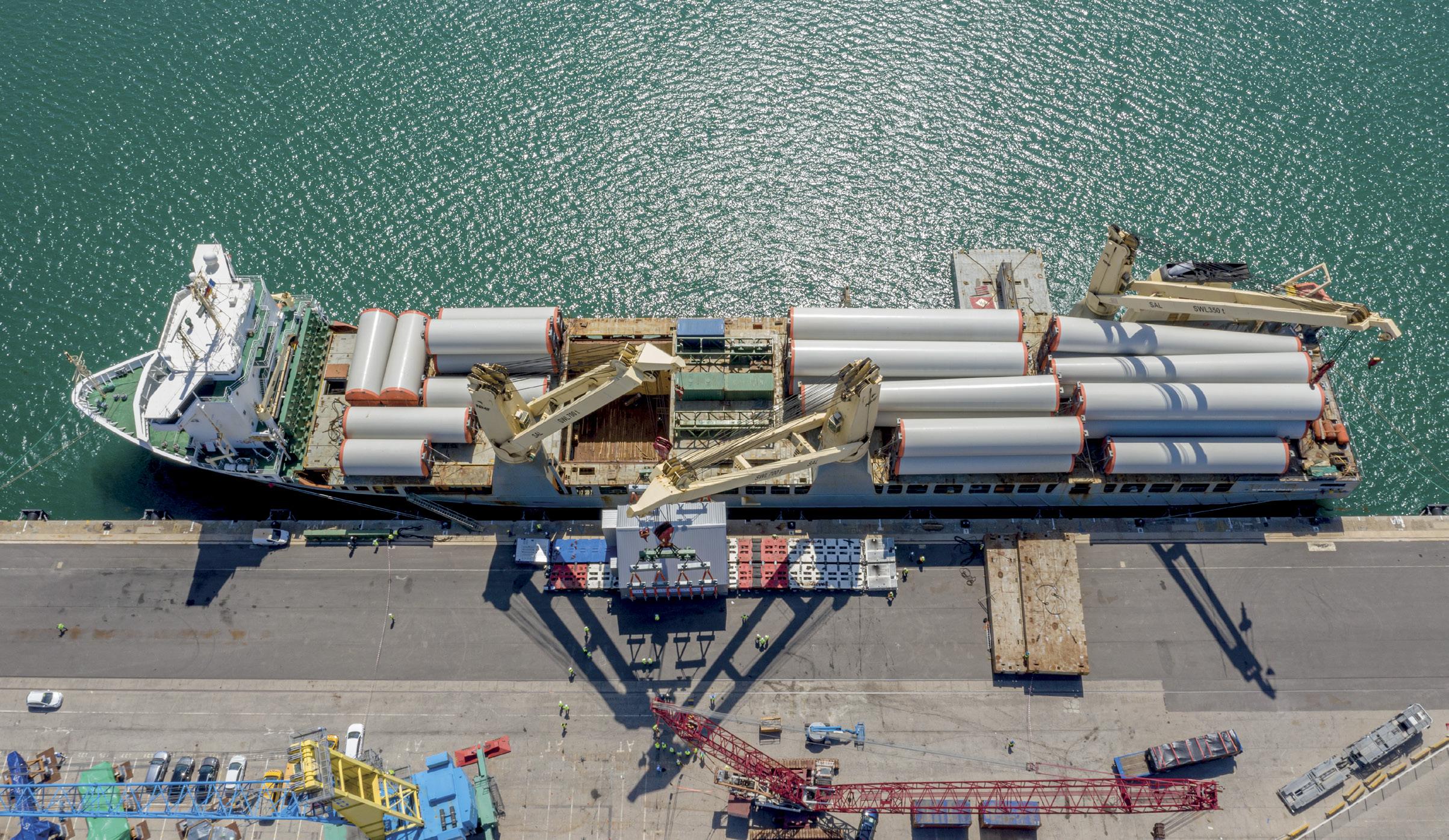
“These are very large components, but the size is normal for us,” said Martin Jung, manager of chartering at Bremen-headquartered Harren Group, which owns SAL Heavy Lift (a member
of the JumboSAL-Alliance) and which last year completed its acquisition of Intermarine. “This is what we do, it’s our core business.”
The company, working with FrancNav, was in charge of transporting the specialist components on the long journey from Asia to the ITER site in the south of France. “The client was very cautious, because these components are unique,” Jung said. “There is only one of each available so there are huge safety margins to protect them during transit. We started planning from scratch, from the bottom up, with the simple question: how do we protect the cargo against any damage? We took a long time to build and test a solution.”
ISSUE 2 2023 46 BREAKBULK MAGAZINE www.breakbulk.com
Martin Jung Harren Group
SAL Heavy Lift worked with FrancNav to transport specialist components from Asia to the ITER site in the south of France.
CREDIT: HARREN GROUP
One issue was that the giant components are very sensitive to accelerations during the sea journey. “We had to be very careful about bad weather and risk management,” Jung said. “If there was bad weather, we had to deviate or slow down, and thankfully we kept the acceleration within the limits.”
“Lifting was another big challenge, as we weren’t sure how to do this. But we found a way, the engineers solved this, working with the masters and crew, and the client was really prepared,” he recalled. “We had a great dialogue and that makes all the difference.”
PANDEMIC CHALLENGES
Sea journeys weren’t the only tricky element. Life was made more challenging by the arrival of Covid-19 in 2020. The shipment of toroidal coils from Italy – where they were built at ASG Superconductors near Milan and the SIMIC facility at Marghera, Port of Venice – was the first real pandemic test.
“We were the first port in Europe to be under a Red Zone,” said Pino Musolino, president and CEO of the North Adriatic Sea Port Authority, which handled the shipment of the Italian contribution. “Overnight we had to invent rules and procedures we had not had to envisage before to keep everyone safe. It complicated things, but we were quick enough and wise enough that we were able to manage everything and never had one day of disruption or lost job during the lockdown.”
These journeys were not just sea voyages, but often involved road, river and sea. Take for example the journey of the poloidal field coil #1, which measures 9 meters across and weighs in at 160 tonnes (and this is the smallest of the six ring-shaped magnets that circle the tokamak). It was built at the Sredne Nevsky Shipyard in Saint Petersburg, from which it departed in November 2022. It sailed down the Neva River to the open sea through the Gulf of Finland. From there it traversed the Baltic Sea, the North Sea, the Atlantic and the Mediterranean to reach Marseille’s industrial harbor. As one of the widest highly exceptional loads to make the 105-kilometer-long overland journey from Marseilles to the ITER construction site, the
BUILDING A STAR ON EARTH
It is 100 years since scientists first understood that fusion energy was the power source for the sun, and some six decades since the first tokamak – a Russian acronym that means “toroidal chamber with magnetic coils” – was built in the Soviet Union. Until now, however, fusion power has been confined to small-scale experimental machines; ITER will be the bridge to tomorrow’s commercial-scale fusion power plants.
The ITER “tokamak” device itself comprises a seven-story structure in reinforced concrete. It will weigh 23,000 tonnes, equivalent to three Eiffel Towers, making it the largest and most powerful fusion machine ever built.
Inside its vacuum vessel, hydrogen isotopes will be heated to temperatures in excess of 150 million degrees Celsius – 10 times as hot as the sun’s core – to form 830 cubic meters of hot plasma. Magnetic fields created by an array of giant superconducting coils and a
PF#1 posed something of a project cargo challenge, as it had to steer through plane-tree-lined roads, over bridges and an extremely narrow passage between two small cliffs on the approach to the ITER construction site. As a result of these challenges, it took the 288-wheel self-propelled modular trailer and its associated road convoy of specialist tractors and police four rather than three nights to make the journey along a route that has seen roads widened, bridges reinforced and intersections modified in preparation for the exceptional size and weight of some of the tokamak components.
LEARNING LESSONS AND LOOKING AHEAD
For now, the focus is on understanding and remedying the technical issues that have hit the project. ITER itself is putting a brave face on events, noting that as a research project this is the time to experience a whole range of challenges and setbacks, which can
strong electrical current will act as a powerful magnetic cage to shape and confine the superhot plasma so that it floats within the magnetic field without touching the walls of the ITER vacuum vessel.
This superhot plasma will generate fusion reactions that will release 4 million times more energy than the burning of oil or gas. Inside a tokamak, the energy produced through the fusion of atoms is absorbed as heat in the walls of the vessel.
Should the ITER experiments prove successful, then in the future this heat would be used to produce steam and then electricity by way of turbines and generators.
The ITER tokamak will be the largest and most powerful fusion device in the world. Designed to produce 500 megawatts of fusion power for 50 megawatts of input heating power (a power amplification ratio of 10), it will take its place in history as the first fusion device to create net energy.
then be communicated to the scientific community so they can take precautions when dealing with the same type of assemblies.
These projects are already underway. South Korea, for example, is planning to leverage learnings from ITER to begin building its own commercial nuclear fusion reactor with capacity of 500 MWe after 2035, with first electric power around 2050.
ITER may be beset by difficulties right now, and its ballooning budget may create a political headache in fiscally challenging times, but it is still a beacon for scientific endeavor and what can be achieved when countries can pull together in search of a solution to one of the greatest problems facing humanity: clean, abundant energy. BB
Freelance journalist Amy McLellan has been reporting on the highs and lows of the upstream oil and gas and maritime industries for over 20 years.
www.breakbulk.com BREAKBULK MAGAZINE 47 LOGISTICS
THOUGHT LEADER
Don’t Leave Crane Operating Standards to Chance
Plea to Back ESTA’s European License
In the final days of 2022, the new European Crane Operator’s License, or ECOL, received a double boost.
they are happy that the license meets their standards.
BY TON KLIJN
Firstly, the international heavy lifting and transport company Sarens launched its expanded training center at Wolvertem in Belgium and said that it would be including ECOL in its courses.
Then a few days later, the authorities at SUVA (Schweizerische Unfallversicherungsanstalt), the Swiss National Accident Insurance Fund, announced that Switzerland would become the latest country to formally recognize ECOL.
As a result, as of January 1 this year, an ECOL licensed operator could request the issue of a Swiss SUVA crane operator license, Kranführerausweis Kat, A. without the need for any further training or testing.
Switzerland is the fifth territory to recognize ECOL following Belgium, Denmark, the Netherlands and British Columbia in Canada. Talks are also continuing with authorities in Germany, Spain, Ireland and the UK.
Standards in Switzerland are very high and if experts there are happy to back ECOL, we hope it will encourage other national authorities to follow suit.
As you can see, ECOL is slowly gaining acceptance right across Europe and beyond. The process is slower than we would like but it is, perhaps, understandable for national authorities to take their time in checking that
What is less clear is why the industry’s major corporate clients have so far been lukewarm in their support, when the safety and business case for an accepted Europe-wide crane operators’ license is overwhelming, and despite the strong, private support of many of their own staff.
Privately, I have heard nothing but praise for ESTA’s work on ECOL from project and site managers in a wide range of sectors – oil and gas, the wind industry, civil engineering and more.
Many managers tell us they worry that they do not know whether the operators of cranes on their projects are really qualified to do the job.
Yet this private support on site is not translated into corporate action in the boardroom.
LEVELLING THE PLAYING FIELD
Up to now, each European country has its own rules for the professional competence and certification of crane operators. The differences can lead to confusion, have a negative impact on safety and make it difficult for crane operators to work in different countries, to the detriment of both individual operators and their employers.
What is more, by helping to make crane operating a more secure and attractive job, ECOL can contribute to increasing diversity within the industry and hopefully help to reduce the sector’s skills shortages.
In November 2022, Kelly Doruijter, from the city of Spijkenisse in the Netherlands, became the first woman to hold an ECOL license. She joined Mammoet in April 2021 and worked as a rigger before starting crane operator training at the company’s academy. Hopefully, Kelly will be the first of many.
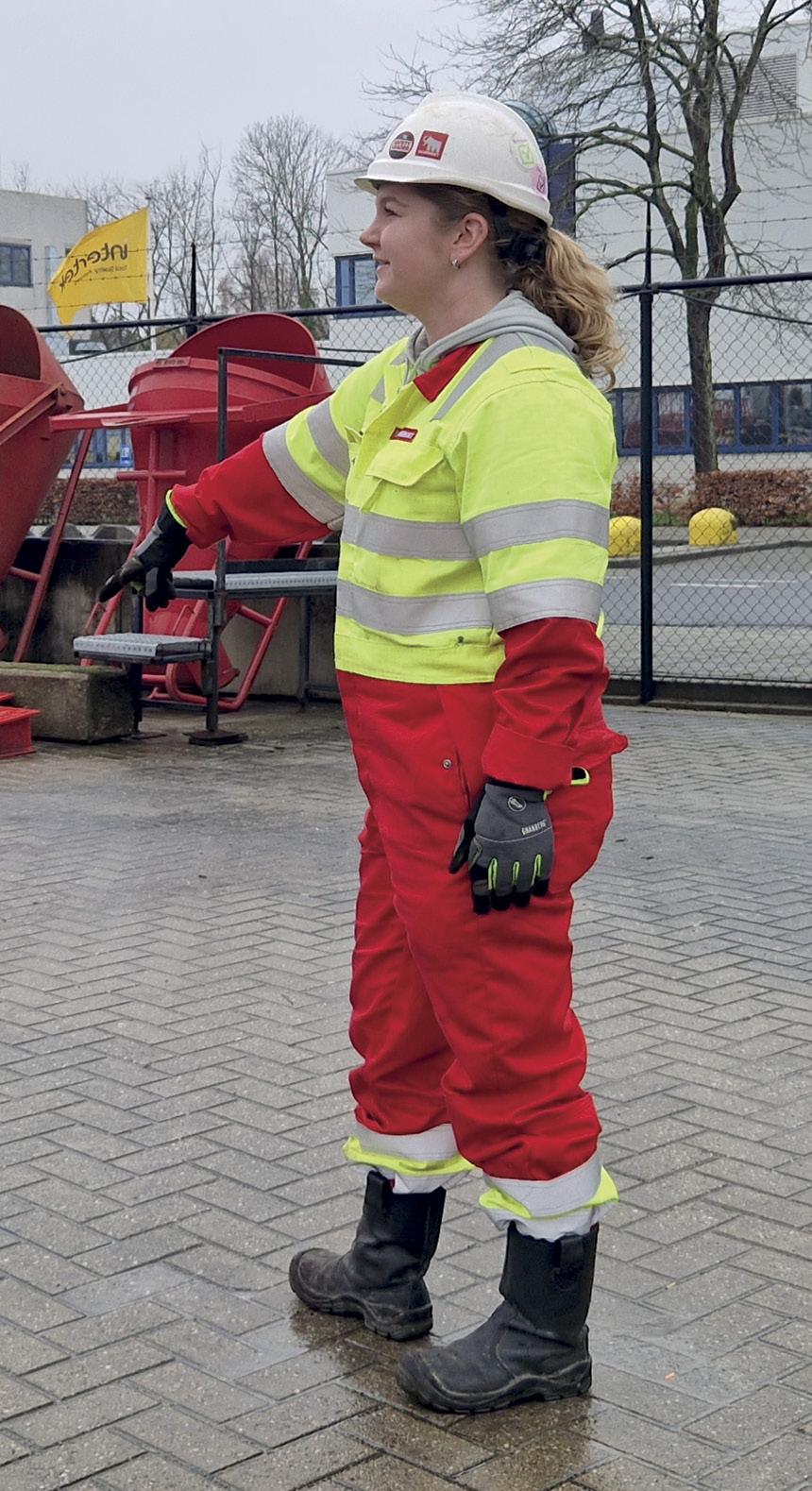
But despite the benefits, some
national associations and trade unions are apparently worried that Europewide qualifications will mean that local people and companies will lose out. ESTA and ECOL reject that argument entirely.
Within the EU, freedom of movement means that operatives can always move to where the work is – and it is surely better for everyone to know that whoever is operating a crane has been properly trained.
Sarens manager Line Rigo summed it up: “By adding ECOL to our training center courses Sarens wants to support and promote the importance of professional competence and skills. Creating a uniform crane operator license within Europe will make it more transparent to guarantee quality and reliability and more efficient to work in different countries.”
Now we need our clients to follow suit and make being ECOL-qualified a prerequisite for operating cranes on their sites. BB
Ton Klijn is director of ESTA – the European Association of Abnormal Road Transport and Mobile Cranes – and chair of the ECOL supervisory board. He has been active in the heavy-lift and transport industry since 1977 and was managing director of Dutch company Wagenborg Nedlift from 2003 to 2017, when he stepped down.
 Kelly Doruijter, the first woman to hold an ECOL license.
CREDIT: ESTA
Kelly Doruijter, the first woman to hold an ECOL license.
CREDIT: ESTA
48 BREAKBULK MAGAZINE www.breakbulk.com ISSUE 2 2023
THOUGHT LEADER
Path to a Digital Future
Simplifying Breakbulk Data Sharing

One Maritime Data Standard, or OMDS, is a project aimed at streamlining the data landscape of the maritime sector. The principle is very simple: it involves a manufacturer creating product data only once and then storing it in a centralized data pool in a uniform format.
Users of this data – such as engineers, purchasers, or service technicians – retrieve the data from that central repository and then use it in their own systems. This creates a more efficient chain with fewer errors, as well as giving a better basis for more far-reaching digital integration. OMDS enables the harmonization of data structures within the maritime chain, from manufacturer to forwarder to shipping company.
The maritime and breakbulk sectors are looking to develop and implement a digital infrastructure that enables companies to exchange information securely and reliably. OMDS will speed up this process, with various organizations making specific operational data available to each other. This will let companies in the sector work together faster, more intelligently and more efficiently, which is essential if all goals for digitalization and artificial intelligence in the sector are to be achieved. Data sharing is a cornerstone of this, for example for digital twins and predictive maintenance.
OMDS focuses on reducing the transaction costs incurred when duplicating the input of product data about components and parts. For maritime, that data is currently input by suppliers, shipbuilders and shipping companies into their own systems. Shipbuilders and shipping companies assign their own numbers to the parts that suppliers have to keep track of when fulfilling the
BY HILDE MOL-LUKKEZEN
orders. This creates a complex, errorprone and expensive landscape that does not provide the foundations for further digital integration. By reducing data entry and management costs, reducing the costs of errors in the chain, increasing efficiency and simplifying compliance with legal requirements, OMDS provides a clearer picture of the origins of data and transparency in the supply chain.
TRANSPARENCY SUPPORTED
In essence, OMDS has the potential to greatly reduce costs of failure in the chain and data entry, increase efficiency and simplify compliance with legal requirements, and support transparency in the supply chain thanks to a clearer picture of the origins of data.
The 2BA data platform was selected for the processing and exchange of the One Maritime Data Standard. This data platform offers automated exchange of data between manufacturers, suppliers, shipyards and shipping companies.
2BA has already incorporated existing Dutch and European
technical installation standards and has expanded to include specific fields that are essential to the maritime sector, such as Safety Data Sheets, specific export and import data and other customs information.
The OMDS working group is currently collaborating with more than 200 maritime sector suppliers on integrating their data into the data pool. At the time of writing, 11 parties were actively implementing the project, each in a different phase of implementation – some were in a completion phase, and two were in a start-up phase. Additionally, 2BA is working hard on creating a maritime cluster so that the number of partners in this project can grow exponentially.
This joint effort will let us lower the costs of supply chain management and improve the speed and efficiency of processing within the sector. If you are interested in joining this initiative, please get in touch. BB
www.breakbulk.com BREAKBULK MAGAZINE 49
Hilde Mol-Lukkezen is marketing and communications manager for OMDS. For more information go to www.omds.nl
Projects Ready for Lift-off
2023’s Lull a Springboard for 2024’s Boom
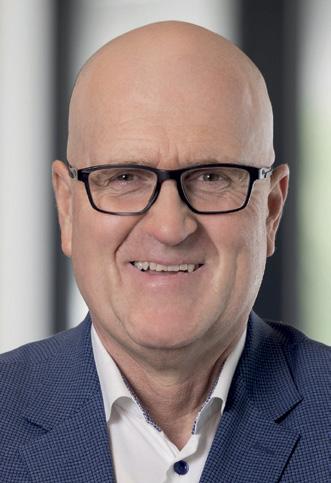
February 24, 2023, marked one year since Russia started its aggressive and unacceptable invasion of Ukraine. During those 12 months, we have seen market dynamics changing in a volatile manner. Record high energy prices have fueled already high inflation after years of pandemic, and national banks are combating inflation with the highest rates of interest seen in decades.
BY
High inflation is having an impact on many levels of our society and the business environment. This was first seen in the consumer-driven segments, but gradually is also being seen in capital investment with projects being delayed or postponed due to cost increases on materials, manpower and capital.
The Freightos Baltic Index gives a good reflection of how the consumer market has developed over that time, with container rates falling to prepandemic levels in a very short period. At the same time, congestion in worldwide ports has also largely disappeared and conditions have returned more or less to normal.
The project logistics market – directly linked as it is to capital investment projects worldwide – has also cooled, comparing 2021 with 2022; however, not by the same magnitude as the container segment. Since August 2022, indices like Toepfer’s (right) and Drewry’s have clearly shown signs of reduced rates in the multipurpose vessel segments.
The wind industry, meanwhile, has been struggling with record high
transportation costs, increased rates on raw materials and increased energy prices the last two years. The largest western wind turbine OEMs accumulated billions in losses over the course of 2022, forcing them to increase pricing for wind turbine equipment by 30-40 percent, which in turn caused project owners and operators to revisit their planned capital investment projects and delay final investment decisions. This has consequently led to a substantial drop in new orders for 2023, resulting in an interim decline in volumes and prices for the multipurpose/breakbulk fleet. Lately, we have seen major players like Equinor shift their focus and capital from offshore wind to solar due to the cost increases within the offshore wind sector, when compared with solar.
ONWARDS AND UPWARDS
Moving into 2024 – and beyond – under the assumption that energy prices and inflation will normalize, it is expected that the market will find its new balance and new normal. We should then expect a substantial uptake in new orders and capital investment projects into both onshore and offshore wind. The energy crisis in Europe will further escalate investments into offshore wind all over Europe, and we will see exponential growth in offshore wind over the next 10 years if the supply chain is able to keep up with all the planned projects.
The wind market will, however,
continue to evolve and change, with Chinese OEMs taking a bigger share of the global market due to lower energy prices compared with Western OEMs, and the U.S. Inflation Reduction Act which will spur new investments into U.S. wind manufacturing, changing the supply chains for future capex projects in the U.S. market.
In addition to increased investment in renewable energy, capital investment levels are also increasing substantially in the oil & gas sector. As an example, we are seeing record high capital investments into new upstream oil & gas development projects in Norway over the next 3-5 years, with 2023 as an intermediate year before activities and movements really start to pick up in 2024 and the years that follow.
This year will therefore be a good year for OEMs, engineering, procurement and construction companies and project owners to secure capacity for upcoming capital investment projects taking place in 2024 and onwards. The multipurpose and heavy-lift market will most likely be tight from 2024 and beyond due to increased capital investments combined with very limited newbuilding activity. However, inflation and interest levels must go down. BB
THOUGHT LEADER
Leif Arne Strømmen is a partner at Peak Group AS.
$14.907 $23.099 Jul 22 Aug Sep Oct Nov Dec Jan 23 Feb Mar $18.915
LEIF ARNE STRØMMEN
Toepfer Multipurpose Index (Time Charter Rate Per Day)
50 BREAKBULK MAGAZINE www.breakbulk.com ISSUE 2 2023
Source: toepfer-transport.com The TMI represents the monthly average timecharter rate assessment established by a panel of operators.
MORE OPPORTUNITIES THAN RISKS AHEAD
Industry Experts Share Breakbulk Sector Outlooks
The Port of Rotterdam Authority asked research analyst Susan Oatway and industry expert Johan-Paul Verschuure to summarize the past breakbulk year and share their outlooks for the upcoming months. The return of competition is the biggest driver of change, both experts agreed, and both see opportunities for the breakbulk sector which could be beneficial for Rotterdam’s supply chain actors.
Susan Oatway FICS recently joined the Journal of Commerce (part of S&P Global Market Intelligence) as research analyst for project and breakbulk cargo. Previously, she was with Drewry for more than 20 years, principally as the editor of their Multipurpose Shipping Forecaster

“In 2022, demand growth for multipurpose vessels slowed significantly, while fleet capacity increased slightly,” Oatway said. As a result of that combination, rates fell from the end of the first quarter, a decline that has continued ever since.
In the Port of Rotterdam, cargo throughput increased in all segments: steel, non-ferrous, forest products and heavy-lift and project cargo. The overall growth in 2022 was 10.4 percent and the increase in imports of steel and nonferrous metals accounted for most of it. The sharp rise in energy prices made European industrial production relatively expensive, which increased imports of steel and non-ferrous metals from Asia, among others. Also, high container rates caused more cargo to be shipped as general cargo in the first half of 2022.
The total demand over 2022 is estimated to be on par with 2021. “This is in line with the slowing global growth,” Oatway continued. “However, as we are talking effective demand – the biggest thing was the return of the competing sectors into breakbulk and project cargo.
Over 2020/2021 available capacity for containers and bulkers was limited due to the congestion issues. Those parties were not interested in breakbulk cargo, because that is considered to be complex as compared to the handling of containers or bulk cargoes. This increased the demand for multipurpose vessels over this time.
“However as soon as container rates started to fall, these vessels were once again in the market for breakbulk and project cargo. This led to the fall in rates – although average rates over the whole of 2022 were above average rates for the whole of 2021, by the end of 2022 rates were between 10 and 20 percent down year-on-year, depending on the sector.”
Conversely, traditional breakbulk cargo, such as steel and project cargo, came close to the 2021 record year in Northwest Europe, Johan-Paul Verschuure said. As project director with the port and logistics team at financialstrategic consulting firm Rebel, he, too, closely follows market developments, supply chains and shipping structures. “Although the container part may cloud the figures somewhat, I think there is nothing to complain about. Especially given the growing demand for imported steel and complex projects such as wind
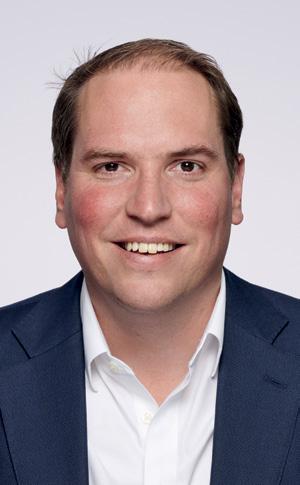
farms and other energy transition projects,” Verschuure said.
BIGGEST DRIVERS OF CHANGE
The unwinding of the supply chain issues in the container industry led to reduced demand for multipurpose vessels. “Pre-pandemic, this segment was in an extended recession as the competition for cargo was driven by the container sector,” Oatway said. “With the rush in demand and then capacity shortage seen over 2021/2022, the container carriers all but left breakbulk and project cargo to its traditional carriers. This has now reverted.”
At the same time, the number of multipurpose vessels being demolished over 2022 was at a historic low. “This sector has a very small orderbook. There is little if any outside investment for these vessels and only a handful of owners are building new vessels,” she said. “However, the few vessels that were delivered over 2022 exceeded the number of vessels being demolished – so the fleet grew (by less than 2 percent) and this increased the capacity for cargo.”
In the mid- to long-term, the fact that the breakbulk sector is more prudent, especially compared with the container sector, will come to the sector’s help, Verschuure added. “But in the shorter term, the pressure will increase. Also, as a result of the large number of empty containers which are being stacked at the moment, these might just make it interesting again to ship breakbulk cargo, like steel coils or bananas, in containers again in the near future.”
Even with their extensive experience, both Oatway and Verschuure were surprised by the speed at which charter rates dropped. Oatway said: “We always thought that they would decrease as soon as the congestion started to unwind. And there was some expectation that
OUTLOOK
Johan-Paul Verschuure Rebel
52 BREAKBULK MAGAZINE www.breakbulk.com ISSUE 2 2023
Susan Oatway Journal of Commerce
container carriers would manage their capacity better as the supply chain improved. But with rates in that sector in free fall, it was inevitable that multipurpose vessel rates would go too.”
“What surprised me besides that is the sheer volatility across the sector,” Verschuure added. “Not so much the uncertainty in the market, because that always has existed. What surprised me most is that peaks are extremely high, but troughs can also be gigantically deep. Some breakbulk sectors scored doubledigit growth rates in some ports, while others recorded double-digit losses. We saw the same thing in 2020 and 2021.
“And it seems that that may continue to do so for some time, especially given the uncertainty regarding the energy transition and a possible new surge in commodity prices following a longer period of low investments, the need for new supply chains for some commodities, and new raw materials needing to be mined.”
FUTURE CHALLENGES
On the port side, Verschuure believes the challenge is to deal with this in a correct, flexible and sustainable way. “This entails risks for all parties in the market and in particular for the breakbulk parties, as they operate on a thin market with a shorter horizon when it comes to investments. How the sector deals with this increased volatility will certainly remain a crucial challenge for the coming years.”
Secondly, the energy transition will require a lot more port space to handle and store alternative fuels, but also to deal with increased flows of breakbulk and project cargo. For the breakbulk terminals it will likely mean that they have to squeeze more capacity out of the same terminal area.
Future bunkering solutions will also be a hurdle for some ports. “Especially
for multipurpose vessels, it is always a big question what the ship of the future is going to look like and what will be put on her,” Oatway said. “Multipurpose vessel owners often point at container carriers, but it will mainly be the ports that play a vital role in this.”
As far as sustainability and low carbon bunker fuels are concerned, Verschuure still sees differences between the breakbulk sector and other sectors: “Container liners are mostly driven by the IKEAs and Walmarts of this world– where shippers dealing with end consumers play a more important role. These end consumers seem the most engaged group. As a result, they are much more likely to take action in the energy transition and follow requests from end consumers.
“In contrast, the breakbulk sector is more driven by industry and commercial interests. The link to the end consumer is less strong. On top of that, margins and balance sheets are smaller in the breakbulk sector. That makes investing in propulsion on alternative fuels financially more challenging. The sector will have difficulties leading the way. However, financial support to overcome these challenges and reducing uncertainties to the pathway of alternative fuels can assist in transitioning the breakbulk sector in a greener direction.”
Oatway agreed: “Multipurpose vessel carriers are very much adopting a ‘wait and see’ strategy to see what the container carriers are doing regarding new energy sources and energy transition. Some have gone for dual fuel for their newbuildings – but without the infrastructure it is difficult to see a clear pathway. And the container carriers are the ones with the political and financial power to influence that. Moreover, most of the breakbulk fleet is on a tramp basis, so they cannot easily switch to cleaner fuels. Certainly not if supply uncertainty remains. Thereby, again, what happens at the ports remains decisive.”
MEDIUM TERM HORIZON
Looking ahead, both Oatway and Verschuure expect that the global market will continue to slow,
hampered by falling container rates. However, there are areas keeping rates from pre-pandemic levels.
“There is some roll-on, roll-off spillover for breakbulk. For example, high and heavy cargo for mining, construction, and the agriculture sector is booming and demand is in excess of the roll-on, roll-off’s fleet capacity,” Oatway said. “This cargo is being lifted onto bulkers and breakbulk multipurpose vessels. On the other hand we see rates for heavy-lift capable vessels held up by project cargo.

“As long as crude oil prices stay above around US$70 per barrel it is enough to encourage investment and, in spite of the need for the world to move away from this, it is unlikely to decrease in terms of percentage of energy investment any time soon.”
Overall, the outlook is positive. “We are still noting economic growth, against expectations,” Verschuure added. “If that growth continues and leads to less negative sentiment and even at some point to confidence, new investments will have a positive impact on the breakbulk sector, for example in mining and infrastructure and the energy transition.”
In addition, he expects that parts of the market will be more willing to pay higher prices and have longer contracts if there is more reliability in return: “Sometimes things just have to go wrong in order to recognize that everything has a price. With more reliability, resilience increases, and breakbulk players are enabled to operate more flexibly or provide a higher service level. Ultimately the entire supply chain benefits.”
“The bottom of the market is still not reached, but it is coming into sight. Congestion is gone, plenty of projects are underway and investment decisions have been made. These are sure to lead to a boost later this year and in 2024,” Oatway concluded. “With the expected recovery of the global economy, later this year and in 2024, the new projects, and the energy transition, there is a lot in the barrel. It is going to be a bit shaky before we get there, but there are definitely opportunities.” BB
www.breakbulk.com BREAKBULK MAGAZINE 53 OUTLOOK
CREDIT: PORT OF ROTTERDAM
OFFSHORE WINDS BLOW FAVORABLY
Technology-advancing offshore wind projects such as the recently commissioned Hywind Tampen development in the North Sea signal a rich, ongoing vein of project and breakbulk shipping opportunities in Europe.
As the world’s largest floating offshore wind power plant – and the first to power offshore oil and gas platforms – Hywind Tampen is serving as a testbed for the development of new and larger turbines, logistics and installation methods.
Located about 140 kilometers from the Norwegian coast in an area with water depths of 260-300 meters between the Snorre and Gullfaks oil and gas platforms, Hywind Tampen required ballast-stabilized floating foundations, anchored to the seabed with mooring lines.
Siemens Gamesa head of wind offshore portfolio management Stephan Buller embraced the “strong collaboration” with energy company Equinor, which has seen his firm provide 11 SG 8.0-167 DD turbines to the “giant leap forward in floating wind.”
Region: Europe
Problem: Engineering challenges could hold back offshore wind development
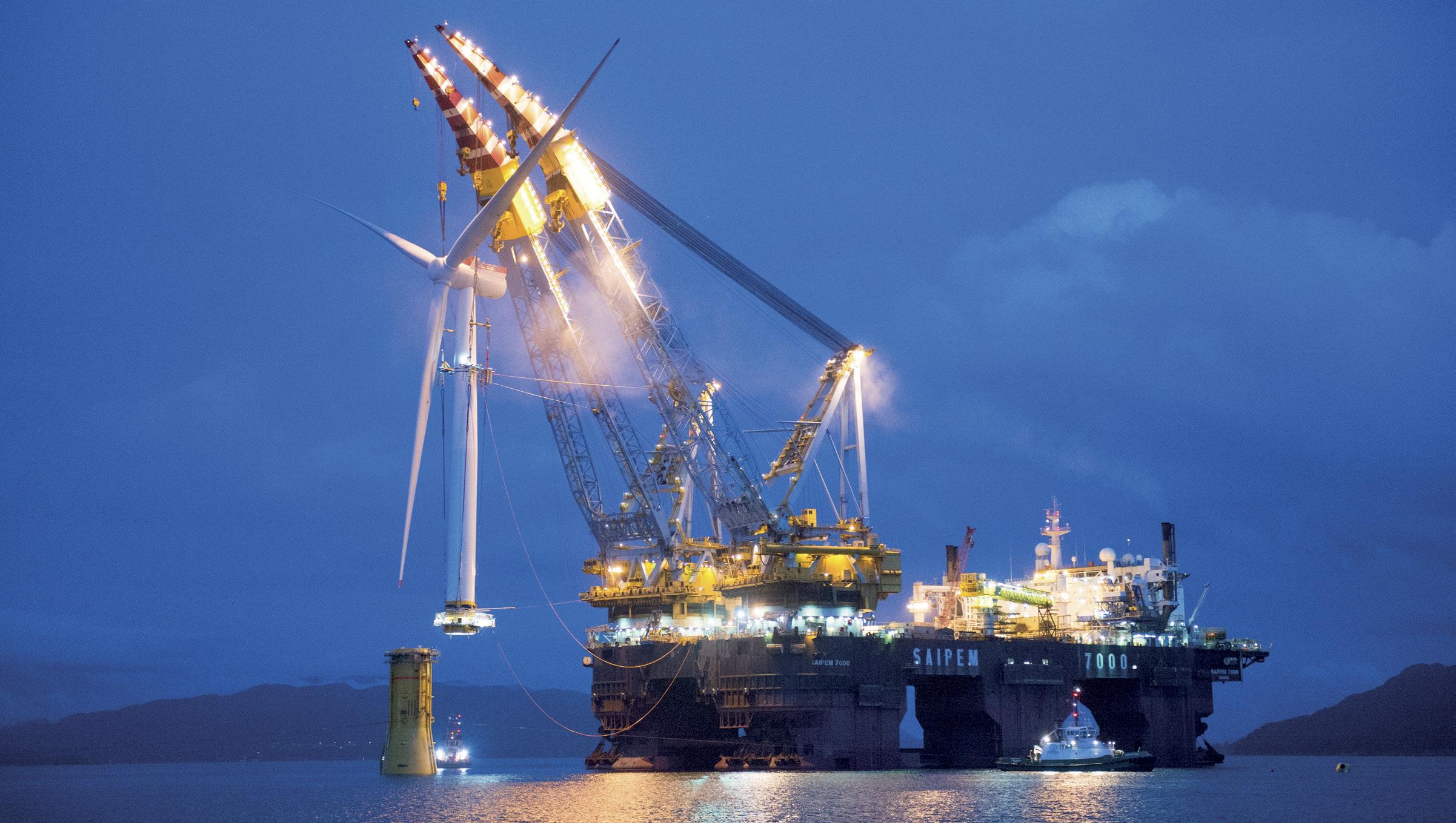
Solution: North Sea test bed proves viability of new and larger turbines, logistics and installation methods at sea
“Hywind Tampen provided a lot of lessons in regard to logistics and harbor-based installation methods,” he said to Breakbulk. “Potential upcoming projects with larger turbines will benefit from these lessons for sure.”
Given its lightweight nacelles, Siemens Gamesa’s large, direct-drive wind turbines were considered particularly suited for Hywind Tampen’s floating foundations. Albeit Buller notes the particular turbines used were in fact quite similar to those also deployed in bottom-fixed projects.
Commencing power production from its first turbine on Nov. 13, 2022, Hywind Tampen is expected to have
Testbed for Mega Offshore Wind to Open Floodgates
BY IAIN MACINTYRE
a total capacity of 88MW when its remaining four turbines come on stream this year. It is to meet about 35 percent of the annual power demand of the Snorre and Gullfaks platforms and, by reducing the use of gas turbines on the fields, contribute to reducing CO2 emissions by over 200,000 tonnes per year.
MEETING OFFSHORE NEED
A key contributor to the project has been heavy-lift transport company Mammoet, which was engaged to undertake turbine assembly and associated port handling work, explained the firm’s project manager Martin Tieman.
“We recognized that we would need a crane with a huge outreach to make the required lifts,” he said. “The majority of land-based cranes in any fleet would not be able to achieve a 143-meter distance at these weights, but we knew that if it could be done the project would benefit significantly. This would create a smooth production line from marshalling yard to turbine assembly to commissioning – all at the same location – optimizing the use of offshore assets.
RENEWABLES
54 BREAKBULK MAGAZINE www.breakbulk.com ISSUE 2 2023
Hywind Scotland, a 30MW floating project, installed in 2017, is one of the world’s largest floating projects currently in operation. CREDIT: SIEMENS GAMESA
“This led us to look at the use of our PTC 200-DS crane, which is proving to be in high demand for big offshore wind projects such as the Greater Changhua development in Taiwan and Seagreen Offshore Wind Farm in Scotland.”
Once the port had confirmed the quayside would be able to provide the required ground-bearing pressures, Mammoet was able to put together a plan for port handling and assembly of all 11 turbines of Equinor’s development.
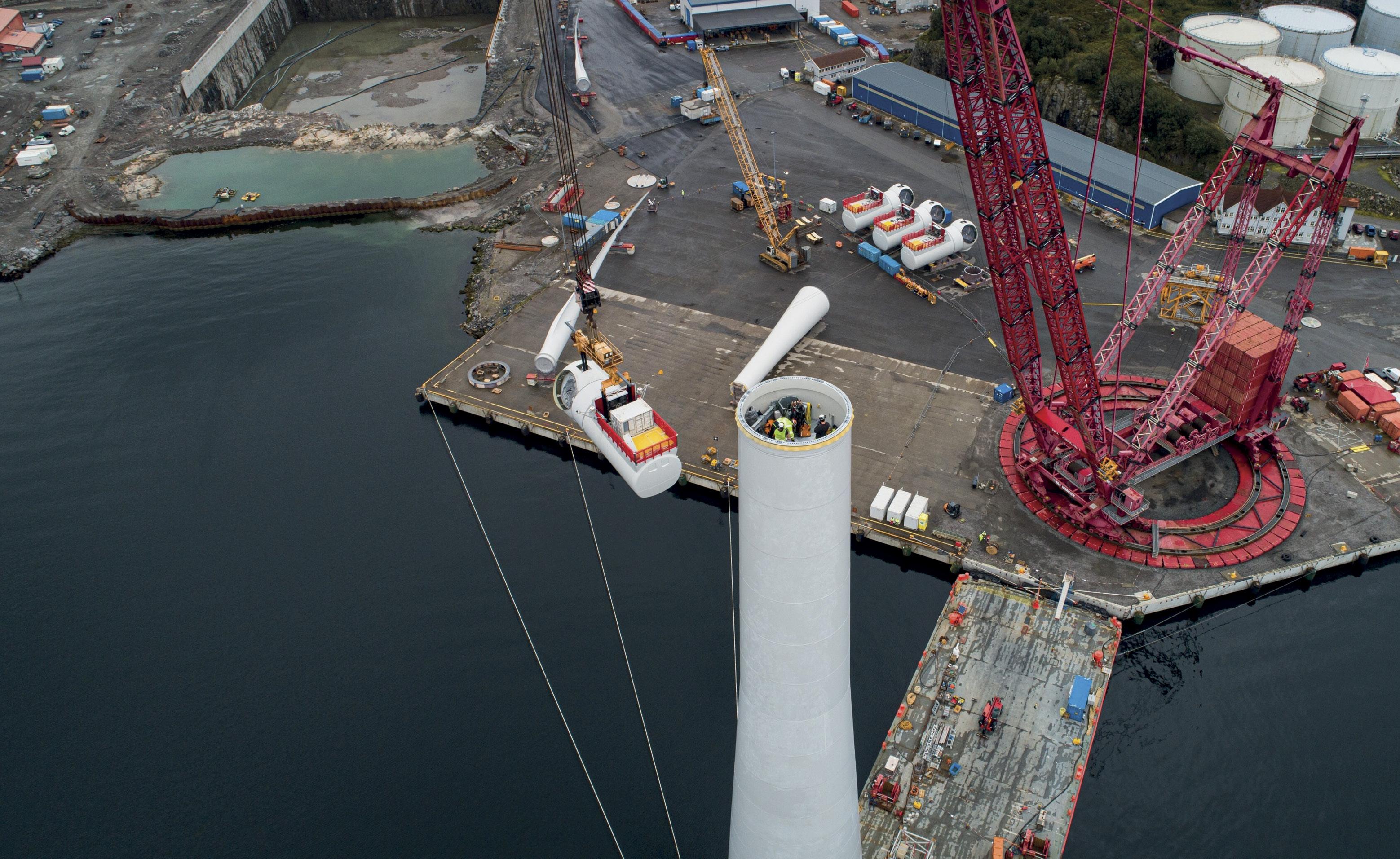
Siemens Gamesa considers the offshore wind sector to already have a strong foothold in Europe, with close to 18.5GW of installed capacity and global potential to reach over 100GW by 2030. Of this, floating offshore wind is estimated to constitute 10 percent of the market, potentially powering 12 million homes in 2030.
“For floating wind, Europe is a very important market,” Siemens Gamesa’s Buller said. “Markets like the UK or Norway are frontrunners but also France, Spain and Portugal have very concrete ambitions to develop largescale floating wind projects. Beyond Europe, we see strong activities in Asian markets (for example, Korea and Japan), but also in the U.S. (West Coast) and some other places.”
Moreover, Buller describes Hywind Tampen as a “small-capacity project” compared with those potentially on the horizon.
“Floating wind farms open up many new regions that would be unsuitable for bottom-fixed foundations. An increase in the size and number of wind farms per year will directly drive demand for shipping.”
However, the increasing size and weight of wind turbine components will require vessels with larger capacity than what is currently available. “The shipping market appears to be stretched already with the number of projects in parallel – bigger and better vessels are always going to be welcome in the industry,” Buller said.
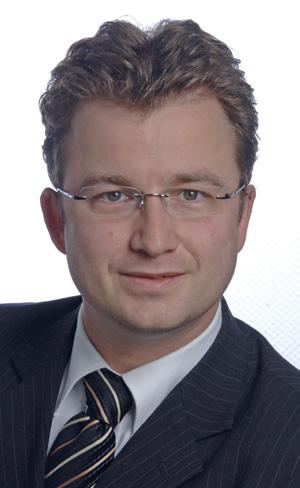
CALL FOR FOUNDATION MOVERS
Mammoet global segment lead for offshore wind Francisco Rodrigues sees the sector continuing to provide significant new project and breakbulk shipping opportunities, in particular through the supersized foundations needed for fixed-bottom offshore wind, which will over the coming years. These need to be transported vast distances from fabricator to installation site, he said.
“As these components continue to grow, finding innovative ways to load and unload larger quantities per vessel will play a large part in increasing the efficiency of offshore wind projects, and ultimately the cost of energy to consumers.”
While Rodrigues observed that
the majority of suppliers to the offshore wind market are indeed located in Europe, he also sees the market expanding rapidly worldwide, not least in the U.S., where 10GW-15GW of additional offshore wind power is expected by 2030. Before the end of the year, there will be three overlapping projects on the East Coast with over 60 units each – Vineyard Wind (800MW), Revolution (704MW) and Coastal Virginia (2600MW).
“As the leading supplier of engineered heavy lifting and transport services, we are well-placed to transfer our decades of expertise on European fixed bottom and floating wind projects to new markets,” he said.
Rodrigues added that as turbines grow taller to reach stronger, more reliable wind flows, all associated components will continue to grow – from floating foundations to monopiles, to tower sections and nacelles.
“This will require larger vessels and smart loading strategies – especially given the Jones Act restrictions on nonU.S.-flagged vessels that are in place in the U.S. All members of the value chain will need to work together to solve these challenges,” he concluded. BB
www.breakbulk.com BREAKBULK MAGAZINE 55 RENEWABLES
Iain MacIntyre is a New Zealandbased, award-winning journalist, with lengthy experience writing in the global shipping scene.
The assembly of the 8.6 MW turbines needed to be performed in the controlled environment of a port. CREDIT: MAMMOET
Stephan Buller Siemens Gamesa
“Hywind Tampen provided a lot of lessons in regard to logistics and harbor-based installation methods”
BY MALCOLM RAMSAY
OVERCOMING AN AIR DRAFT CHALLENGE
Project Calls for Careful Calculations to Ensure Bridge Clearance
Shipping high precision components across the world’s ocean is undoubtedly complex, but all too often the largest challenges in any project arise in the first few miles of transport, navigating infrastructure limitations and environmental obstacles.
Project cargo specialist Bertling Logistics recently met one such challenge, delivering a high-tech intervention tower through tight draft restrictions and tidal limits on the river Tees in the UK before onward shipment to Singapore.

This complex project required a tailor-made engineering solution and saw Bertling work closely with client FTAI Ocean and local partners to ensure seamless delivery of the advanced Smart Tower System, destined for FTAI Ocean’s flagship DP3 Well Intervention vessel, Pride
“We were initially approached for the feasibility study in 2019 and invited to tender in 2020,” Stephanie Lüning, director of tendering and marketing
Regions: Europe, Asia
Problem: Air draft limitations at the start of a month-long project cargo move threatened to stop it before it even started
Solution: Calculations led engineers to establish a sixday window during neap tides to give the cargo one-meter clearance
at Bertling Logistics, told Breakbulk, noting that an initial feasibility study quickly showed “that different lifting methods were required.” This is when Bertling Logistics’ in-house technical and engineering team in Middlesbrough came into play. Former technical director Mike Hetherington (now retired) and Chris Wightman, engineering director, started to study the logistical requirements for this challenging project.
The tower system was to be collected from Port Clarence on the river Tees but then had to be transported to a stowage point downstream at Tees docks. Although this was only a few kilometers, the cargo had to navigate the historic Tees Transporter Bridge and contend with the tidal nature of the river along this stretch.
“To find the best technical and commercial solution, Bertling Logistics performed a study for all possible shipment modes, including heavy-lift vessels, gearless vessels with shore/ floating cranes, and roll-on, roll-off vessels,” Wightman noted, adding that ultimately “there was only one stowage option which was jointly elaborated by us and Rolldock.”
RESTRICTED BY LIMITED DRAUGHT
Conveniently, the starting location at Port Clarence was close to Bertling Logistics’ home, as its heavy-lift and engineering office is based in
CASE STUDY
CREDIT: BERTLING
56 BREAKBULK MAGAZINE www.breakbulk.com ISSUE 2 2023
Middlesbrough. As a result, the team was very familiar with the area and quickly able to identify the potential challenges.
The tower system was developed by offshore technology supplier Osbit and fabricated by nearby manufacturing specialist Wilton Engineering Services in Port Clarence. Comprising 1,300 tonnes of equipment in total, the tower itself weighed 909 tonnes and was designed with a vertical racking system to reduce its footprint, improving well center access once finally installed and maximizing deck space.

Calling the system a “world-class piece of kit,” Osbit director Steve Binney highlighted the “fantastic supply chain” in the region which allowed the complex cargo to be delivered effectively.
Despite the closeness of the fabrication site to the dock however, the size and weight of the tower raised several issues for the team. Measuring 40 meters in length and approaching one kilotonne in weight meant that the limited draft alongside the yard and headroom restriction downstream at the Tees Transporter Bridge would potentially be problematic.
“Addressing these two issues: to pass under the bridge, the tower had to be stowed inside the hull of the heavy-lift vessel; and to mitigate the draft issue, the tower would need to be ‘lightered’ by barge across the river to alongside the heavy-lift vessel where much deeper draft was available at the Port of Middlesbrough,” Wightman said.
Covering more than 40 hectares on the opposite bank of the river Tees, Port of Middlesborough has steadily developed into a hub for multimodal logistics solutions in recent years, with owner and operator of the port AV Dawson expanding its strategic investment in the site in late 2022.
Having carefully studied the project, Bertling proposed a solution to jack the tower up to self-propelled modular trailer height using perpetual climbing jacks, load to barge, then transfer to the waiting heavy-lift vessel, creating a solution that avoided the need for any lifting, relying on roll-on operations only.
“Lifting was only used for smaller equipment, which was a minor part of the operation,” Lüning said, adding that this was aided by the fact that the selected vessel had an open dock hull arrangement, albeit it was width-restricted in the hold by the aft vessel crane.
The vessel chosen was the RollDock Sky, a heavy load carrier with a draft of 5.8 meters and 6,884 deadweight-tonnes. To ensure seamless operations, Bertling worked closely with RollDock and the port harbormaster to study tidal curves and calculate the prime time for loading.
Rik Hofsté, head of bridge at RollDock, commented on the close partnership with Bertling, noting that all the team “enjoyed our cooperation” and benefited from the “support of Bertling during the transport of the unit on our vessel.”

From the calculations prepared by the partners, the team were able to see that passage under the Transporter Bridge would be possible during neap tides but that there were only six days per calendar month where this would be feasible.
EXECUTION TIME
Utilizing four 500-tonne perpetual climbing jacks, the team then began the process of loading, relying on custom-designed jacking lugs retrofitted to the tower so that the SPMT could be inserted below.
Following stowage of general cargo, the tower was then loaded aboard a barge at Port Clarence using Mammoet SPMTs and conveyed across the river to the RollDock Sky in preparation for the journey downstream where further cargo was scheduled to be loaded.
The teams then completed final
sea fastening and loading of containerized cargo, keeping a close watch on the weather and tidal conditions to find the ideal window to progress.
With everything in place, the vessel set off in late October 2022, clearing the Tees Transporter Bridge with just over one meter clearance. After docking downstream to load the remaining cargo, the vessel then set off on its 6,700-mile journey to Singapore. Due to the 40-meter height of the tower, however, close monitoring was still required as acceleration forces during the voyage posed the potential to damage the high-tech cargo.
“We relied on daily forecasts via the Met Office in the UK during UK operations,” Wightman said, adding that the Rolldock vessel utilized software for weather forecasting at sea and potential shelter scenarios.
From Middlesborough, the RollDock Sky sailed via the Suez Canal, Indian Ocean, and strait of Malacca, arriving in Singapore at the tail end of 2022.
www.breakbulk.com BREAKBULK MAGAZINE 57 CASE STUDY
Chris Wightman
Bertling Logistics
The tower weighed 909 tonnes and was designed with a vertical racking system to reduce its footprint. CREDIT: BERTLING
“The intervention tower landed in PaxOcean Yard in Singapore after a long journey from Port Clarence with the RollDock Sky,” a spokesperson for RollDock commented.
SAFE ARRIVAL CELEBRATED
Having safely docked at PaxOcean Yard, the large cargo then had to be offloaded and again draft limitations required the team to work closely with local partners to ensure safe movement.
“During the roll-off in Singapore, some engineering challenges arose and were solved to ensure smooth rolloff,” Wightman noted, highlighting the additional survey work and ramp construction required to deal with limited draft at the receiving jetty and the resultant deployment of spacer barges to solve this problem.
With the cargo landed, the tower was then reloaded onto SPMT trailers and rolled out of the vessel one
“To find the best technical and commercial solution, Bertling Logistics performed a study for all possible shipment modes, including heavy-lift vessels, gearless vessels with shore/floating cranes, and roll-on, roll-off vessels”
month and two days after it had started its journey. Archie Sena, senior hull engineer at PaxOcean, praised the teamwork that ensured the cargo was moved through the yard in a timely fashion, commenting that the team was “happy and proud” to be “involved in this roll-out activity.”
Established in 2007, PaxOcean owns and operates five shipyards located in Singapore, China and Indonesia. Its shipyard in Tuas, Singapore was established in 1983 and covers a 110,000 square meter site with three floating docks and berthing space of 1,600 meters.
Having successfully delivered the cargo to the client, installation of the tower was then able to commence aboard FTAI’s Pride. Hailing the delivery as a “milestone achievement,” FTAI now expects the tower to play a key role in its deep-sea intervention services as it extends its capabilities to water depths of 1,500 meters.

Headquartered in Singapore, FTAI Ocean provides vessel-based well intervention, well-enhancement, plug & abandonment and related subsea services for the oil and gas industry and its flagship vessel is at the heart of this work offering subsea riser-less package and topside handling systems to provide clients with a range of services for their intervention solutions.
An advanced DP3 vessel with 2,000 cubic meters of deck space, the Pride was built in Canada in 2014 and features a 250-ton active heave compensating crane, a 35-ton auxiliary crane, a 7.2m-by-7.2m moonpool, and 6,000 tons of cargo carrying capacity. BB
Based in the UK, Malcolm Ramsay has a background in business analysis and technology writing, with an emphasis on transportation and ports.
ISSUE 2 2023 58 BREAKBULK MAGAZINE www.breakbulk.com
STUDY
CASE
Caption. CREDIT: AAL SHIPPING
– Chris Wightman
CREDIT: BERTLING


VEHICLE CARRIERS
RECHARGING US ELECTRIC VEHICLE EXPORTS
Biting Point for Breakbulk Car Sales

Afew short years ago, the U.S. was the global leader in electric vehicle exports. Early volumes were small and supply chain participants were able to accommodate the volumes with a few adjustments to services and operations here and there. Now, a new, much larger American EV export wave may be forming. Breakbulk carriers, ports and terminals are eagerly awaiting.
The demand for EVs is being pushed and pulled. As the world cries out for decarbonization, consumers are choosing hybrids and EVs. Internal combustion engines, or ICEs, are becoming persona non grata and
Region: North America
Problem: The trickle of electric vehicle sales to-date hasn’t been a cause for excitement for breakbulk handlers
Solution: A flood of financial support for green car choices in the U.S. could give the roll-on, roll-off sector a welcome boost
governments are increasing support for electrified vehicles. Early adopters located throughout Europe, Canada and along the U.S. West Coast will
BY LORI MUSSER
eliminate new ICE vehicle sales in a few short years. The International Council on Clean Transportation reports some of the targets for phasing out sales of new ICE cars begin as early as 2025.
Of course, EV adoption will rise as prices fall; technological advancements have shrunk EV battery costs. The U.S. Department of Energy, or DoE, recently reported that, based on 2022-constant dollars, lithium-ion battery pack costs fell to an average of US$153/kwh of usable energy (given a 100,000-unit+ annual production volume). That number is down from more than US$1,300 in 2008.
CREDIT: STEVE MORTON, PORT OF BRUNSWICK, GPA
60 BREAKBULK MAGAZINE www.breakbulk.com ISSUE 2 2023
US MOMENTUM
When the Biden administration’s momentous EV incentives begin to bear fruit, a U.S. production surge can be expected. There are three big government drivers.
The first is the Department of Commerce’s CHIPS and Science Act. The U.S. plans to address the global shortage of semiconductor chips by revitalizing production at home, starting with US$39 billion in semiconductor incentives. The Act’s first funding opportunity was announced on March 1, 2023.
The second is a basket of automotive manufacturing gifts from last year’s Inflation Reduction Act. They include provisions for the EV production supply chain, buyers and infrastructure.
The third pot of money comes from the Bipartisan Infrastructure Law, set to trigger investment in a national EV charging network, and mineral and raw materials supply for battery makers.
Combined, these provisions will undoubtedly expand vehicle electrification in the U.S.
In a statement, John Bozzella, president and CEO of the Alliance for Automotive Innovation, said: “The Inflation Reduction Act recognizes the enormity of the automotive industrial base transformation currently underway. Automakers have already invested more than US$100 billion in vehicle electrification – expanding the production of EVs … and locating raw material and battery components on American soil.” He added: “There is more than US$15.5 billion in incentives and grants to ensure the United States is building automotive supply chains and a globally competitive battery manufacturing platform.”
BREAKBULK CARRIERS GET READY
While there is no telling if or when U.S. EV production capacity will produce strong exports, auto carriers are preparing.
Bryan McCausland is senior manager of sales (auto – U.S.) for leading roll-on, roll-off and vehicle logistics
provider Wallenius Wilhelmsen. Speaking to Breakbulk, he acknowledged that incentives, regulations, infrastructure and improved consumer confidence all drive increased EV sales and exports. He said: “We are equipping terminals and port processing facilities around the world with sufficient EV charging infrastructure … to help vehicles flow through the supply chain without disruptions.”
This can’t be done single-handedly. “We are working with OEMs and industry forums to ensure that the marine transport of EVs is completed with safety as the number one priority,” McCausland said.
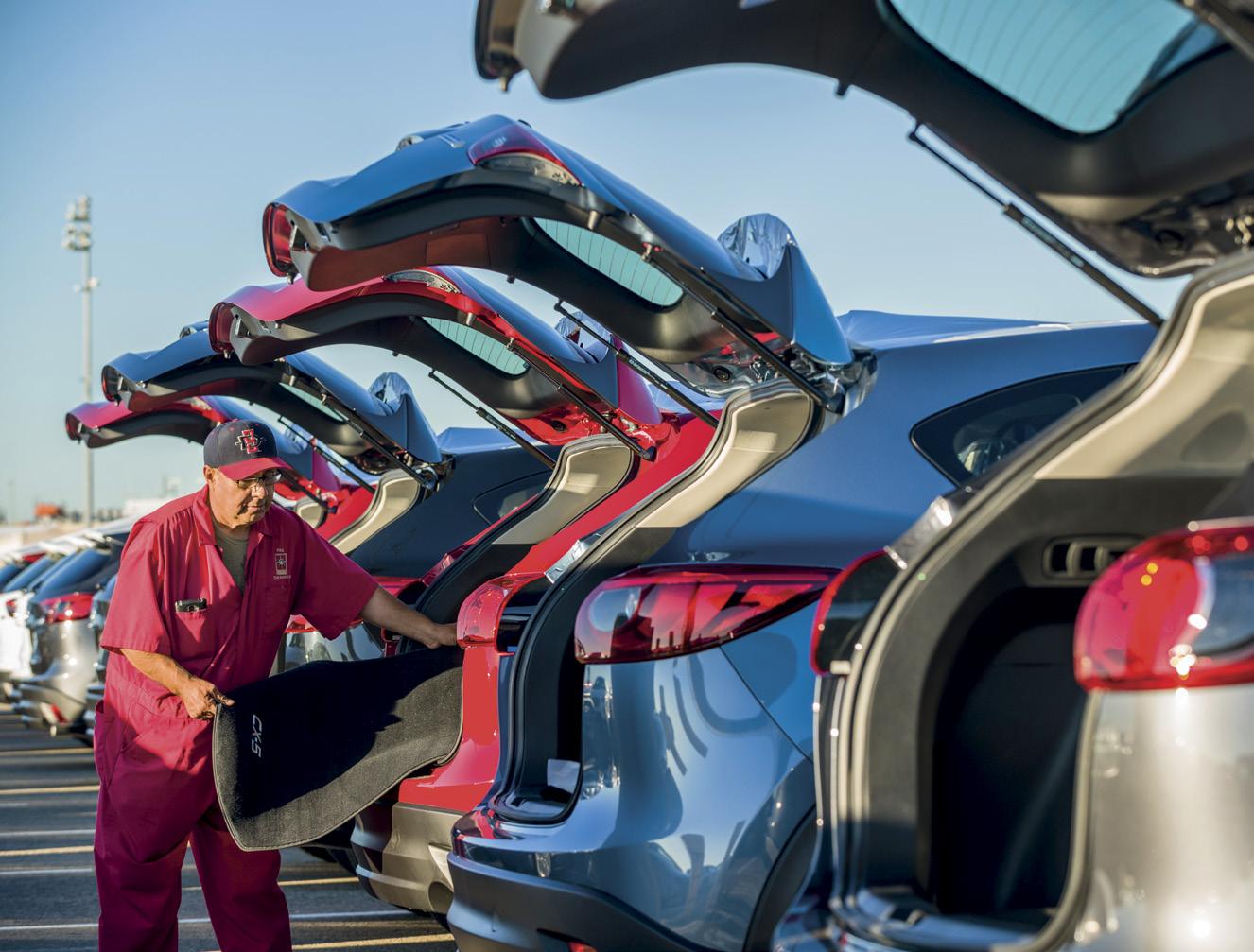
Wallenius Wilhelmsen’s first EV shipment took place in 2000, so the company has long experience. Operationally, EVs have a few idiosyncrasies. Some best practices in handling include double lashing EVs for safe storage on vessels, having plenty of charging units available throughout a global transit (batteries can lose power when the car isn’t moving), and exercising additional safety precautions (such as sounding horns when cars are started) because EVs are almost silent.
Erik Solum leads global market insights for Wallenius Wilhelmsen. Solum is cautiously optimistic for the
VEHICLE CARRIERS
roll-on, roll-off industry in general. In his outlook for 2023, he said there is still pent-up demand for light vehicles, and the high and heavy segment should remain solid, but there is a long list of challenges facing the industry. Vessel capacity has been tight and will remain so with only 11 vessels on the orderbook for delivery in 2023 to supplement the global fleet of 600 larger roll-on, roll-off vessels.
Solum said: “Even as there are more risks and unknowns than we have ever seen, we are cautiously optimistic when we enter 2023 … We hope for peaceful solutions for the geopolitical tensions and believe the green shift will contribute to accelerated vehicle sales.”
Solum confirmed that Wallenius Wilhelmsen does “expect growth of EVs out of North America.”
HURDLES FOR US EXPORTS
Louis Yiakoumi, auto industry specialist at LConnect, outlined some of the geopolitical issues that impact export vehicle movements. They range from carmaker geographical strategies to a lack of popularity of larger U.S.sized vehicles in certain markets, to partnerships between automakers that foster local production, eliminating the need for U.S. exports.
www.breakbulk.com BREAKBULK MAGAZINE 61
An employee inspects EV cars prior to distribution.
CREDIT: PASHA GROUP
VEHICLE CARRIERS
These same concerns will likely apply for U.S. EV exports. Americanmade EVs will be up against some strong competition from, for example, China’s carmakers, who may have price advantages, and German carmakers, who are investing rapidly and heavily in EV production with tight regulatory timelines. And the jury is still out as to whether U.S. startup automakers will have the wherewithal to grow globally.
Yiakoumi recognized Tesla as the global EV leader, but noted that Tesla’s new plant in Germany and its Chinese production will offset some of its need to export from the U.S. Overall, he said: “There will be some exports from the U.S., but [likely] less than hoped.”
While the size of the future U.S. EV export market is uncertain, the auto business is massive and EV parts and finished inventory movements will continue to be bread and butter for many carriers, ports and terminals/ processors. They are putting strategies in place.
Cliff Pyron is chief commercial officer for Georgia Ports Authority, or GPA. Pyron said to Breakbulk: “There’s no question that major investment is already underway throughout
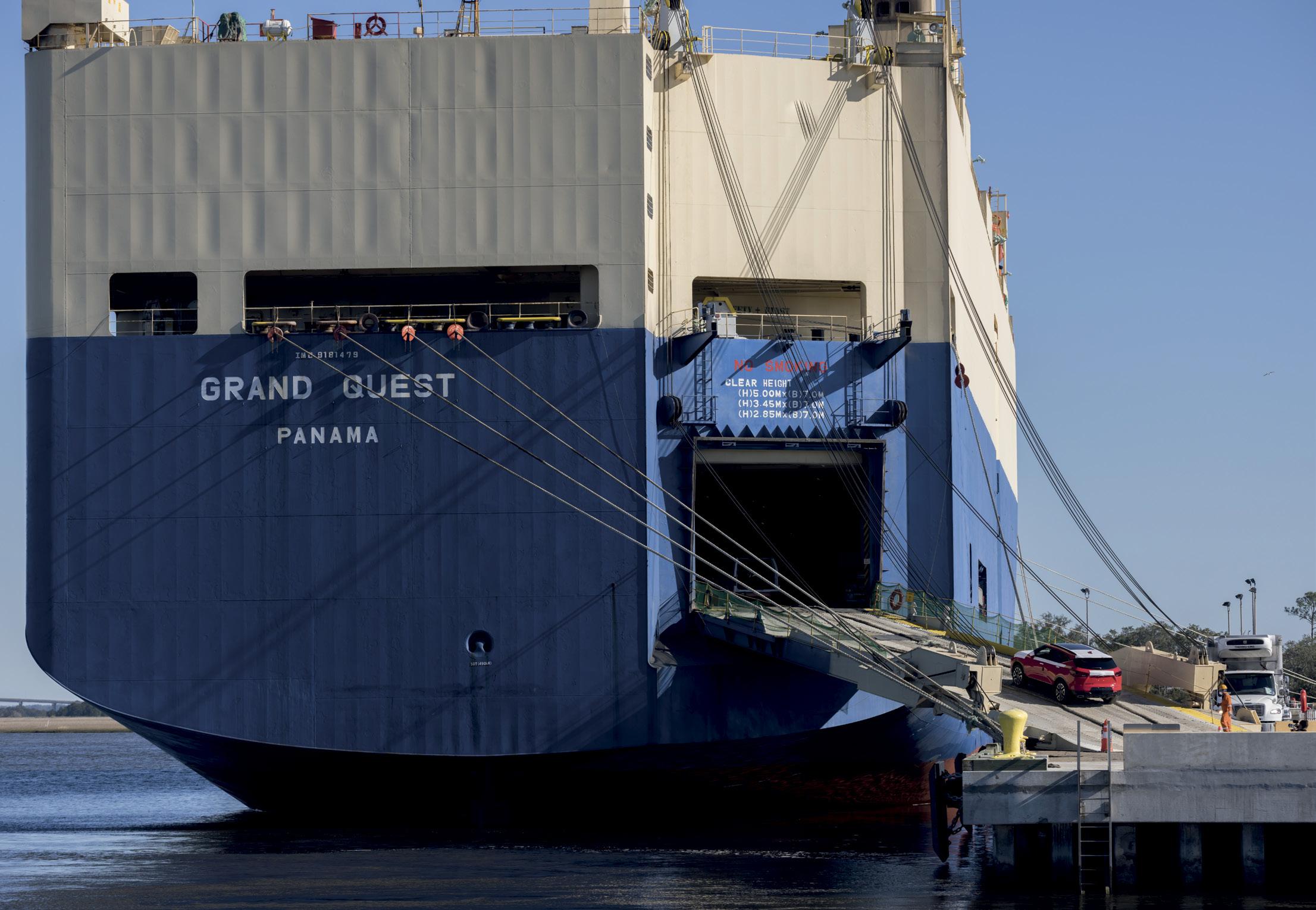
the region to support EV manufacturing growth. What’s occurring now is transformational, not only for Savannah, and Georgia, but also the Southeast.”
Pyron added: “With so much investment underway, it’s an exciting time … Since the announcement of the new Hyundai plant, we have also had a fourth announcement for a major OEM supplier which will bring more volumes through the port once those facilities are operational.”
In the next two years, Georgia Ports Authority anticipates a surge of freight and cargo associated with construction of the production sites and assembly at the plants. “We should begin to see an influx of products toward the end of 2023. We will eventually see the various automotive parts coming through in 2025 as the Hyundai plant and its suppliers begin production.”
GPA’s capital investment program creates new capacity and connectivity for general cargo, including roll-on, roll-off cargo. “This year alone, the GPA is investing US$1.8 billion at our Garden City Terminal, Ocean Terminal and the Port of Brunswick. These improvements include expanded berths, the largest ship-to-shore cranes on the Eastern Seaboard, and more space for
containerized cargo and roll-on, roll-off processing,” Pyron said.
Auto capacity improvements are underway at GPA’s Port of Brunswick that will increase its roll-on/roll-off capacity to 1.41 million vehicles per year.
Rail is also being expanded. “GPA’s new Mason Mega Rail allows us to reach out to the Southeast … where there is also tremendous investment in automotive production. Our focus continues to be delivering more capacity, faster connections, and greater reach to support the exciting growth in production already underway,” Pyron said.
MOVEMENT OUT WEST
While a great deal of EV plant capacity is being built in the U.S. Midwest and Southeast, supply chains to the west are also watching the industry closely. A Port of Portland spokesperson told Breakbulk that the port is currently discussing electrification as part of its long-term strategic plan, but that there haven’t been major operational changes for EVs at marine terminals, yet.
“We have assessed the need for charging infrastructure terminal-wide and in conjunction with expanding
ISSUE 2 2023 62 BREAKBULK MAGAZINE www.breakbulk.com
GPA’s Port of Brunswick is increasing its roll-on/ roll-off capacity to 1.41 million vehicles per year.
CREDIT: STEVE MORTON, GPA
auto imports and exports,” the spokesperson said. There may be some “hurry up and wait” necessary across import-export supply chains, as technology develops as it is not yet crystal-clear which charging approaches will emerge as best practice for distribution facilities. Nevertheless, “electrical service requirements will be significantly greater … it is likely that new or upgraded electrical services will be required,” she said, adding: “We are laying the groundwork for providing locations and charging capabilities as they are identified by our vehicle processor.”
Alex Munro, senior communications advisor for Canada’s Port of Vancouver, described a slightly different business case for U.S./North American-made EVs. He said: “Currently, auto volumes through the Port of Vancouver are all imports to service the local market, with about 94 percent arriving on ships from overseas and 6 percent arriving via rail and truck from North America. Auto terminals at the Port of Vancouver are strategically positioned to handle inbound Asian-manufactured vehicles arriving on ships to serve Canadian demand.”
That may not change overnight. Munro said it is a simple case of demand economics. “The potential for Port of Vancouver auto terminals to handle electric vehicle exports in the future depends on both North American production and demand, and overseas production and demand,” Munro said to Breakbulk. “While production of electric vehicles is set to accelerate in North America, it is also expected to accelerate in Asia. Our expectations are that the existing import-export dynamic at Port of Vancouver, as well as at U.S. West Coast auto ports, will continue to remain in place for some time,” he added.
TERMINAL OPERATORS GEAR UP
AMPORTS, Inc., a port terminal operator and automotive services company with operations in the U.S. and Mexico, has seven U.S. facilities spanning the west, gulf and east coasts.
Tomasz Lis is AMPORTS’ vice president of business development. He said that because the wide range of government incentives will bring more EV manufacturing and battery production to the U.S., auto imports may be impacted somewhat. “Locally sourced models would become more economically attractive for the buyers, replacing some of the imports,” Lis said.
But ports and terminals will still handle EV imports, as well as a continuing two-way trade in combustion engine vehicles, at least for the next decade or so. And new volumes of EV exports are anticipated too.
As EV production increases, and high volumes of finished vehicles begin to roll out of U.S. plants, Lis said it will be important for port-based automotive processing facilities to be prepared for longer dwell times. Processors may need to invest in “software upgrades and expanded battery maintenance services,” among other provisions. Lis expects processors’ strategic model mixing and distribution services will prove very important to EV automakers.
AMPORTS has already been scaling its EV charging infrastructure according to the requirements of customers. And, “upgrades to the electrical grid may be required depending on the
VEHICLE CARRIERS
surge in demand for charging services. Also, I would see more focus from the OEMs going forward on being able to provide clean energy to the EV vehicles,” Lis said.
One of the conundrums of America’s all-in for EV policies is that, while EVs produce no tailpipe emissions, charging them can result in power plant emissions. Supply chain participants – from motor carriers to ports and terminals and even ocean carriers – now have to think about the sources of their electricity.
But, all told, the writing is certainly on the wall. ICE vehicles are in decline and EV vehicles are the darling of governments, environmentalists and the purchasing public. The U.S. has put a massive amount of money behind expanding its EV industry, and production will ramp up shortly. Supply chains are standing by to accommodate EVs, with capacity and a few tweaks to operations in hand. It is not yet known whether the U.S. production build up will lead to mass exports, but even a small percentage of exports is important given the size of the world’s car markets. BB

www.breakbulk.com BREAKBULK MAGAZINE 63
Based in the U.S., Lori Musser is a veteran shipping industry writer.
Wallenius Wilhelmsen is working with OEMs and industry forums to ensure safe marine transportation of EVs.
CREDIT: WALLENIUS WILHELMSEN
SOUTH AMERICA’S WHITE GOLD RUSH
Project Potential in Region’s Flourishing Lithium Sector BY
Driven by a clean energy transition with an insatiable thirst for metals and minerals, the demand for lithium – the key component in rechargeable lithium-ion batteries – continues to surge.
A feared shortfall in supply of the “white gold” is spurring a mining boom in a cluster of salt flats straddling the borders of Argentina, Chile and Bolivia – a region known as the lithium triangle. It is estimated that beneath these ethereal plains high up in the Andes Mountain range lie about 60 percent of global lithium reserves.
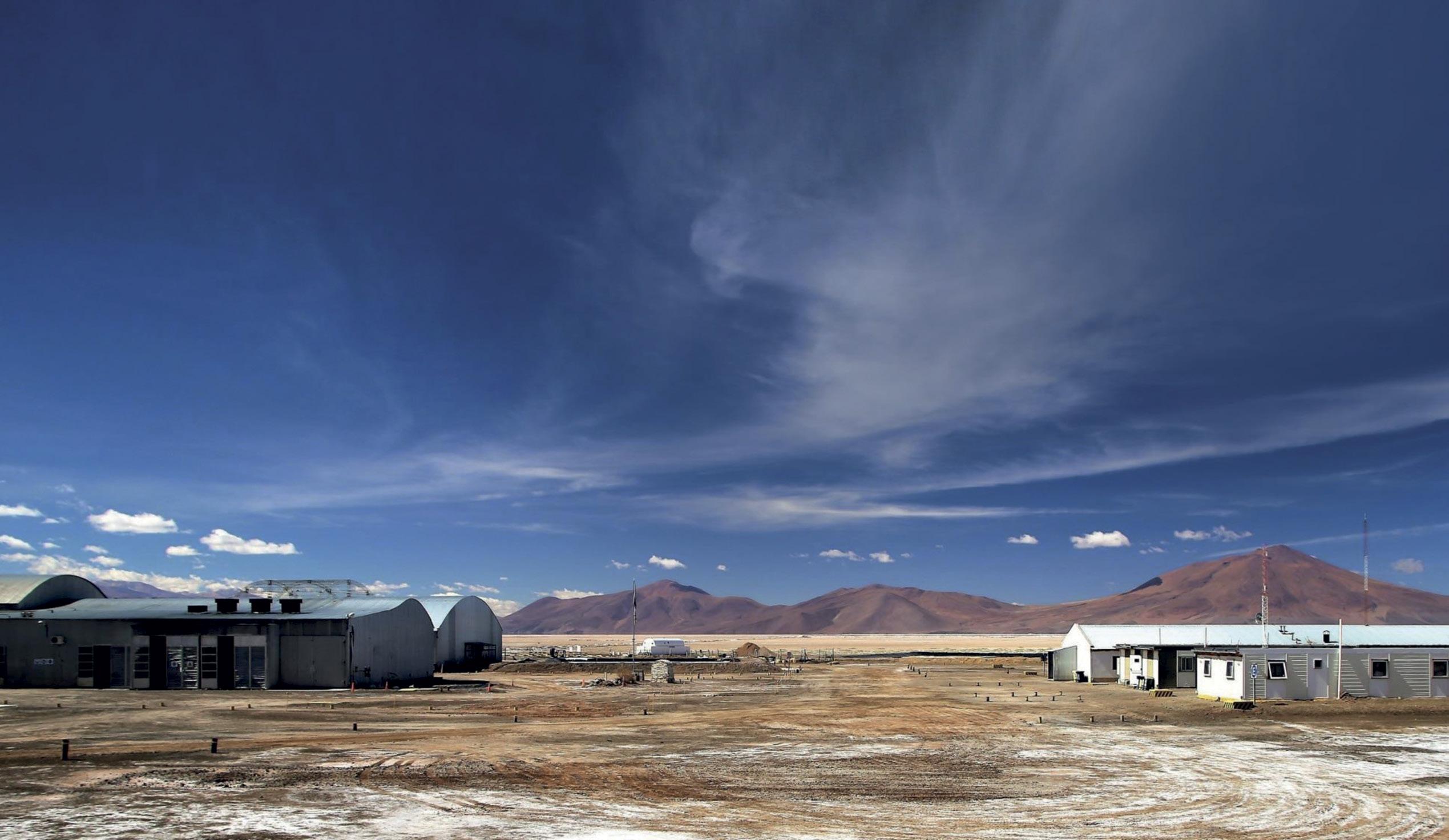
Breakbulk movers active in the region are working to get a foothold in the burgeoning sector.
Madrid-based project forwarder Altius has already launched offices in Argentina, Chile and Bolivia. More recently, it has set up a multi-country team to support the sector and capitalize on project opportunities. The line-up comprises a project logistics
specialist and a forwarding expert in each country, along with engineering and technical support from Spain.
Alejandro Porrua, managing director of the firm’s projects division, said the objective of the team was to share ideas, experiences and some of the “crazy ways” of delivering projects for clients. “It is not easy to cross the Andes, and you have to take into account the weather conditions. There is a lot going on there that makes it fun working in projects!”
PROJECT PIPELINE PROMISING
Accounting for about a fifth of the world’s lithium reserves, the Argentine segment of the lithium triangle is concentrated in the northwestern provinces of Salta, Jujuy and Catamarca. There, mining companies pump up salty water from underground salars – or salt flats – into enormous ponds where the liquid slowly evaporates leaving a brine with a high concentrate of lithium. The
SIMON WEST
lithium is then extracted through chemical treatment and processing.
Argentina boasts the world’s biggest project pipeline – according to S&P Global Market Intelligence, 14 of the 53 projects worldwide in postpreliminary economic assessment, or PEA, phase are located there. Data from Argentine mining chamber Caem forecasts that spending on lithium projects will surpass US$4 billion in the next few years, with output of lithium carbonate slated to hit 175,000 tonnes by 2025, nearly three times current levels.
Two projects in Argentina are already producing lithium on an industrial scale – the Salar de Olaroz in Jujuy province, operated by Australian group Allkem, and Mina Fenix in Catamarca, operated by U.S.-based Livent. Several more projects are slated to start up in the coming years, including the Rincon plant in Salta , acquired by UK-based mining firm Rio Tinto in March last year for US$825 billion.
MINING
CREDIT: RIO TINTO 64 BREAKBULK MAGAZINE www.breakbulk.com ISSUE 2 2023
Following the acquisition, Rio Tinto’s board approved US$194 million to build a small starter batterygrade lithium carbonate plant with a capacity of 3,000 tonnes per year.
Guillermo Calo, Rincon’s managing director, said the plant had “started to take shape”, with an overhaul of camp facilities and the construction of an airstrip underway.
The project, which calls for additional work and engineering studies aimed at moving towards full operations, is expected to see saleable production start in the first half of 2024, Rio Tinto said.
Juan Turner, director and owner of Argentina-based project cargo forwarder Rowners, has been keeping his eye on the sector for the last 15 years. “Our reserves are huge, and a lot of carmakers are trying to make deals or even own some reserves. I see so much potential.”
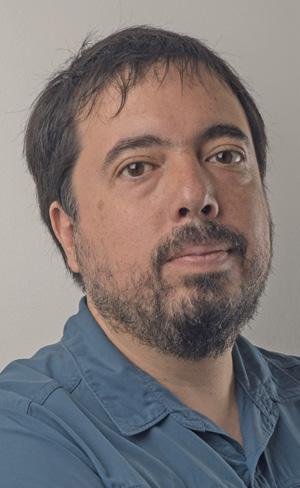
Rowners, a member of the Netherlands-based Heavy Lift Group, has represented Danish forwarder Martin Bencher – now part of Maersk – since the Argentine company was founded in 2015, handling mostly 300-tonne generators and other heavy components for local and international power producers.
SUPPORT FOR LOCALIZATION
Turner, whose great, great-grandfather began his own logistics firm in 1878, pointed to an infrastructure drive to support the mining sector, which includes plans to upgrade the country’s train network to transport raw materials and other cargo. Mining companies are also establishing transfer yards for trucks taking cargo to and from lithium mines, which are often located 4,000 meters above sea level.
“The logical way to transport cargo is to contract normal trucks to go up to these transfer yards, then use the more powerful trucks and experienced drivers to climb the mountain. This solution works for either raw materials or project cargo.”

The executive said having local presence – “local” meaning from the same province – in Argentina was “crucial.” “Always we give priority to someone from the same province. There is a lot of social pressure on this. I have heard many cases whereby the mining companies chose somebody from another province or from abroad and they had a lot of trouble. They had to change their mind and choose the local supplier. This is for sure a trend,” he said.
Rodrigo Izquierdo, deputy CEO and domestic cargo director of Integral Chile, also stressed the importance of maintaining a local presence. “The mining companies really notice that we have presence, that we invest, and we are closer to them. It helps a lot with the company’s image, and it is far easier to react and to do something.”
Chile is the lithium triangle’s most developed market, and second only to Australia in terms of global production. The government has limited output to just two companies – Chile’s SQM and U.S.-based Albemarle, with operations centered around the Atacama salt flats. Several players in the junior mining sector are also engaged in development and exploration.
Izquierdo said the sector has been a significant source of logistics work for Santiago-based Integral. The firm has launched an office in the northern port city of Antofagasta to serve mining operations.
The executive pointed to a large network of contractors that supply heavy machinery, specialized equipment, vehicles and other components to mining companies. “With the huge number of suppliers, there is enormous potential for different kinds of projects. And we are working hard to get as many as we can,” he said.
“We recently delivered a series of modular offices (for a lithium client) scheduled in two lots from Santiago to La Negra – an important industrial area near Antofagasta. Chile’s highways are very good – pretty straightforward and well-suited to transport this sort of oversized cargo, or even bigger. Both convoys, sent on different months, travelled about 1,350 kilometers only during daylight hours to their final destination, at a safe speed, smoothly and with no incidents.”
www.breakbulk.com BREAKBULK MAGAZINE 65 MINING
Rodrigo Izquierdo Integral Chile
A local presence is very important. CREDIT: INTEGRAL CHILE
CHILE FACES CHALLENGES
The country though faces an uphill struggle to maintain its global – and even regional – predominance, with some analysts predicting that Argentina will be producing more lithium than its neighbor by 2028. The country’s loss of ground, analysts claim, is partly caused by the environmental and social challenges that continue to disrupt the buildout of projects.
Local communities throughout the region are becoming increasingly vociferous about the impact of lithium brine mining on local water sources and biodiversity, while leftist President Gabriel Boric’s pledge to increase mining royalties and tighten rules governing metals and minerals extraction have spooked investors.
“It is not in the place where investors initially expected it to be in terms of lithium production by 2023,” said Carla Bass, Latin America editor at Argus Media. “Political unrest and uncertainty – including the failed attempt to pass a new constitution – as well as less-attractive investment terms have hindered development. Argentina in turn has taken one of the more agile approaches in the region.”
The metal remains key for Chile’s economy, with the value of its lithium exports doubling in January from the same month last year to US$565 million – about 6 percent of total exports, according to government data. But,
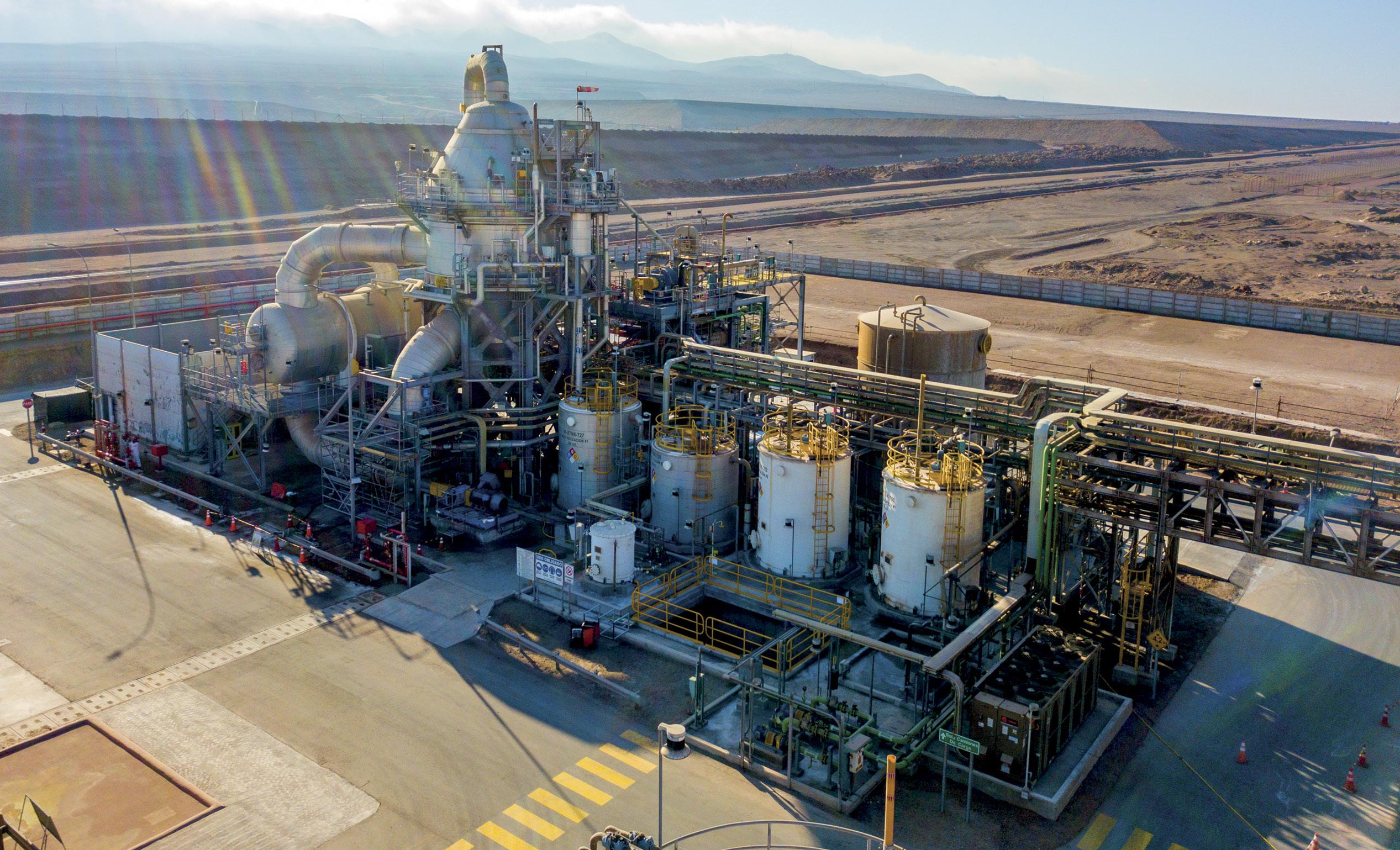
Bass says, this is because global prices have doubled over the same period, as growth in electric vehicles and similar uses for lithium accelerate. “Prices have risen, but Chile’s volumes are roughly flat,” she said.
BOLIVIA’S AMBITIONS
Bolivia, the third member of the lithium triangle, has more lithium deposits than any other country – 21 million tonnes, according to the U.S. Geological Survey – with most buried beneath the vast Salar de Uyuni salt flats in the southern department of Potosi. But, unlike Argentina and Chile, these resources remain largely untapped.
President Luis Arce, who took office in late 2020, has been quoted as saying that he wants Bolivia to become “the world capital of lithium,” and that the landlocked nation could meet 40 percent of global demand by the end of the decade. Previous administrations have also touted plans to industrialize the Salar de Uyuni, pointing to the potential of lithium hydroxide, EV batteries and industrial cathode materials.
Earlier this year, state-run lithium company, Yacimientos de Litio Bolivianos, or YLB, inked a deal with a consortium led by Chinese EV battery maker CATL to invest more than US$1 billion to mine, refine and market Bolivia’s massive resources. Whether the deal marks the start of an “era of
industrialization of Bolivian lithium,” as Arce said, is moot, with similar efforts in the past to lure foreign investment and expertise falling flat.
“Bolivia’s state-first policies have yet to lead to any real development. It certainly has the reserves to become the world capital of lithium, but it may not have the political will or the infrastructure,” Bass said.
“That Bolivia could go from mostly pilot projects to supplying 40 percent of global output by 2030 as the president has outlined would require a major and completely coordinated infusion of investment. That is not happening now. There are also environmental and social concerns with altering the salares, which could grow.”
Porrua, who lived in Bolivia for more than two years while serving as Altius’s project director for the Americas, also believed the country is failing to keep pace with its neighbors.
“I really love Bolivia, and they have tremendous potential, not only for lithium but for a lot of industries,” he said. “But I am afraid they are not going to be first in line. It is Argentina where we are seeing the most interest to develop, and they are growing faster than any other country.” BB
Colombia-based Simon West is senior reporter for Breakbulk.
ISSUE 2 2023 66 BREAKBULK MAGAZINE www.breakbulk.com MINING
Albemarle’s La Negra III lithium conversion plant, Antofagasta, Chile.
CREDIT: ALBEMARLE
PROJECT FREIGHT NETWORK
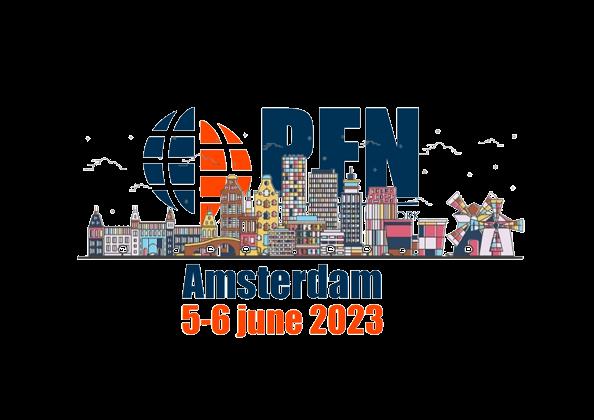
• Project Freight Management Platform (premium)
• PFN Cloud Office environment
• PFN-Meet (free to use for members)
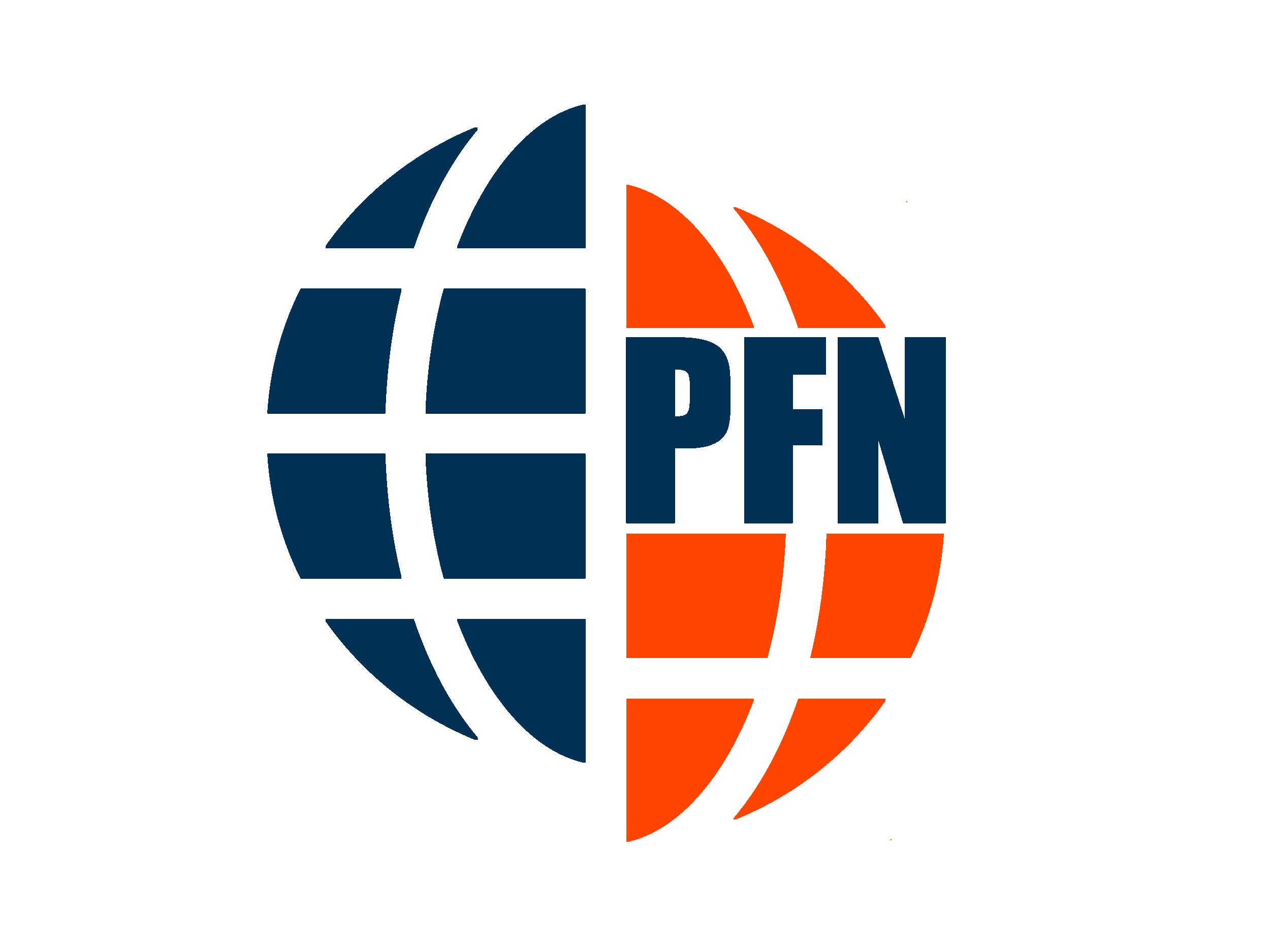
• Educational materials for your staff
• Mobile apps for Cargo & Ops inspections
• Annual face-2-face meetings
• Driven by our Board of Advisors (BoA)
• Includes partnership of, Renewable Energy Project Logistics Alliance (REPLA)
www pfn-network com
At Our Annual Meeting
Fossil Fuels Still Dominate Regional Landscape
Investment in Renewables, Power and Cleantech Add to Project Outlook
BY SIMON WEST
Fossil fuels continue to dominate the project landscape in the Middle East, accounting for more than 70 percent of energy projects across the region.
That was a key message from Ryan McPherson, regional director for the Middle East, Africa, Russia and CIS at the Energy Industries Council, during a breakbulk and project market outlook session at Breakbulk Middle East in Dubai.
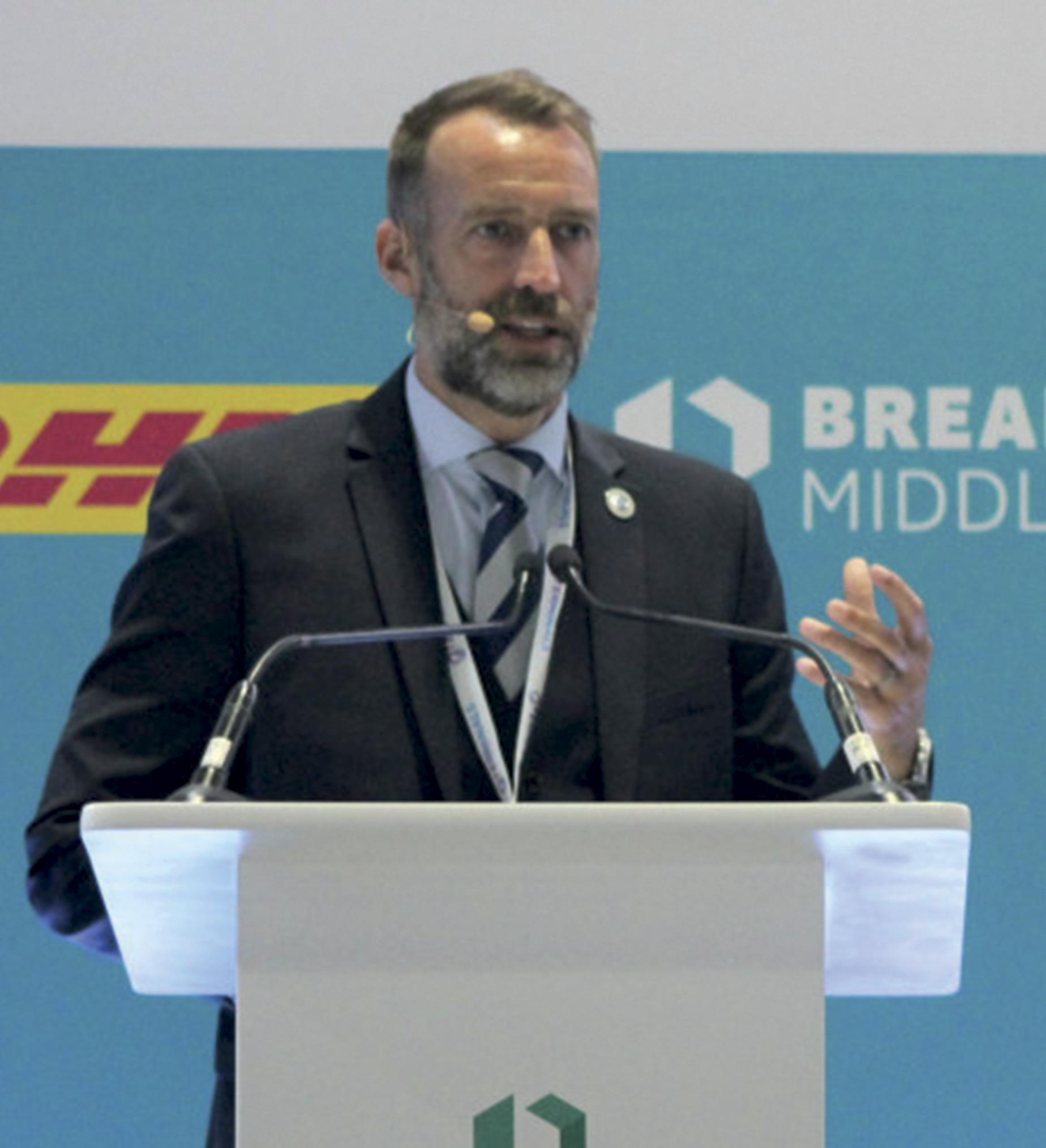
The total number of projects being tracked by the EIC, the UK’s largest energy supply chain trade association, are worth more than US$630 billion, with Saudi Arabia and the UAE housing about a third of the market each. Of that total, US$457 billion has been earmarked for upstream, downstream and midstream projects.
“Oil and gas is still the dominant player across the region,” McPherson said, with high crude prices helping to make companies across the GCC “more buoyant.”
World-scale construction projects highlighted by the EIC include the Ruwais Derivatives Park in Abu Dhabi and the Ras Al Khair crude oil-to-chemicals project in eastern Saudi Arabia. Both projects are calling for investments of US$20 billion.
Despite the dominance of fossil fuels in the energy mix, the region can look forward to some major investment in renewables, transmission distribution and other energy transition technologies.
Solar PV is the prevailing energy form in the renewables sector, accounting for about 58 percent of estimated capex in the region by the end of the decade. Solar CSP and energy from waste account
for 16 percent and 13 percent, respectively. Investment in onshore and offshore wind account for 9 percent and 4 percent.
“The GCC countries are strategically positioning themselves to utilize their renewable capacity domestically while continuing to export hydrocarbons post-Covid,” McPherson said. “The industry will
EIC’s Ryan McPherson said the GCC countries are strategically positioning themselves to utilize renewable capacity domestically while continuing to export hydrocarbons.
continue to leverage its growing renewables potential plus natural gas reserves which are becoming increasingly important to transition away from liquid fuel power plants.” BB
Check out Breakbulk’s interview with McPherson at Breakbulk
Middle East: https://www.youtube. com/watch?v=EYgfCZNd71I&t=62s
BREAKBULK MIDDLE EAST REVIEW
CREDIT: HYVE GROUP
68 BREAKBULK MAGAZINE www.breakbulk.com ISSUE 2 2023
“The industry will continue to leverage its growing renewables potential plus natural gas reserves which are becoming increasingly important to transition away from liquid fuel power plants”
New Contracting Methods Needed Post-pandemic
Sector Eyes Alternatives to Long-term Contracts and Fixed Rates
BY CARLY FIELDS
The days of long-term contracts and fixed rates are past, according to a Rethinking Freight Formats panel discussion at Breakbulk Middle East. Now, shippers and carriers are turning to alternative contracting methods to secure carriage.
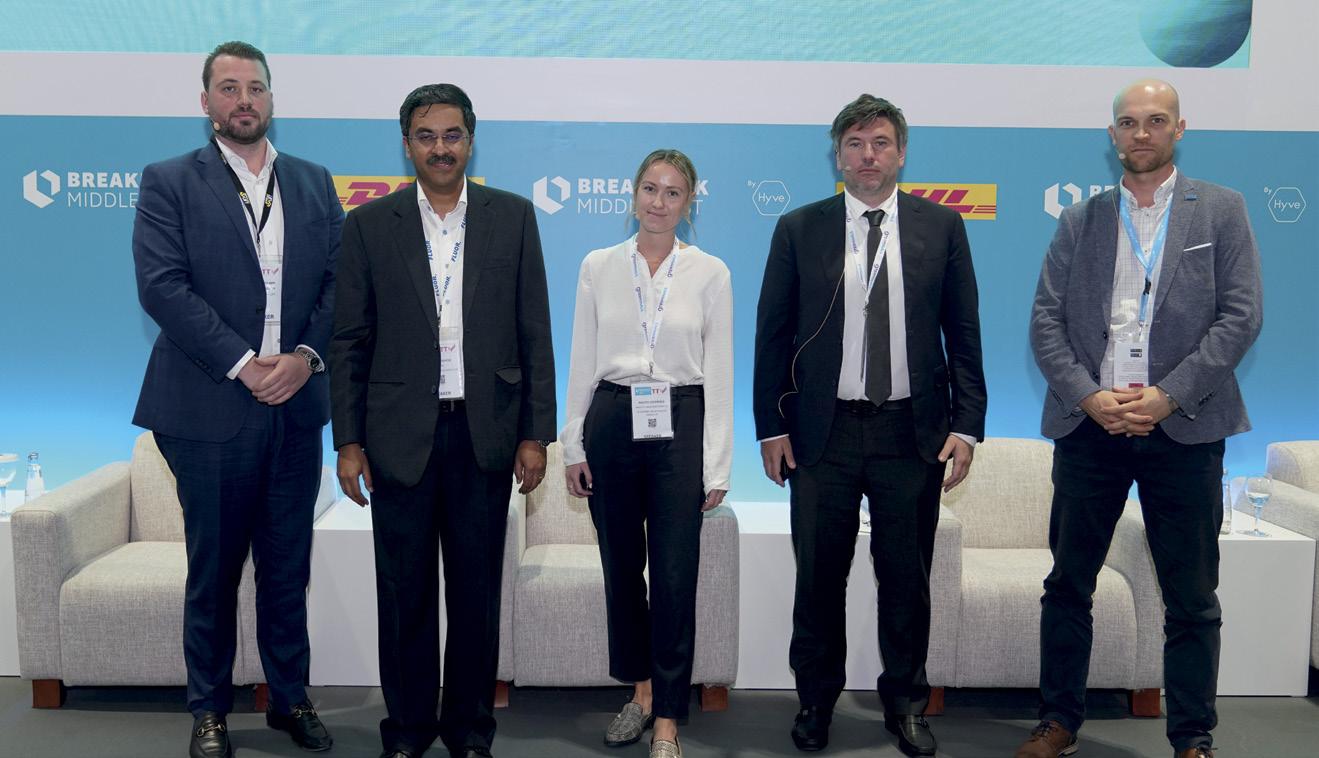
Steffen Behrens, president for the Middle East for deugro, said that the pandemic had fundamentally changed the whole approach to contracting, and that shippers are “still trying to figure out how to do it right.”
There is not yet one perfect solution, he added. “You will not get long-term rate validity today, especially for an EPC project where you do not know the volumes, the engineering and so on.”
Cost-plus contracts were offered up by the panel as one alternative to the contracting methods of the past. However, that too came with caveats. Behrens said: “You need to define exactly how you want to deal with cost-plus. We have seen clients that have gone with three cost-plus agreements, and we have seen challenges and difficulties with that.”
Overall, there is a desire to shift towards a fairer and more balanced operating environment, reducing the number of unnecessary risks and with “less gambling,” said panel moderator Cyril Varghese, global logistics director at Fluor.
In this new operating environment, he asked whether there were opportunities for the market to look at different pricing mechanisms. One suggestion was the indexation of freight rates, using those to benchmark standard routes, similar to the indices used in other shipping sectors.
In answer, Evgeny Poltavets, managing director and partner at MLB
Shipping DMCEST, said that while they do currently use a multipurpose time charter index to gauge direction of travel on freight rates, creating an index to cover the whole sector could be problematic.
“If we talk about instruments and tools to use, there is no clear answer.”
Fellow panellist, Andreas Rolner, managing director at United Heavy Lift, was also pessimistic on the usability of an index for the breakbulk and project lift sector. “I don’t see this working in our market. You need a generic cargo, you need a fixed lane and you need to guarantee a certain amount of volume on that fixed trade.”
Varghese suggested that freight forwarders could consider moving to an index-linked strategy: when freight rates increase, shippers will be compensated; when freight rates decrease, carriers will be compensated.
Meanwhile, he said that adopting a cost-plus – rather than a lumpsum –basis is a “very reasonable approach.” But he urged the audience to be
very clear on what is considered as cost-plus and to ensure that there is transparency, accountability and fairness. “We are custodians of our clients’ money, so we need to be clear on what the cost element is.”
Rolner added that while high rates are always welcome for asset owners, stability is just as important. Here, Varghese referred to the use of freight forward agreements, a form of hedging for the sector, as financial instruments that could support that stability.
While a comparatively new concept for the multipurpose vessel sector, some MPV operators are already employing futures hedging as part of a broader risk management strategy.
Varghese noted that at a base level the practical problem is how to ensure accountability and transparency in freight costs. He conceded that there will not be one solution that works for all stakeholders, so therefore the industry needs to come together to find a solution that is “reasonable” to all. BB
BREAKBULK MIDDLE EAST REVIEW
CREDIT: HYVE GROUP
From left: Andrea Rolner, United Heavy Lift; Cyril Varghese, Fluor; Regitze Cederfeld, Freight Investor Services; Evgeny Poltavets, MLB Shipping DMCEST; Steffen Behrens, deugro Emirates.
www.breakbulk.com BREAKBULK MAGAZINE 69
Flexibility, Adaptability Needed to Meet Market Challenges
Carriers Continue to Face “Capacity-Busting” Port Congestion
BY CARLY FIELDS
MPV operators had a bumper year in 2022, but while the increased revenues were welcomed after many fallow years, AAL Shipping CEO Kyriacos Panayides said that the “good times” also brought challenge as carriers battled with capacity-busting and schedulechallenging congestion at ports.
Speaking on the Business Outlook: Rates, Capacity and Sustainability panel at Breakbulk Middle East, Panayides said: “What we have taken away from that is that it required a complete review of business models. We had not experienced such dramatic cargo growth for some time.”
Adding to the carrier perspective, Denis Bandura, managing director at BBC Chartering Mideast DMCCO, said that “adaptation” had been the buzzword for carriers over the past two years, while Hisham Al Ansari, CEO at MSC Saudi, gave “flexibility” as his word of choice.
“With the connection of the Middle East region to the global markets, the question of supply and demand was very much about flexibility. We had congestion everywhere that we had to work with,” he said. “It was a challenging period, no doubt, but the lesson learnt was quite great in terms of how you can manoeuvre.”
From a freight forwarder perspective, Andy Tite, vice president of global business development and commercial director of industrial projects at DHL Industrial Projects, said that people had been the biggest challenge of the past two years, with everyone under pressure to work from home and restrictions on travel.

“Relationships with the carriers and EPCs are really important to us; we need to connect with our clients. Coming together in business is a great focus for us.”
Engineering, procurement and construction companies, meanwhile, have had to adapt to the demands of tighter capacity, particularly on the sea freight side. Stephanie Schooley, logistics Manager at Petrofac, told the audience that EPCs have had to “adapt” and change their approach, adding in more contingency.
“Ultimately there is a lot to think about,” she said. The biggest issue for an EPC today is the long timeframe from proposal to execution. Therefore, EPCs need commercial and technical support, flexibility and options, she said.
Collective Approach Advocated
Past and future problems are “best solved as a collective,” Tite added. “As freight forwarders we cannot dictate what happens, but we have definitely got a role to play. We are a conduit, understating the needs, wants and priorities of our clients, but being empathetic with carriers.”
Al Ansari agreed that co-operation between all the players will make life easy for the final customer and the shipper, while Schooley added that transparency is also key in a volatile market.
Building on that sentiment, Panayides said that you need stability,
as volatility makes it difficult for everyone. “We need the market to behave maturely; all the stakeholders need the industry to align. We have to further enhance the landscape we are working on, whether that is pricing, landside logistics and so on – we all need to work on a stable path and then business will be more predictable.”
Looking ahead, the carriers on the panel agreed that the project planning horizon will be compromised by the difficulty in renewing the MPV fleet. That coupled with technical issues, and ever-increasing demands from clients could pose challenges to capacity and sustainability drivers.
Panayides said that nobody today knows what the “ship of the future” will be, which makes it difficult for carriers to make firm commitments on new tonnage. But on the upside, this means that carriers have not “gone crazy” and over ordered, he said, meaning that there will not be overcapacity in the MPV sector.
“We are going to face tight supply challenges,” he concluded. “There is so much push on sustainability, but there is no real adequate infrastructure in place for shipping lines to make sustainable business model.” BB
BREAKBULK MIDDLE EAST REVIEW
The panel discussed the “challenging” period for the multipurpose sector. CREDIT: HYVE GROUP
70 BREAKBULK MAGAZINE www.breakbulk.com ISSUE 2 2023
Job Hunting? ‘Don’t Pigeonhole Yourself’
Executives Offer Sound Advice to Next Generation of Project Professionals
BY CARLY FIELDS
Tenacity, confidence, resourcefulness and thinking outside of the box will go a long way towards securing a job in the breakbulk logistics industry, students and graduates were advised at Breakbulk Middle East Education Day 2023.
Speaking to a room of over fifty potential new starters, John Pittalis, marketing and communications manager at AAL Shipping, said that there are many transferable skills that can be applied to the maritime sector, including IT, accountancy, law, business studies and more.
“Today, companies are casting the net much wider than 10-20 years ago. That is terrific for the industry – your generation is capable of doing anything,” he said.
Sarah Charles, human resources for Africa, Middle East and Asia at Svitzer and diversity and inclusion lead, agreed that the maritime industry is incredibly diverse and that there is a huge amount of learning and growth opportunity in the sector. “So, we really need to attract talent that has a curious mindset.”
Responding to a question on how to find a job in today’s market, Charles empathized with how tough job seeking can be. “It takes a huge amount of energy and tenacity; job hunting is a full-time job in itself,” she said, urging students and graduates to network and build up the confidence to connect with people.
“You have to go above and beyond to set yourself apart and if you are not employed at the moment, what a great time to upskill.”
Pittalis listed other personal attributes that can help job seekers in their search, namely tenacity and good communication skills. But he also advised that people do their research
on the different parts of the industry.
“In AAL, we have everything from legal, chartering and engineering, to operations and accountants.” He added that there are also opportunities for people to move from one role to another within the same company. “Don’t pigeonhole yourself,” he advised.
Work Your Way Up
Panellist Wayne Holbrook, director of global development in the project and energy services department of Expeditors, highlighted one pitfall that new starters should avoid: “One of the challenges is that everyone is looking to become a manager. Everyone wants to advance very quickly.”
But he advised that job seekers need to be ready to work their way through an organization. “The only way to learn is to live through the jobs. Put the time and effort in. Do not shoot to be the president of the company first; get yourself into the company and work your way up.”
Pittalis added that it is also beholden on the industry to better understand the mindset of the current
generation, and to look beyond just skillsets.
In a discussion about entry level routes into the breakbulk and project cargo industry, the panel highlighted graduate programs as good starting points. Other routes included mentorship programmes, internships – paid and unpaid – and work experience.
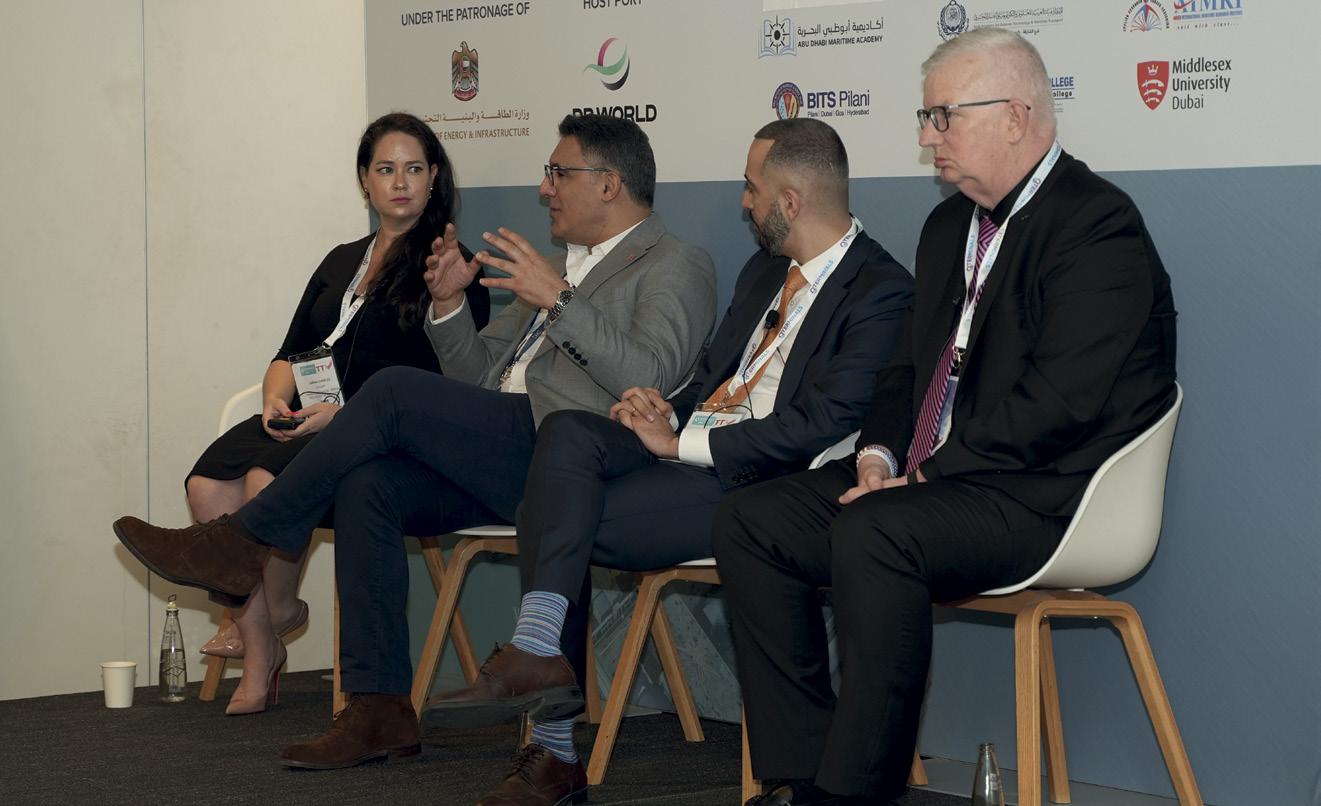
Internships were described as giving a “good overview of the company” by Holbrook, while Charles saw them as “a great opportunity to get a foot in the door and to get a name on your CV.”
Danial Kaabi, CEO of Sea Horizon Offshore Marine Services, also advised that graduates get peer support through mentoring organizations such as YoungShip. “When you get a job, you are straight away under pressure. You need organizations that you can speak to for support,” he said. Education Day moderator Capt. Rami Al Breiki is the chairman of YoungShip UAE.
Overall, students were advised to take chances, be confident, connect with people and to try to be resourceful outside of job hunting. BB
BREAKBULK MIDDLE EAST REVIEW
AAL Shipping’s John Pittalis said that breakbulk companies are casting the net wider to find employees today.
CREDIT: HYVE GROUP
www.breakbulk.com BREAKBULK MAGAZINE 71
SAUDI DIGS DEEP ON MINING AMBITIONS
Political Support Catalyzes Project Cargo Demand
The mining industry has long been an important part of many economies, providing valuable resources that are used in a wide range of applications.
For Saudi Arabia, a country that is seeking to diversify the nation away from oil and usher in a new era of economic sustainability, the mining industry is part of the Saudi Vision 2030 unveiled by Crown Prince Mohammed bin Salman in 2016. Fast forward and the government’s National Industrial Development and Logistics Program, launched last year, is now leading the charge to boost the GDP contribution of industry, mining, logistics and energy to 1.2 trillion Saudi riyals (US$320 billion) by 2030.
As part of this plan, the Saudi Arabian government has announced six new mining opportunities, which it hopes will attract investment and help develop the country’s nascent mining industry.
The development of the mining industry in Saudi Arabia is expected to create a significant opportunity for the project cargo sector through the infrastructure requirements for new mines. Additionally, there is the oversize mining equipment needed to run a mine. Already, billions of dollars of
Region: Middle East
Problem: Urgent need to diversify to lessen Saudi Arabia’s financial dependence on fossil fuels
Solution: A firm commitment to an ambitious mining program will provide medium term work for project cargo movers
investments have been slated for new industrial projects, with breakbulk and project cargo movers placing themselves in the thick of the action.
But, is the breakbulk industry in Saudi prepared to take on the expected upcoming projects?
Jason French, director of regional development for Hutchison Ports, believes that the ground to support the Saudi mining industry has already been readied.
SPARK, a new megaproject being constructed in the Eastern Province of Saudi Arabia, just 40 kilometers away from Dammam, is an energy city and a logistics hub ready to cater to all kinds of industries, including the mining industry. SPARK (King Salman Energy Park) Logistics is a joint venture between Energy City Development Company (ECDC) and Hutchison Ports.
 BY ASMA ALI ZAIN
BY ASMA ALI ZAIN
BRIGHT SPARK
“SPARK is strategically located and is connected via a road and rail network which will eventually connect with the GCC rail. This will later be interlinked with the Saudi Arabian Railway (SAR) rail connecting with the Saudi mines,” French explained.
“So the network of the SAR railway is very mature and has set the ground for several industries.”
French said that the energy city is a 50-kilometer development within which a re-export zone has been set up where all kinds of cargo, including containers, project cargo and more is being handled.
“Almost half a billion dollars have been spent on building and buying the supporting equipment for the city which we will use to support all industries related to energy, including oil and gas production and mining,” French said.
SAUDI ARABIA
72 BREAKBULK MAGAZINE www.breakbulk.com ISSUE 2 2023
King Salman Energy Park (SPARK) is an energy city and a logistics hub ready to cater to the mining industry. CREDIT: SPARK
He added that SPARK’s central location is suitable for providing any required logistics support to all kinds of industries. “We are also approved by Saudi customs which makes movement of breakbulk cargo easier.”
Mining projects in Saudi are still in the initial stages: “We are expecting the re-export zone on the dry port logistics side in SPARK to become fully operational in 2024. For this, we will be talking to Maaden (Saudi Arabian Mining) as well as the larger mining community to see how we can be of benefit to their logistics supply chains and also how we can possibly save their cash flow in terms of duty,” French said.
The Saudi Railway Organisation recently tested the line by shipping a phosphate cargo from a mine operated by Saudi Arabian Mining Co.
“Basically, we are putting in the infrastructure in the country, the backbone that didn’t exist. SPARK is a city within a city that will connect supply chain logistics through rail, road and sea,” French said.
‘THIRD PILLAR OF INDUSTRY’
Namir Khanbabi, general manager of Swire Projects, noted that for Saudi, the mining industry represents a third pillar of industry, alongside oil and gas and petrochemicals. “Saudi Arabia’s mining sector is growing rapidly as part of the Vision 2030, whereby mining represents a third pillar of industry alongside oil and gas and petrochemicals,” he said.
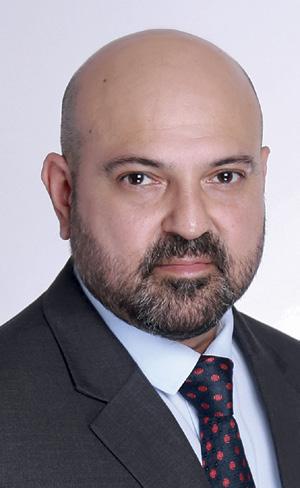
He too believes that the development of mining projects in Saudi Arabia offers great potential for project cargo shipments. “This presents a significant opportunity for companies in the breakbulk sector which are well positioned to provide the necessary project and heavy-lift shipping services. Therefore, we are expecting to see a
surge in demand for project and heavylift shipping services in the coming years,” he added.
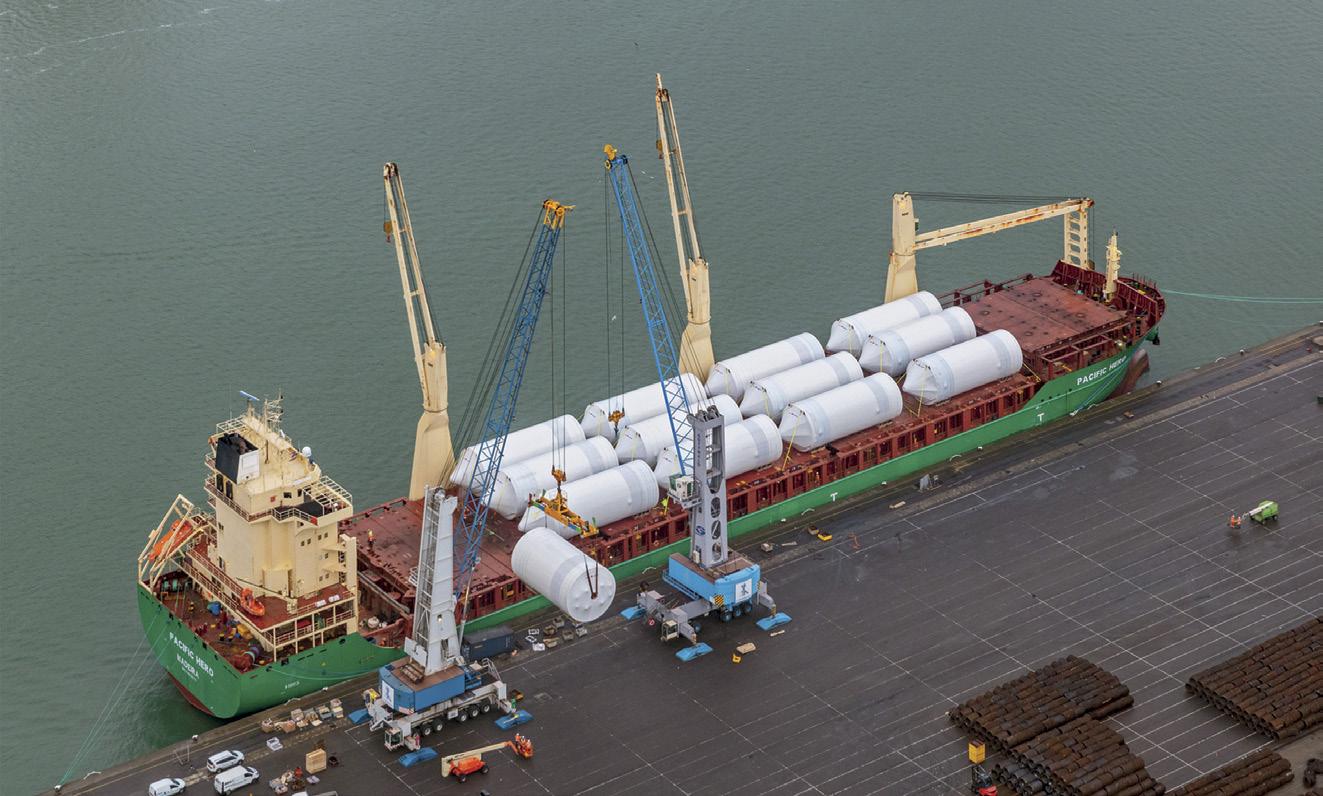
One of the key drivers of demand for heavy-lift shipping services in the mining industry is the need for large project cargoes during the buildout of new mines. These cargoes can include heavy machinery, conveyors and other equipment needed to construct the mine, as well as the mining equipment required to run the mine, such as trucks and excavators.
The surge in demand for project and heavy-lift shipping services is expected to come from Asia. However, Khanbabi warned that there may not be enough capacity to service Saudi Arabia projects. He hoped that this wrinkle would create opportunities for Swire Projects with its cross-basin trading pattern. Swire Projects stands ready to take advantage of this growing demand, he added.
LACKING SPECIALIST EXPERTISE
One of the challenges facing the development of the mining industry in Saudi Arabia is the need to build up expertise in the sector. This will require the development of a skilled workforce and the establishment of mining-related infrastructure. Another challenge is the need to attract foreign investment.
The Saudi Arabian government has passed a new mining law, which aims to create a more attractive investment environment for foreign companies. The law includes a number of incentives,
such as a 30 percent corporate tax rate and the ability to repatriate profits. The hope is that this will attract foreign investment and help to develop its mining industry.
Khanbabi said that having the right team in place to service such opportunities in the region is important. “As a group, we will explore establishing offices in the Middle East in the future,” he added.
But while the development of the mining industry in Saudi Arabia is expected to create a significant opportunity for the breakbulk sector, there are also risks to be managed. One is the potential for delays in the construction of new mines, which could lead to cost overruns and delays in the delivery of project cargoes. Another is the potential for political instability, which could disrupt supply chains and create uncertainty for investors. Managing those risks will be critical to the success of the mining and consequently the breakbulk sector in Saudi Arabia.
Risks aside, development of Saudi’s mining industry presents a significant opportunity for the breakbulk sector. And by managing the risks associated with the development of the mining industry in Saudi Arabia, the breakbulk sector can play a key role in helping the Kingdom to diversify. BB
www.breakbulk.com BREAKBULK MAGAZINE 73
ARABIA
SAUDI
Asma Ali Zain is a Dubai-based journalist with over 20 years’ experience in writing for and editing business-tobusiness publications.
Namir Khanbabi Swire Projects
Swire Projects is anticipating good volumes from Saudi Arabia.
CREDIT: SWIRE PROJECTS
BY THOMAS TIMLEN
THREE ENGINEERS’ HEADS BETTER THAN ONE
Early Logistics Engagement Pays Dividends for Reclaimer Move
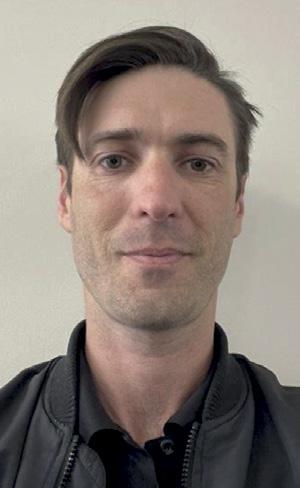
As if the weight and awkwardness of large and unconventionally sized iron ore reclaimer components – covering an on-deck area of 1,800 square meters and weighing 20,000 freight tonnes – were not challenging enough, this coastal sea move also had to contend with port congestion, a tight delivery window and sea swell.
The seven fabricated breakbulk iron ore reclaimer components needed to move from the place of fabrication near Henderson, Western Australia, to a mining facility in Nelson Point. The cargo included a 95-tonne pantograph, a 278-tonne bucketwheel boom, a 37-tonne reeler platform, a 284-tonne slew deck, a 226-tonne substructure and two 133-tonne 32-wheel equalizers, together adding up to a total volume of 15,790.14 cubic meters. These components made up the ocean leg of the operation; an additional five modules were transported by road, some measuring up to 8.5 meters in
Region: Australia
Problem: The rebuild and subsequent transport of a long-stored iron ore reclaimer brought weight and overdimensional challenges
Solution: Transport and logistics engineers joined the manufacturer to optimize all aspects of the rebuild well in advance of the move
width. A further 38 general and outof-gauge trailers of ancillary goods were also moved from Perth to Nelson Point to complete the shipment.
For an operation of this scale, industrial engineering giant thyssenkrupp Industrial Solutions turned to the expertise of NMT Global Project Logistics who in turn recruited trusted service provider AAL Shipping and its scheduled monthly Asia to
Australia West Coast Liner Service. The collaboration was not limited to the logistics of the move, but also gathered the partners’ experts to address the engineering and design contributions for the refurbishment of the reclaimer that had been in storage for ten years.
NMT Global Project Logistics senior project manager Jayme Bailey told Breakbulk that he was most impressed by the flexibility of the engineering team in pursuing workable solutions. “This machine was built 10 years earlier and left in storage. The principal client requested the unit to be refurbished to increase its overall capacity and as such the engineering and design

CASE STUDY
Jayme Bailey
CREDIT: AAL SHIPPING
NMT Global Project Logistics
74 BREAKBULK MAGAZINE www.breakbulk.com ISSUE 2 2023
input came from all parties – thyssenkrupp, NMT and AAL – to make sure that the rebuild of the machine factored in all aspects of not only the build, but also the transport and logistics.
“This meant many lengthy meetings were had with the AAL engineering team, NMT, the principal client and the fabricator. The ability to adapt and change, to come to a solution that worked for all parties was a paramount focus and the AAL engineering team rose to the challenge. One of the major reasons for success on this project is attributed to having this input and the fluidity from the AAL engineering team.”
Bailey described the project’s challenges: “From an operational sense, this project was on an extremely tight deadline with some heavy penalties for late delivery of the goods to site. As this project was on the critical pathway for a debottlenecking project and was to be delivered during a peak shutdown period, the window for transport and logistics was extremely rigid. The AAL team managed to keep their liner vessel on schedule during one of the worst periods of port congestion that has been seen over the past five years. This was no easy feat and the outcome of being able to achieve this was a resounding success as the goods were delivered on schedule without any delays.”
BRINGING TRANSPORT STRANDS TOGETHER
Careful planning was required to coordinate the movements by land, then sea, then by land to the destination. Dividing the project into a number of different logistics silos ensured that the appropriate expertise was applied to each stage, beginning with the movement of the goods from the fabricator’s location to the Australian Marine Complex Henderson port facility.
“Due to the size of these units, the goods were transported to the port over a full road closure on self-propelled modular transporters,” Bailey said. “The planning and government interface to approve an operation such
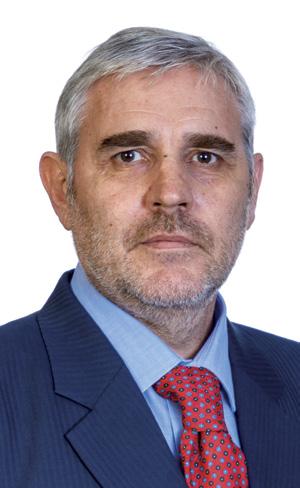
as a full road closure is an extensive process that took roughly six months for all approvals to be granted. The movement of the major modules was conducted over two consecutive days with 5 kilometers travelled from fabrication location to the port. Due to the size of the modules, remediation works and route planning were integral for the goods to access the port and successfully reach the designated laydown area.”
Once at the load port, SPMTs were again utilized rather than conventional trailers. The loading plan was implemented with the super modules delivered alongside the vessel for loading as needed. The entire loading operation was conducted over fourday shifts.
Here the modules were prepared for loading on board the 18,697 deadweight-tonne general cargo ship AAL Nanjing. Extensive planning ensured that this loading operation went smoothly. AAL’s head of transport engineering, Nicola Pacifico, said: “Due to the large and unconventional size of the reclaimer components, which covered a total area on the vessel of more than 1,800 square meters, the lifting and stowage challenges were significant.”
The detailed engineering process started mid-February and ran until the third week of September, one week before shipment – in total, just over seven months.
OPTIMIZING THE DESIGN
Pacifico said that from the preliminary drawings through to the final issue for construction, several steps needed to be evaluated jointly with the thyssenkrupp engineers to ensure a smooth and safe operation from A to Z. “The biggest engineering challenge of the project was the particular
design of the reclaimer units and having all the components ready in place in order to optimize the final installation on site and minimize any possible downtime or unforeseen extra costs.”
The reclaimer units were fabricated with several protrusions and a steel construction that required a specific lifting arrangement/geometry for each component and temporary transportation supports that could be removed with minimal manpower and external assistance of lifting and handling machinery.
The decision was made to use bolted steel columns or support stands in combination with additional hardwood for stabilizing and to load spread the weight of the units on vessel decks. “To give a rough idea, some of the supports used due to the bottom structure and protrusions exceeded three meters in height,” Pacifico said. Road transportation requirements also played a big part in the final design consideration, he added.
To cope with the design challenges, the solution for the sea fastening was a combination of H beams and steel stopper plates against the units, plus lashings from the components themselves, to counteract the accelerations during the voyage, especially the uplift forces.
The engineers also had to take account of sea state in the region. “In terms of the sea and weather conditions, we had to consider that in Henderson the allocated berth AMC 4 is nominally swell affected and an easy roll of about 10s period +/- 0.2 degrees,” Pacifico said. “This was evident throughout loading, but due to the motion analysis verification we knew that the swell and roll would not delay or affect the planned operation.”
Once the AAL Nanjing reached Port Hedland, operations began to complete the move to Nelson Point. “This was a reverse operation as noted in the loading, with SPMTs conducting the movement of the goods from the ship’s side to a temporary backstack, staged while waiting delivery out,” Bailey said.
www.breakbulk.com BREAKBULK MAGAZINE 75 CASE STUDY
Nicola Pacifico AAL Shipping
During the loading and discharging operations, AAL’s appointed port captains were described as “absolutely vital” to the successful operation of this project by Bailey. “Their ability to mitigate risk, work towards the best outcome, and roll with the punches had a major positive impact on the project.”

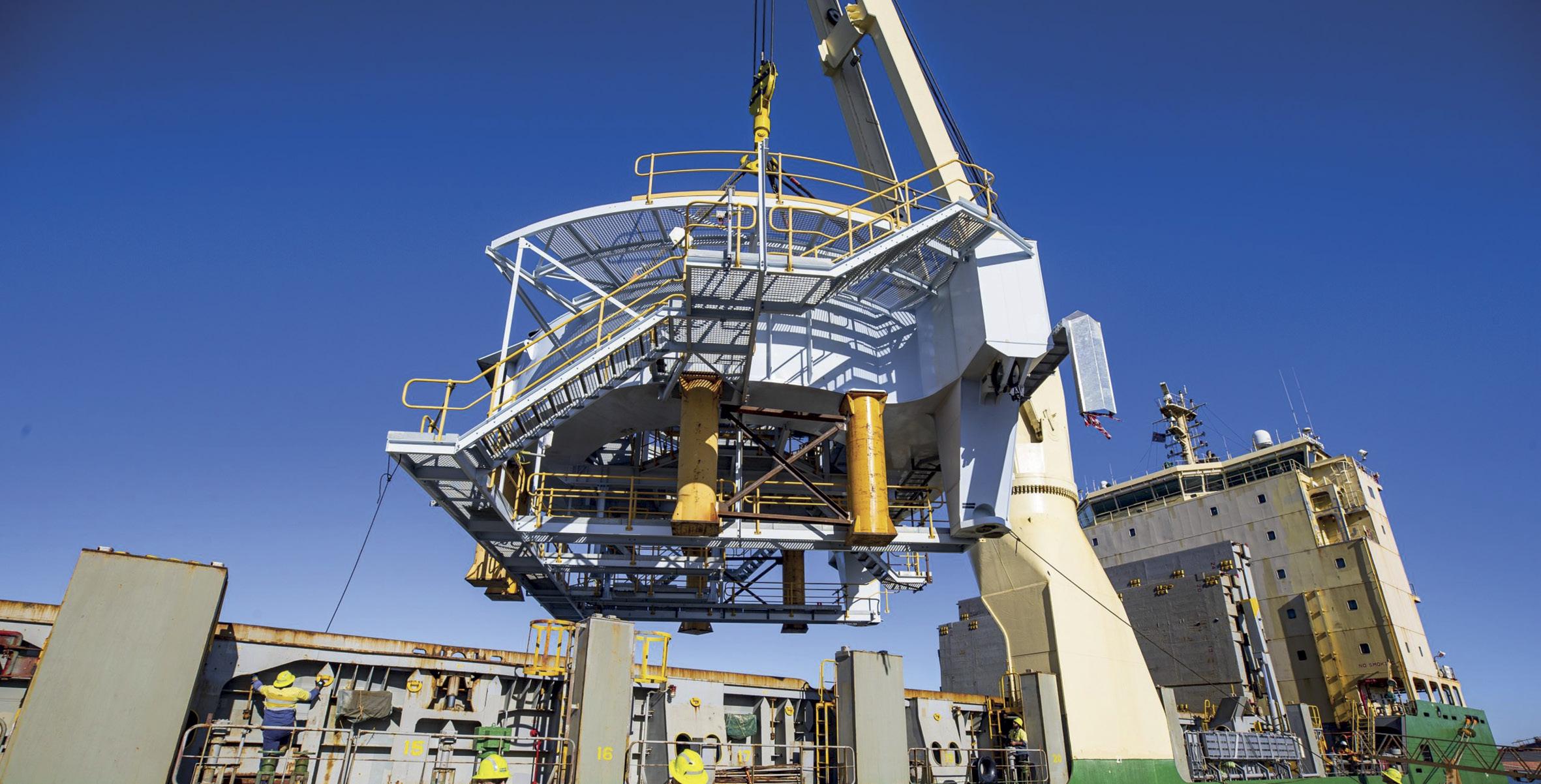
NMT then began the final part of the operation: moving the cargo to Nelson Point. “The super modules were transported on the full road closure over two nightshifts so as to limit the impact to the general public,” Bailey said. “The transport of eight kilometers from the port backstack to site took over eight hours on SPMTs.”
Once at the site gates, the goods were delivered into the nominated site laydown. A large amount of planning went into the site movement to make sure there was clear access to the site and rail approval, as the goods traversed active rails to reach the nominated unloading area.
REAPING BENEFITS OF PLANNING TIME
The time allocated for the careful planning paid off. “Our collaborative, team-oriented and hands-on approach proved a winning recipe for all stakeholders on this important project. Buy-in from our trusted service providers and a shared willingness to go the
extra mile ensured the project was executed without issue, on-time and more importantly, on budget,” Bailey said.
AAL Australia’s general manager Frank Mueller agreed: “We are delighted to continue our strong track record for NMT and thyssenkrupp Industrial Solutions, both of whom we are proud to have worked with in the past on domestic industrial projects across Australia.
“The local multipurpose shipping market is still challenging since Covid-19,” Mueller continued,
“with port disruptions and labor issues affecting schedules and normal operations. The Australian project sector itself has also experienced upheaval and will continue to weather difficult external conditions until a possible peak of investment of A$95 billion per annum in planned infrastructure between 2023-24 and 2025-26.
“We will therefore continue to ensure our services within the sector remain consistent and keep delivering for our customers despite any and all market challenges.” BB
Thomas Timlen is a Singapore-based analyst, researcher, writer and spokesperson with 31 years of experience addressing the regulatory and operational issues that impact all sectors of the maritime industry.
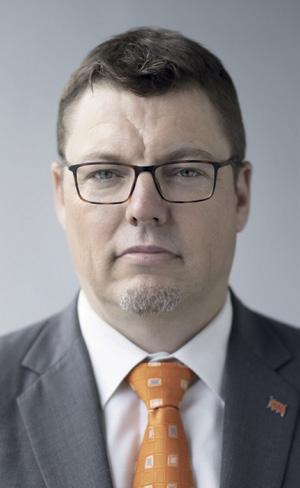
ISSUE 2 2023 76 BREAKBULK MAGAZINE www.breakbulk.com CASE STUDY
The unconventional size of the reclaimer components meant signifianct lifting and stowage challenges.
CREDIT: AAL SHIPPING
Frank Mueller AAL Shipping
AAL’s appointed port captains were described as “absolutely vital” to the successful operation of the project.
CREDIT: AAL SHIPPING





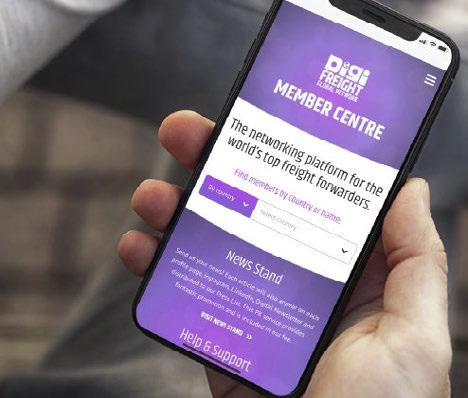












www.ufofreight.com ONE OF THE ONLY EXCLUSIVE FREIGHT FORWARDER NETWORKS IN THE WORLD ESTABLISHED IN 2000 ISO 9001 & ISO 14001 CERTIFIED UNIVERSAL FREIGHT ORGANISATION Cargo Connections provides independent forwarders access to a global network of agents who can handle their shipments, whilst working professionally under strict Membership Rules. The ISO 9001 and ISO 14001 certified organisation offers a Restricted Representation policy, which means membership will only be offered to a limited number of agents per country. www.cargoconnections.net NEED RELIABLE PARTNERS TO HANDLE YOUR FREIGHT FORWARDING NEEDS? Then join the international network with 100+ of the world’s top independent freight forwarders, located in 100+ countries, to increase your business. www.digifreight.live DigiFreight YouTube Our unique platform with built in time zones enables forwarders to connect with one another directly through their mobile device across several communication platforms (Skype, Zoom, Google Meet and WhatsApp). A project has come up and you don’t have time for a long back and forth email trail. Our powerful interface enables you to quickly schedule a meeting with your DigiFreight partner at a mutually convenient time with time zones automatically considered. Plus Face-to-Face Meeting in Croatia from 2 Oct 2023 - 04 Oct 2023 THE NEW ERA IN NETWORKING FOR THE FREIGHT FORWARDING INDUSTRY 12-14 November 2023 We are delighted to announce that our 12th Annual Summit will be held from 12-14 November 2023 at The Royal Cliff Hotel in Pattaya, Thailand. THAILAND 12th Annual Summit VIRTUAL MEETING HUB projectcargonetwork.com UK Based Head Office Established 12 Years Professional Online Training ISO 9001 & ISO 14001 330+ Specialist Members 120+ Countries New Virtual Meeting Hub Smartphone Service A project has come up and you don’t have time for a long back and forth email trail? Our powerful interface enables you to quickly schedule a virtual meeting with your PCN partners at a mutually convenient time (with time-zones automatically considered) via WhatsApp, Zoom, Google Meet or Skype. NETWORKING PLATFORM FOR THE WORLD’S TOP PROJECT CARGO SPECIALISTS MORE BUSINESS MORE CONNECTIONS MORE EVENTS pcntraining.com
Breakbulk Events & Media’s biweekly BreakbulkONE newsletter keeps the industry connected between Breakbulk events in Dubai, Rotterdam and Houston. Here’s a selection of recent subscriber favorites.
Subscribe at https://breakbulk.com/page/one
MAMMOET INSTALLS FIRST VILLA AT LUXURY RESORT
Dutch Operator Deploys 650-Tonne Capacity Crawler Crane
Netherlands-based heavy-lift specialist Mammoet has installed the first overwater villa orb at the Sheybarah Island Resort off Saudi Arabia’s Red Sea coast.
The prefabricated stainless-steel orb – one of an initial batch of four to arrive at the luxury location from the Port of Hamriyah in Sharjah in the United Arab Emirates – was installed on its foundation using a 650-tonne capacity Demag CC3800 crawler crane positioned on top of Mammoet’s modified ALE 250 barge.

The barge’s shallow draft reduced the disturbance to the archipelago’s sensitive marine environment, Mammoet said.
At the construction jetty, the Demag loaded and placed the first orb on the barge deck before sailing to the installation area. At the site, the barge was positioned using a hyperaccurate GPS system and the barge’s own winches to ensure precise alignment with the foundation.
The barge was then stabilized
using a retrofitted 300-tonne spud jacking system supplied by Combifloat – Mammoet’s partner for floating and self-elevating marine equipment used for nearshore operations. Lifting, lowering and re-positioning of the unit was achieved through a locally controlled jacking mechanism and a four-point mooring system.
The crane was raised to lift the orb into place – its superlift replaced by a system designed specifically for the project whereby the back mast of the CC3800 was “tied back” to the barge, giving the crane enough capacity to place the orb onto the foundation without requiring the additional mass of a superlift tray.
“Creative engineering at its best,” said Robert van Tinteren, lead project engineer for Mammoet. “It has been an exciting nine months building up to this point, but it never gets tedious to see the incredible things we at Mammoet can do when we put our minds to it!”
Mammoet was awarded a contract
to transport and install all 73 villa pods last May. The operator is pairing up with P&O Maritime Logistics to help ship the units from the UAE.
The Sheybarah Island Resort is a key part of the kingdom’s Red Sea Project, a luxury eco-tourism and hospitality project being built over 28,000 square kilometers of pristine lands and waters along Saudi’s west coast.
The project, funded by Saudi’s Public Investment Fund, or PIF, will eventually comprise 50 hotels and 1,300 residential properties across 22 islands and six inland sites. It will also house golf courses, luxury marinas and entertainment facilities.
First guests are expected to arrive this year with the launch of three hotels as well as the first phase of the Red Sea International Airport. The entire development is slated for completion by 2023. BBONE
Mammoet will be exhibiting at Breakbulk Europe 2023, taking place on June 6-8 at Rotterdam Ahoy. Visit: europe.breakbulk.com/home

CREDIT: MAMMOET
78 BREAKBULK MAGAZINE www.breakbulk.com ISSUE 2 2023
SHELL, TECHNIP AND ZACHRY TO ENGINEER TEXAS CCP PROJECT
Shell Catalysts & Technologies, Technip Energies and Zachry Group have won a front-end engineering and design, or FEED, contract for a carbon capture project, or CCP, at U.S. power producer Calpine’s Baytown Energy Center in Texas.
The project will be designed to capture some two million tonnes per year of CO 2 , which represents 95 percent of carbon emissions from processed flue gas released at BTEC, a natural gas combined cycle power plant, or CCGT.
Shell Catalysts & Technologies and Technip have been partners in an alliance for more than decade to market and execute projects using Shell’s Cansolv carbon capture technology.
Zachry’s scope will comprise outside battery limits engineering, site preparation and construction planning. The Texas-based engineer will also develop the project’s cost estimate and schedule.
“By working closely with Technip Energies, which is performing the engineering and procurement of the Cansolv plant, and Zachry Group, which is performing the balance of plant engineering, procurement and construction for the project, we will deliver a complete end-to-end solution for Calpine that could serve as a blueprint in the industry,” said Nick Flinn, vice president of decarbonization technologies at Shell Catalysts & Technologies.

Carbon capture and storage, or CCS, is tipped to be a major source of cargo-carrying opportunities for breakbulk and project cargo in the coming years. The technique is deployed in power plants and other industrial facilities to trap and compress CO 2 before transporting it to special sites for underground storage.
The technique is seen as a critical tool to help decarbonize the energy sector, with large-scale CCS plants demanding breakbulk support to transport and install pipelines, storage tanks, giant compressors, processing equipment, ship-handling facilities and other oversized components.
Calpine, the largest generator of electricity from natural gas and
geothermal resources in the U.S., operates BTEC as a natural gasfired power plant that incorporates combined-cycle and cogeneration technologies.
“Our Baytown project is an important part of our far-reaching efforts to showcase the full potential of CCS as a critical emissions-reduction technology and we are eager to continue with its development,” said Caleb Stephenson, executive vice president of commercial operations at Calpine.
Shell, Technip and Zachry Group are members of the Breakbulk Global Shipper Network, a worldwide group of shippers involved in the development of industrial projects and their components. BBONE
SWIRE PROJECTS LAUNCHES NEW AUSTRALIA ROUTE
Swire Projects has completed its first voyage to Western Australia carrying 88 ore cars for global mining company BHP.
Swire Projects, the heavy-lift shipping services division of Singapore-based Swire Shipping, deployed its 19,000-dwt multipurpose vessel Johnnie Bryan to ship the cars from Dalian in China to Port Hedland in Australia’s Pilbara region.
The 480-tonne-capacity vessel arrived and discharged the cargo in Port Hedland in January.
The company said it was planning more regular sailings to the region in the near future.
Speaking to Breakbulk, Namir Khanbabi, general manager of Swire Projects, said Western Australia was a “region of focus.”
“We feel that Swire Projects’ expertise in projects and heavy-lift shipping services can offer a unique and valuable solution for the project sector within mining, oil and gas and wind in the region, which is further enhanced by Swire Shipping’s recently improved
multipurpose liner shipping service frequency to 18 days from Singapore to Port Hedland,” Khanbabi said. Swire projects was established in October 2020 to provide specialist shipping services to the energy, renewables and infrastructure sectors.
BBONE
Parent company Swire Shipping, the deep-sea ship owning and operating arm of the Swire Group, will be exhibiting at Breakbulk Europe, taking place on June 6-8 at Rotterdam Ahoy. Visit: europe.breakbulk.com/home
www.breakbulk.com BREAKBULK MAGAZINE 79 BREAKBULKONE
Carbon capture is tipped to be a major source of breakbulk work in the coming years.
CREDIT: SHELL
PROJECTS IN THIS ISSUE
Project: Krško Nuclear Power Plant (page 34)
Country: Slovenia
Developer: n/a
Project Phase: Initiation
Details: Authorities are mulling the construction of a second reactor at the 696-MWe plant.
Project: Dukovany and Temelín Nuclear Power Plants (page 35)
Country: Czech Republic
Developer: n/a
Project Phase: Initiation
Details: Government wants to build new reactors at both plants, part of plans to replace older reactors in operation that are expected to be shut down from 2035.
Project: Borssele Nuclear Power Plant (page 35)
Country: The Netherlands
Developer: n/a
Project Phase: Initiation
Details: Government planning to install two new reactors.
Project: Hinkley Point C Nuclear Power Plant (page 35)
Country: UK
Developer: EDF Energy
Project Phase: Construction
Details: 3.2 GWe plant in southwest England expected to start up in 2028.
Project: Sizewell C (page 35)
Country: UK
Developer: EDF Energy
Project Phase: Construction
Details: 3.2 GWe plant in southern England slated to begin operations in 2024.
Project: Hyguane Green Hydrogen Plant (page 40)
Country: French Guiana
Developer: European Space Agency; French space agency
CNES
Project Phase: Pre-construction
Details: Pilot plant within Spaceport aims to produce 130 tonnes of clean hydrogen per year to be used in “green” space flights.
Project: ITER (page 44)
Country: France
Developer: Collaboration between multiple countries
Project Phase: Construction
Details: ITER experiment is designed to prove the feasibility of fusion – the nuclear reaction that powers the sun and the stars – as a large-scale sustainable source of energy. The project is slated to begin initial operations in 2025.
Project: Hywind Tampen Offshore Wind Project (page 54)
Country: Norway
Developer: Equinor
Project Phase: Post-construction
Details: World’s largest floating offshore wind plant in North Sea is providing clean power to nearby oil and gas installations. Brought online in November with four more turbines slated for start-up in 2023.
Project: Rincon Lithium Plant (page 64)
Country: Argentina
Developer: Rio Tinto
Project Phase: Pre-construction
Details: Rio Tinto acquired Rincon plant last year for US$825 million. Small starter plant with capacity of 3,000 tonnes per year of battery-grade lithium expected to begin operations in 2024.
Project: Ruwais Derivatives Park (page 68)
Country: United Arab Emirates
Developer: Ta’ziz, a JV between ADNOC and ADQ
Project Phase: Construction
Details: Chemical plants are being installed at an industrial complex at Ruwais, Abu Dhabi.
Project: Ras Al Khair crude oil-to-chemicals plant (page 68)
Country: Saudi Arabia
Developer: SABIC, Saudi Aramco
Project Phase: Construction
Details: SABIC and Aramco plan to build a 400,000 barrels per day oil-to-chemicals plant at Ras Al Khair in eastern Saudi Arabia.
Project: King Salman Energy Park, or SPARK (page 72)
Country: Saudi Arabia
Developer: Saudi Aramco, Hutchison Ports
Project Phase: Construction
Details: A 50-square-kilometer energy and logistics hub to fuel Saudi diversification plans.

Project: Sheybarah Island Resort (page 78)
Country: Saudi Arabia
Developer: Saudi Public Investment Fund
Project Phase: Construction
Details: Sheybarah Island Resort is a key part of the kingdom’s Red Sea Project, a luxury eco-tourism and hospitality project being built over 28,000 square kilometers of land and waters along Saudi’s west coast.
Project: Baytown Energy Center, or BTEC, Carbon Capture
Project (page 79)
Country: US
Developer: Calpine
Project Phase: Pre-construction
Details: Project at the natural gas combined cycle power plant BTEC will be designed to capture two million tonnes per year of CO2. Shell, Technip and Zachry will engineer the project.
ISSUE 2 2023
80 BREAKBULK MAGAZINE www.breakbulk.com BACK PAGE
PROJECT CARGO SOLUTIONS
FROM PLANNING TO EXECUTION
MSC offers bespoke end-to-end solutions for your project cargo. Combining our global port coverage, special equipment and expert teams, we guide you through each step of the transport process. Your out-of-gauge and breakbulk cargo will be in safe hands.
MOVING THE WORLD, TOGETHER. msc.com/project
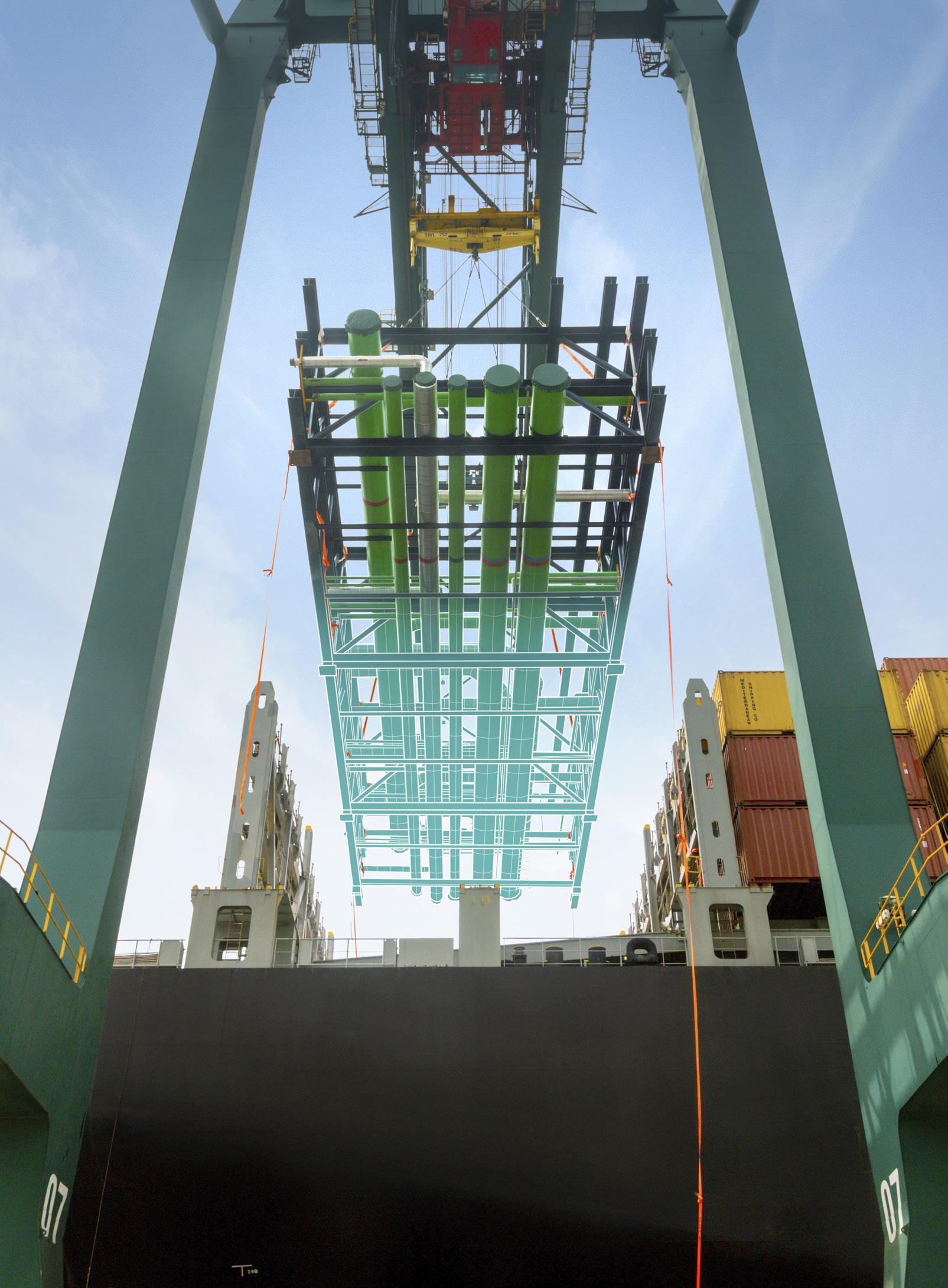

















 Project logistics specialist BDP International moves module for UAE energy project.
CREDIT: BDP
Project logistics specialist BDP International moves module for UAE energy project.
CREDIT: BDP












































 Tim Killen
Tim Killen








































 Balancer
Balancer







 BY JOHN BENSALHIA
BY JOHN BENSALHIA











 Kelly Doruijter, the first woman to hold an ECOL license.
CREDIT: ESTA
Kelly Doruijter, the first woman to hold an ECOL license.
CREDIT: ESTA




























 BY ASMA ALI ZAIN
BY ASMA ALI ZAIN




























